The Series One minicomics were written by Donald Glut and illustrated by Alfredo Alcala. The stories introduced the jungle-bred He-Man and the concept of a magical sword split into two parts.
Glut wrote of ancient magic and technology left over from a great war, and Alcala provided some of his best Masters of the Universe artwork for the minicomics in this series. His vision of Eternia is wild and elemental.
These are the stories which established the original barbarian canon. This rightly remains many fans’ favourite incarnation of the Masters of the Universe property.
HE-MAN AND THE POWER SWORD

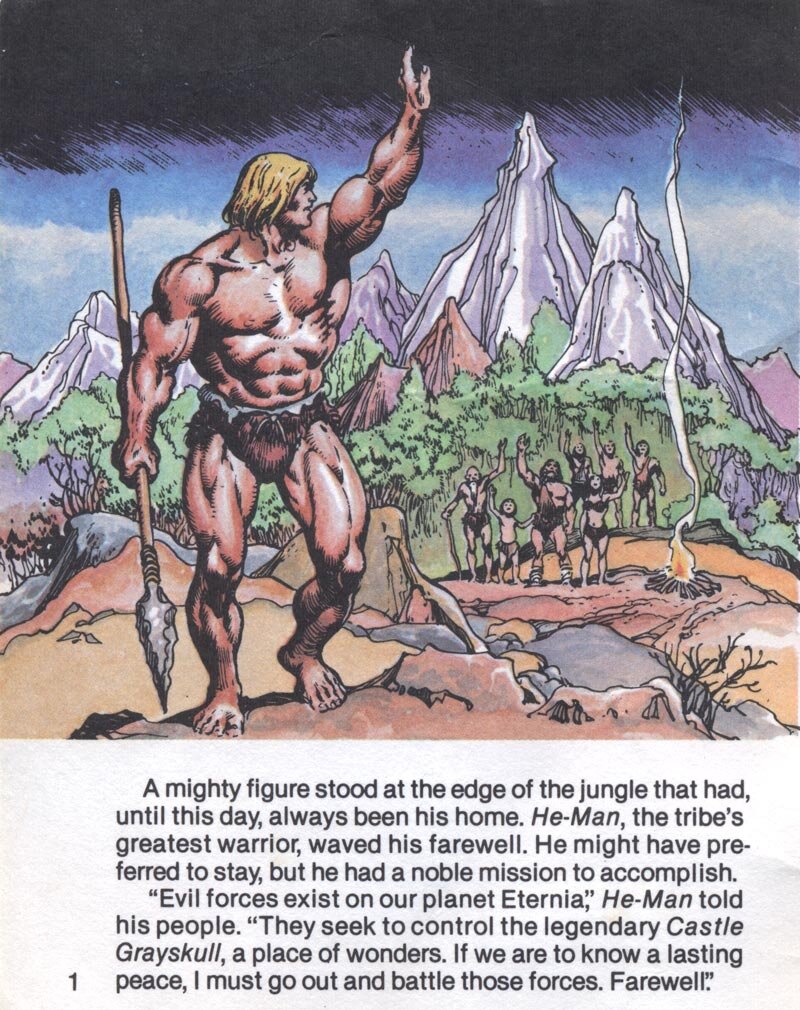

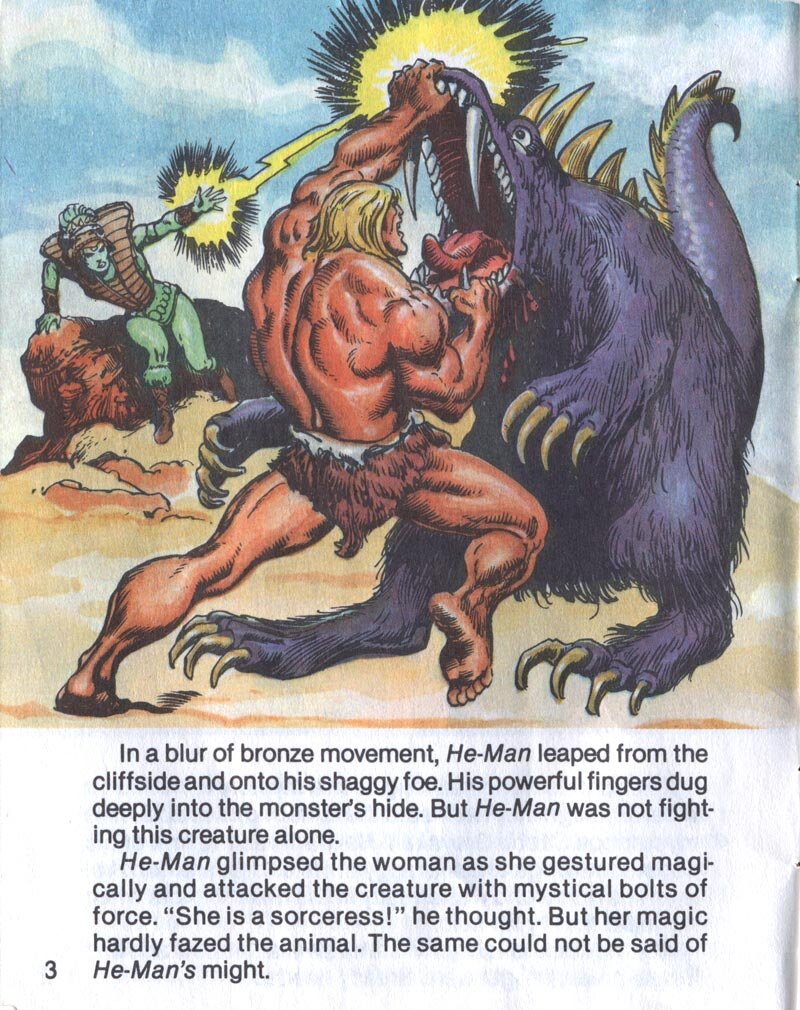
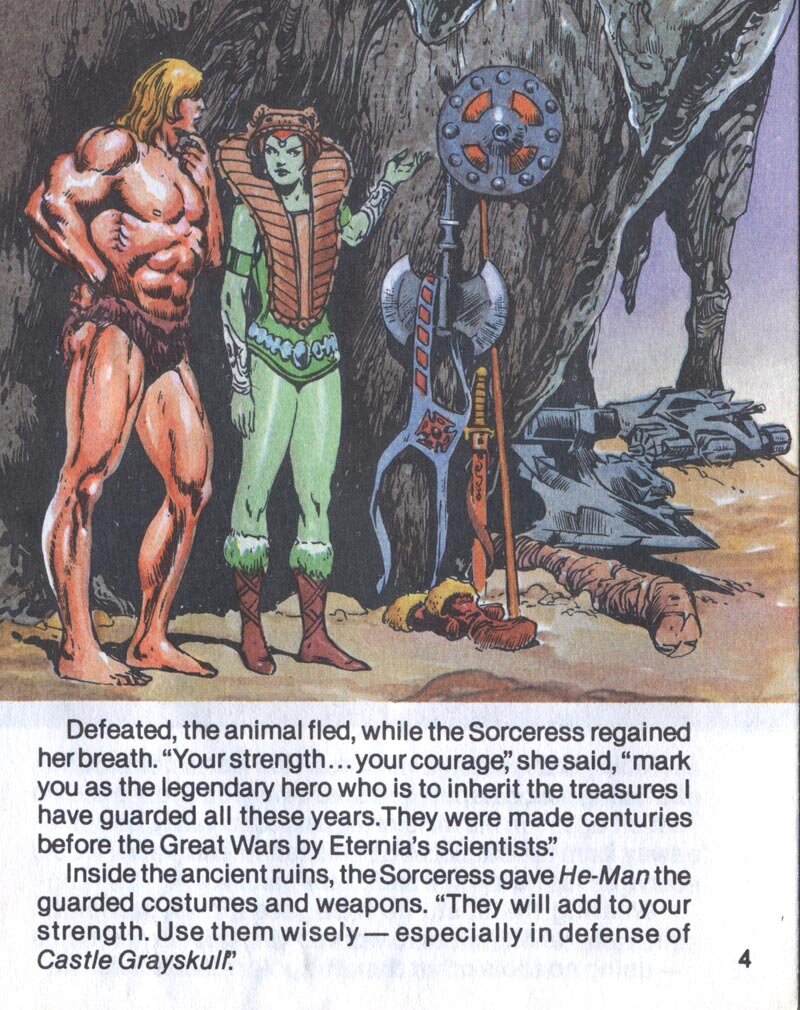
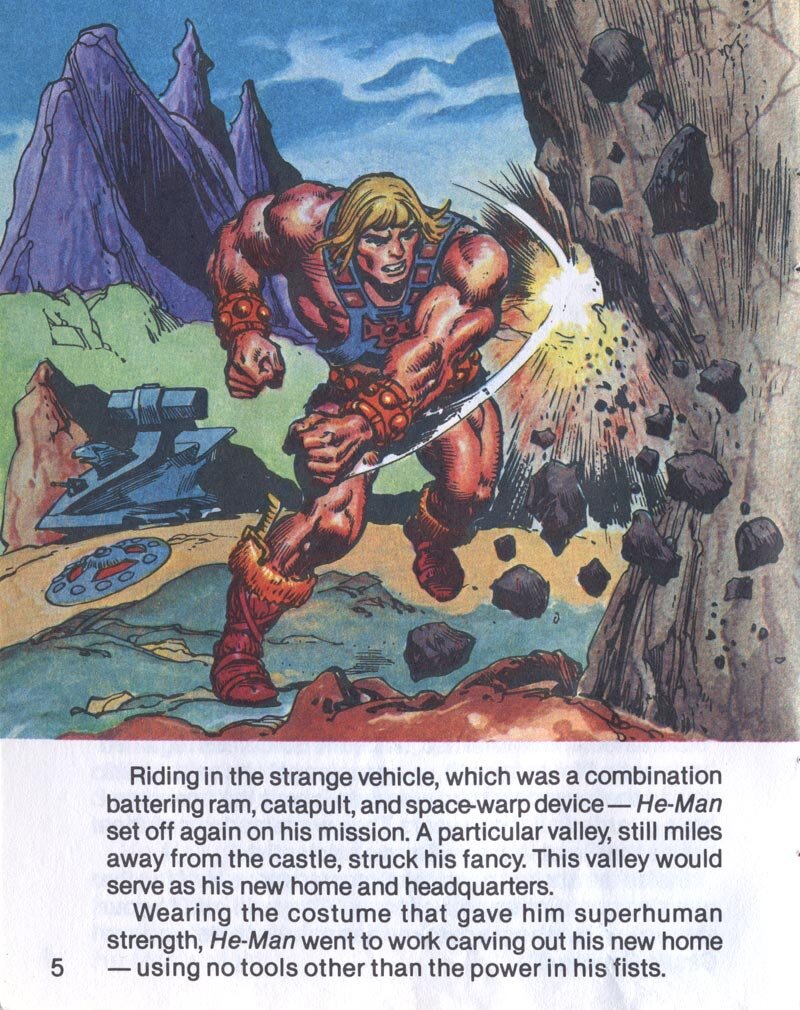
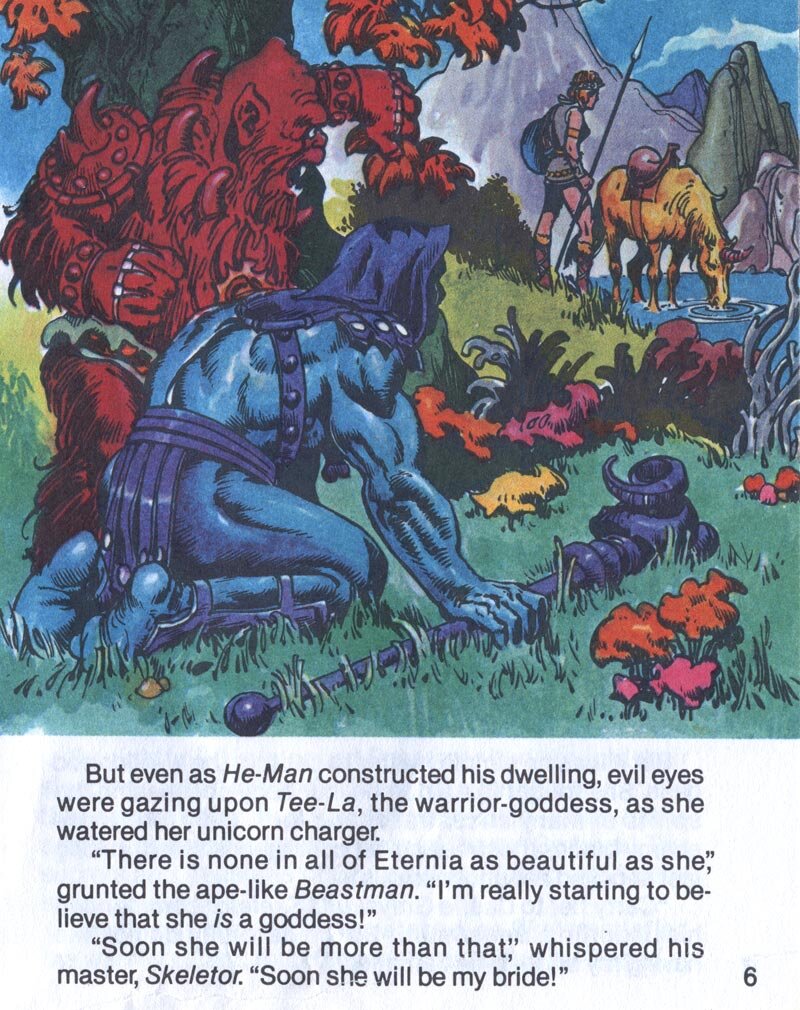
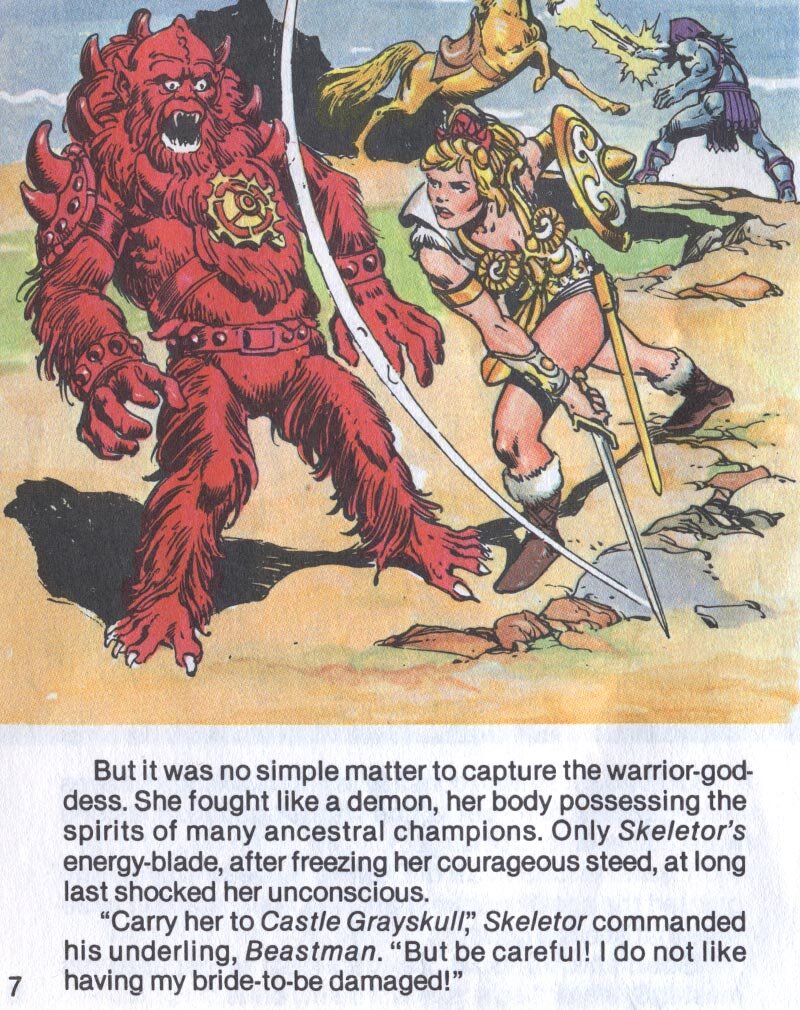
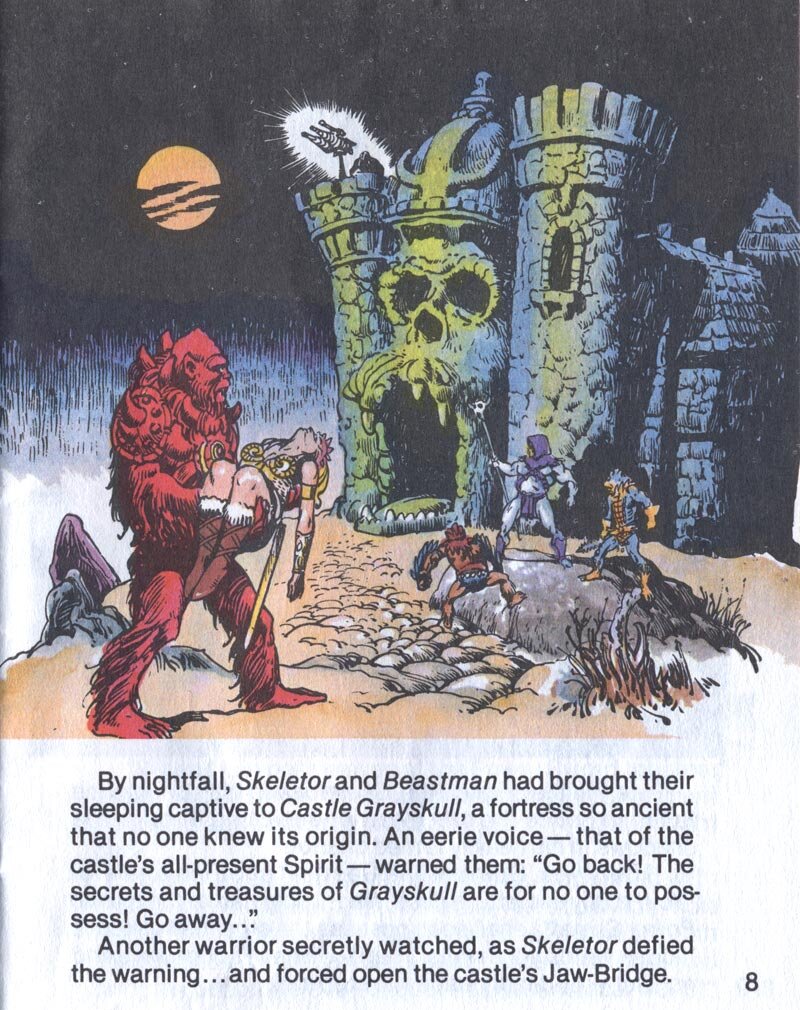
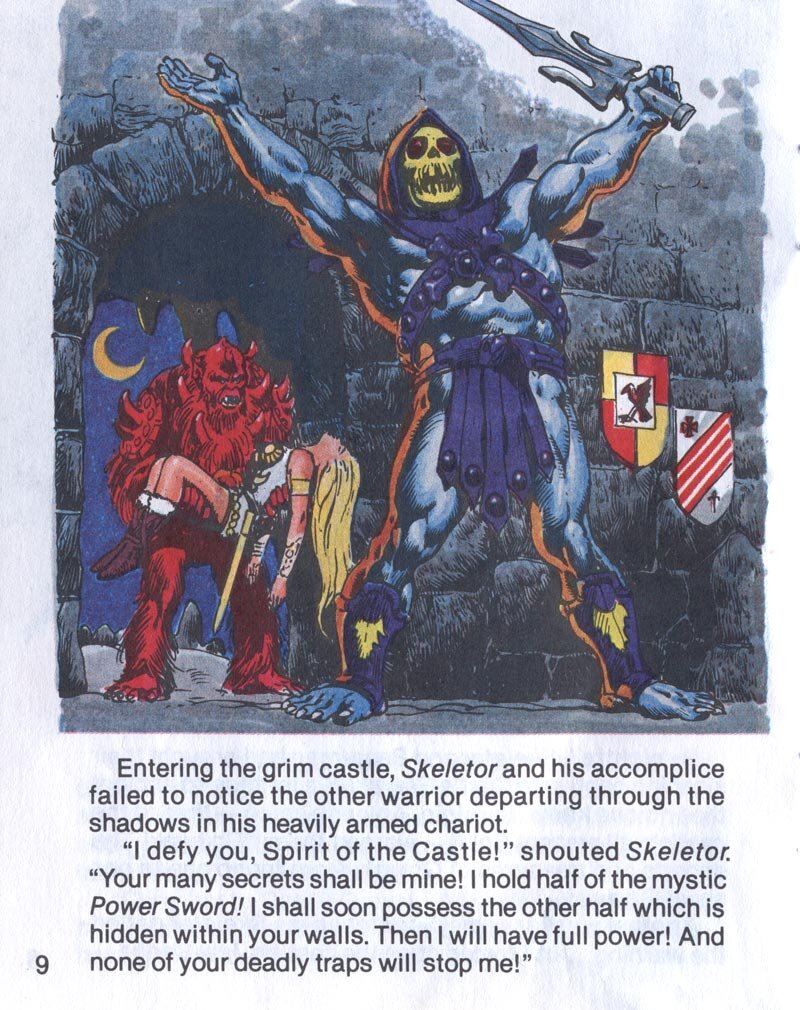
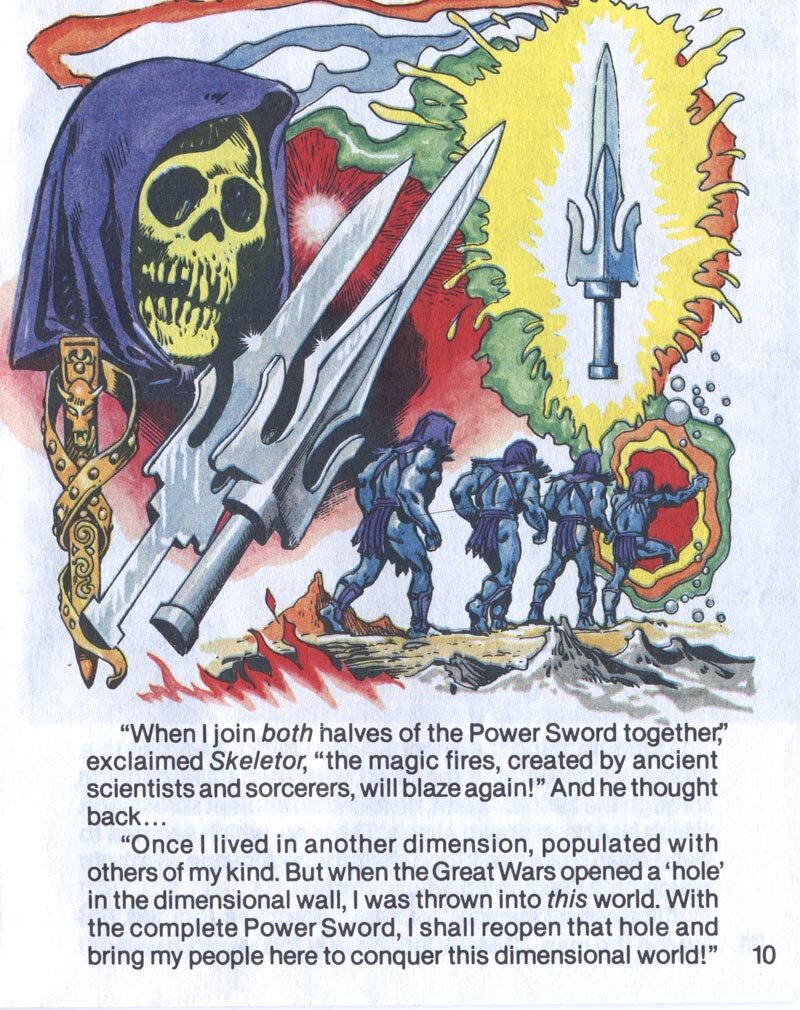
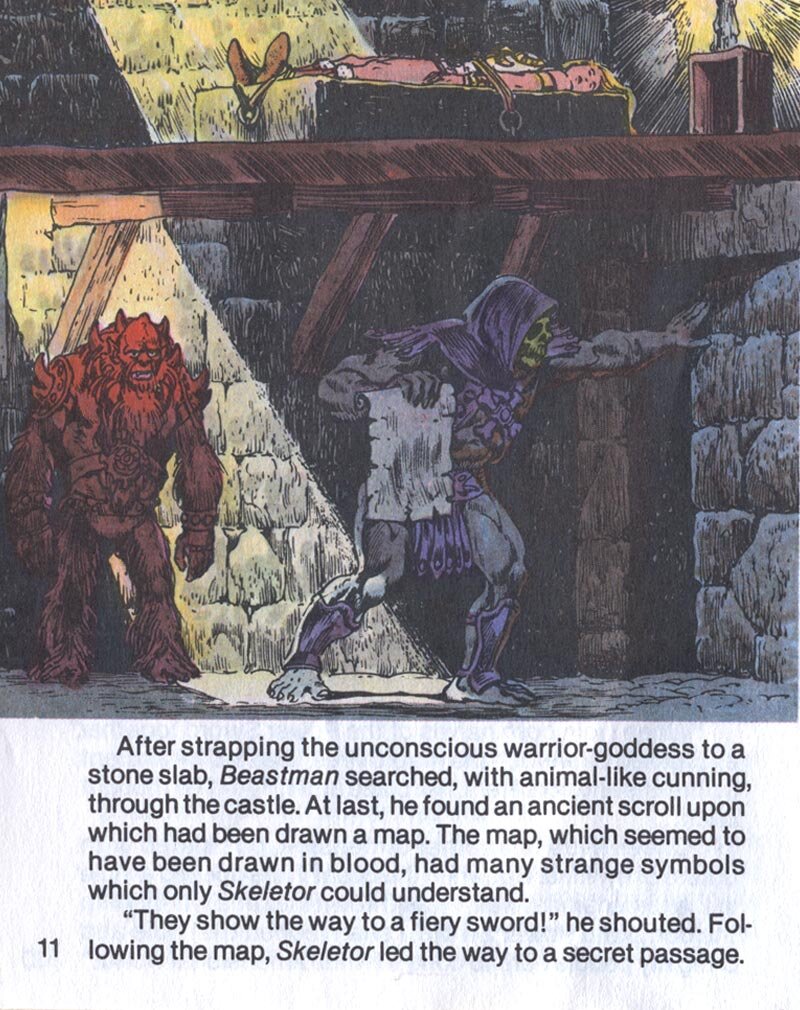
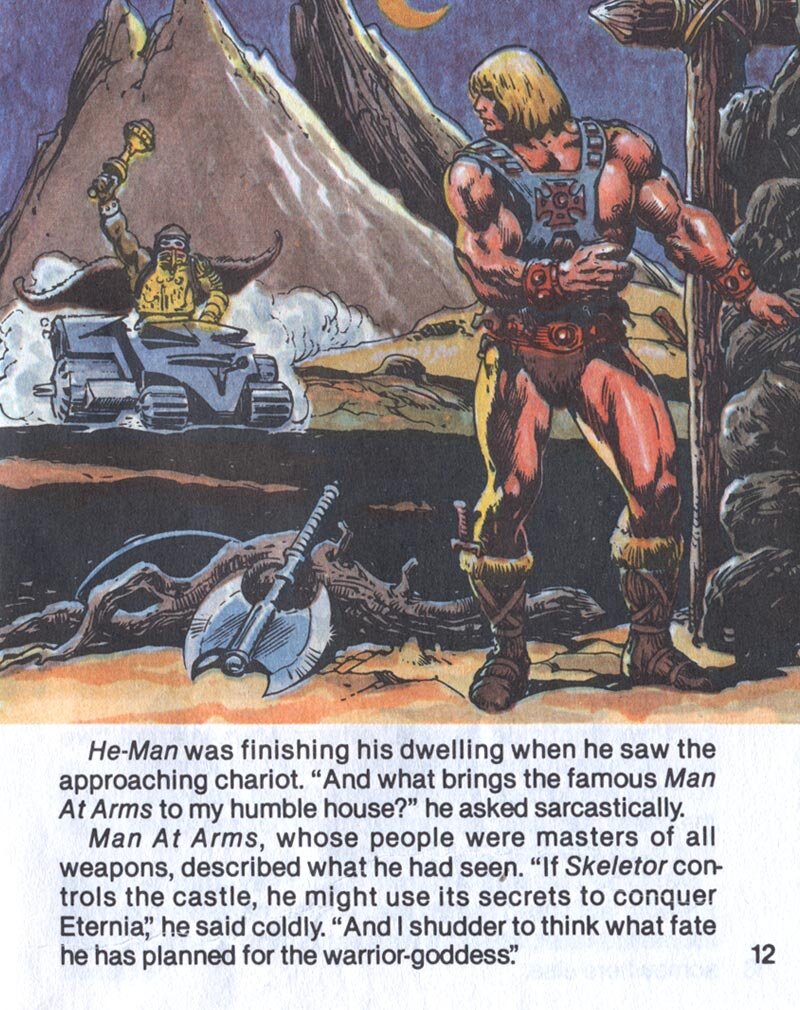
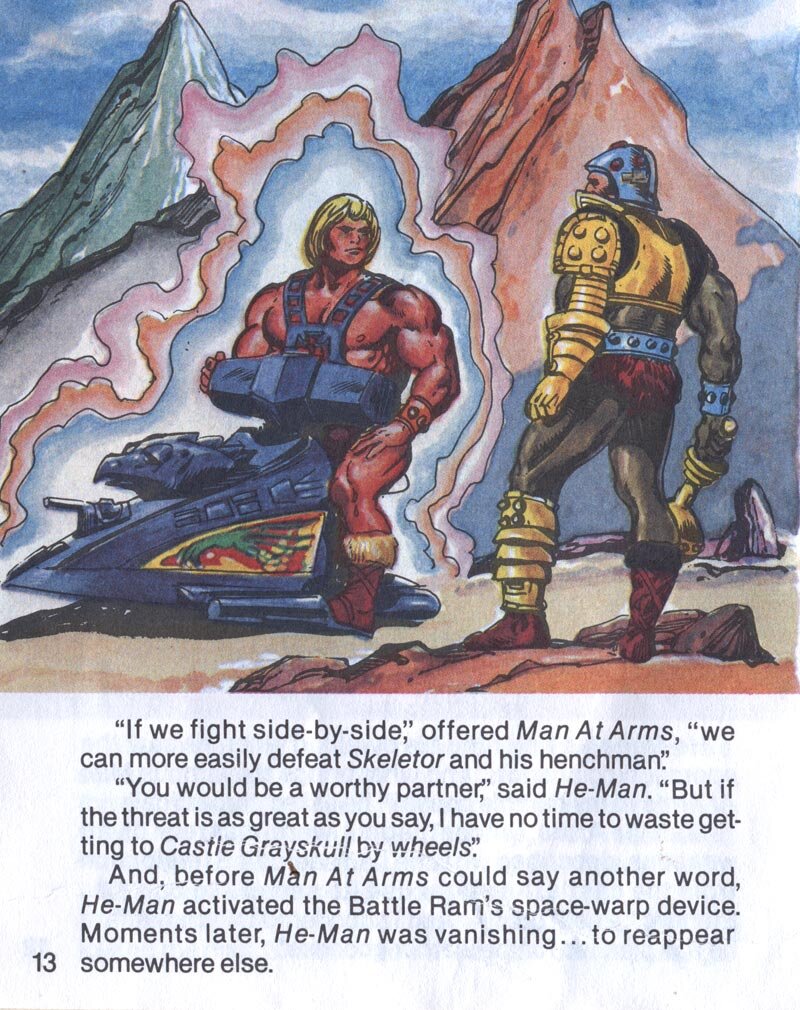
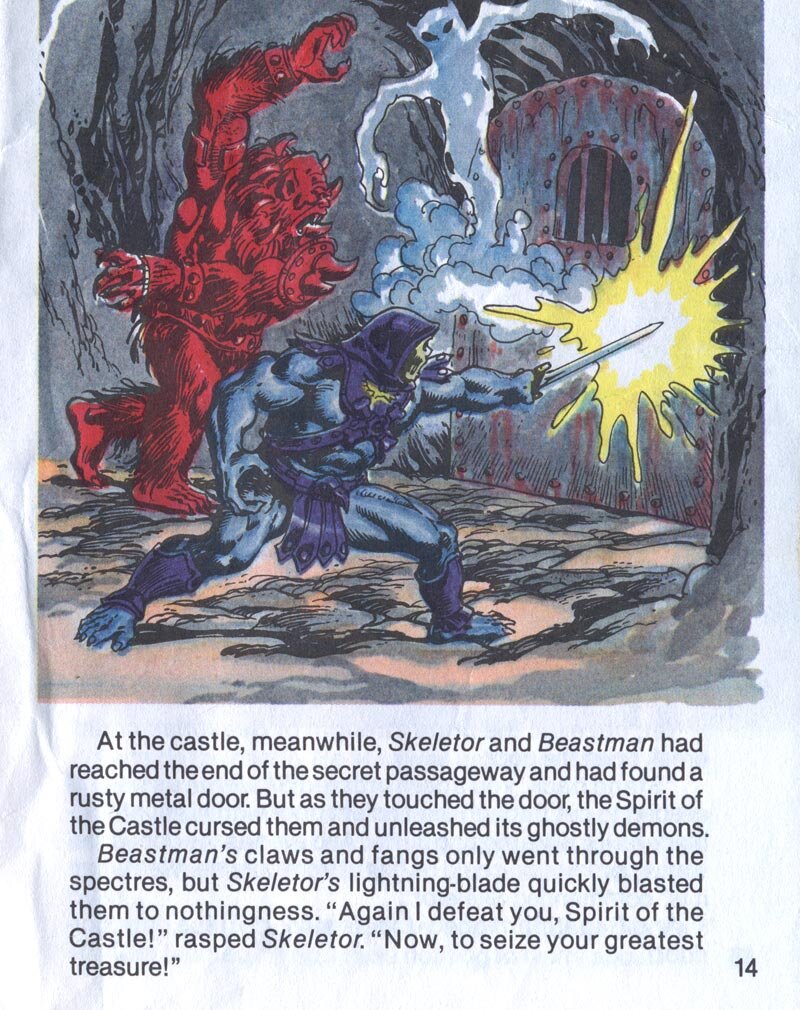
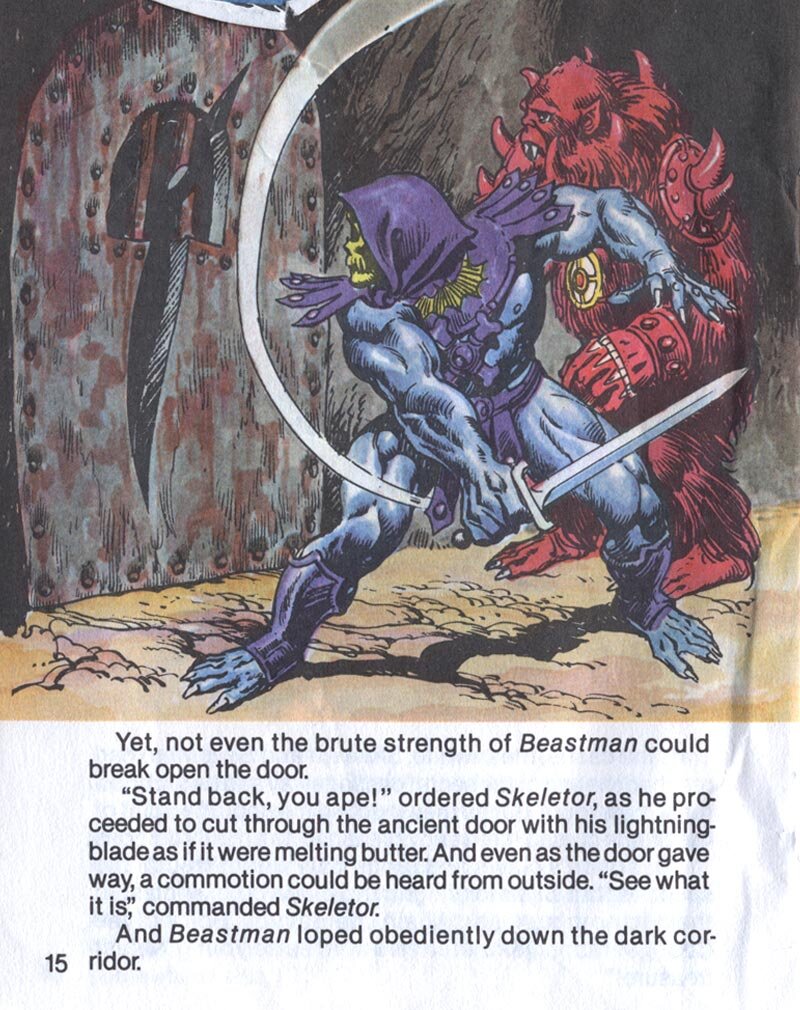
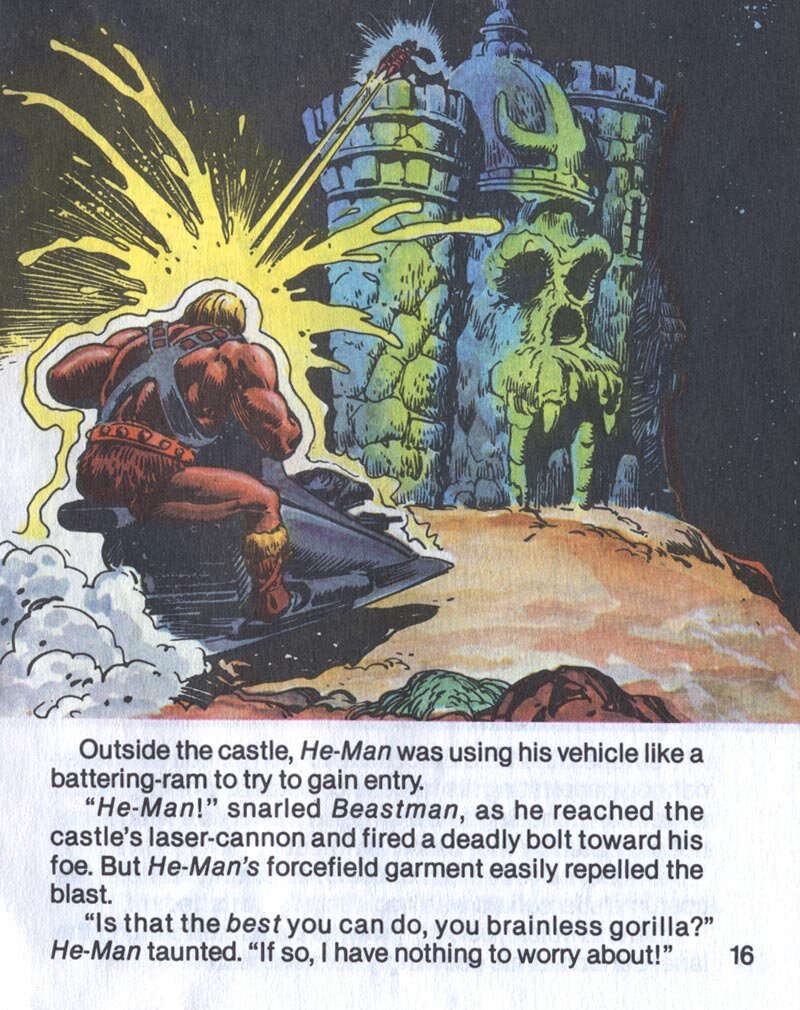
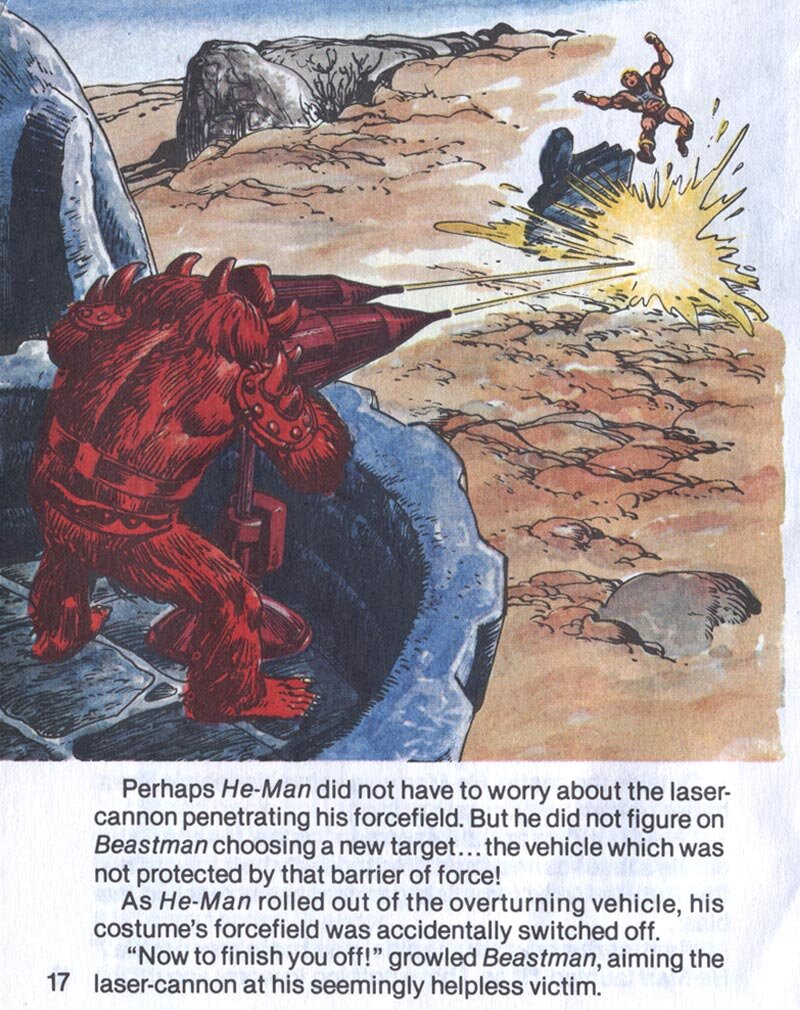
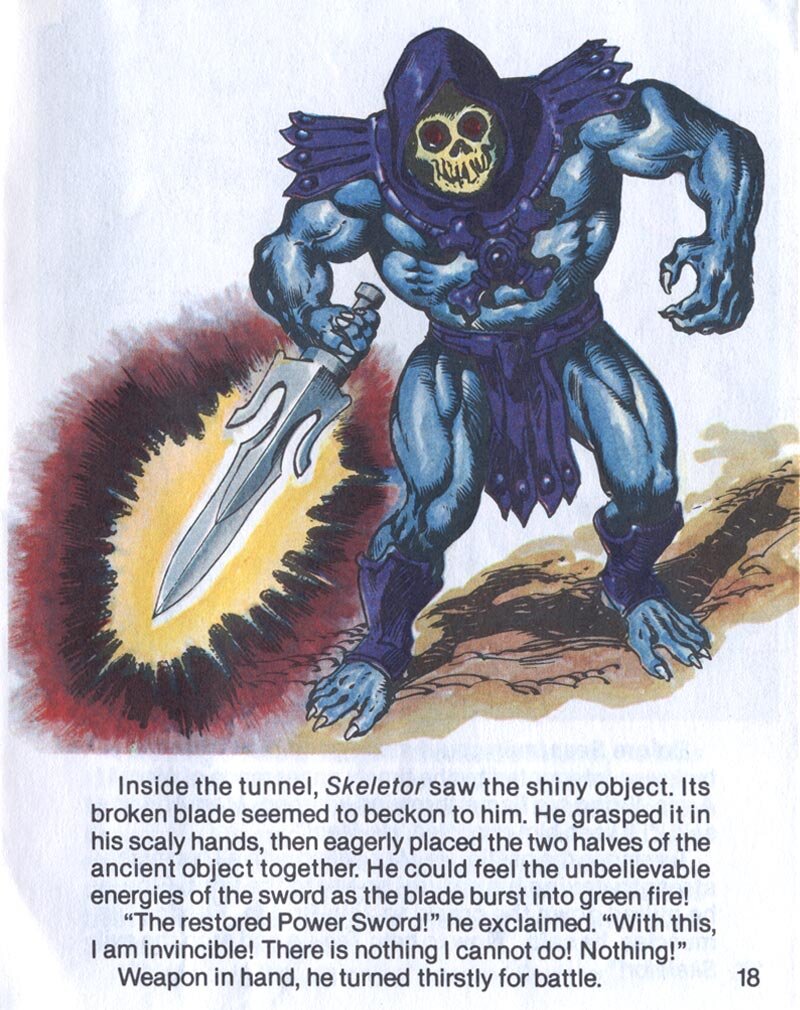
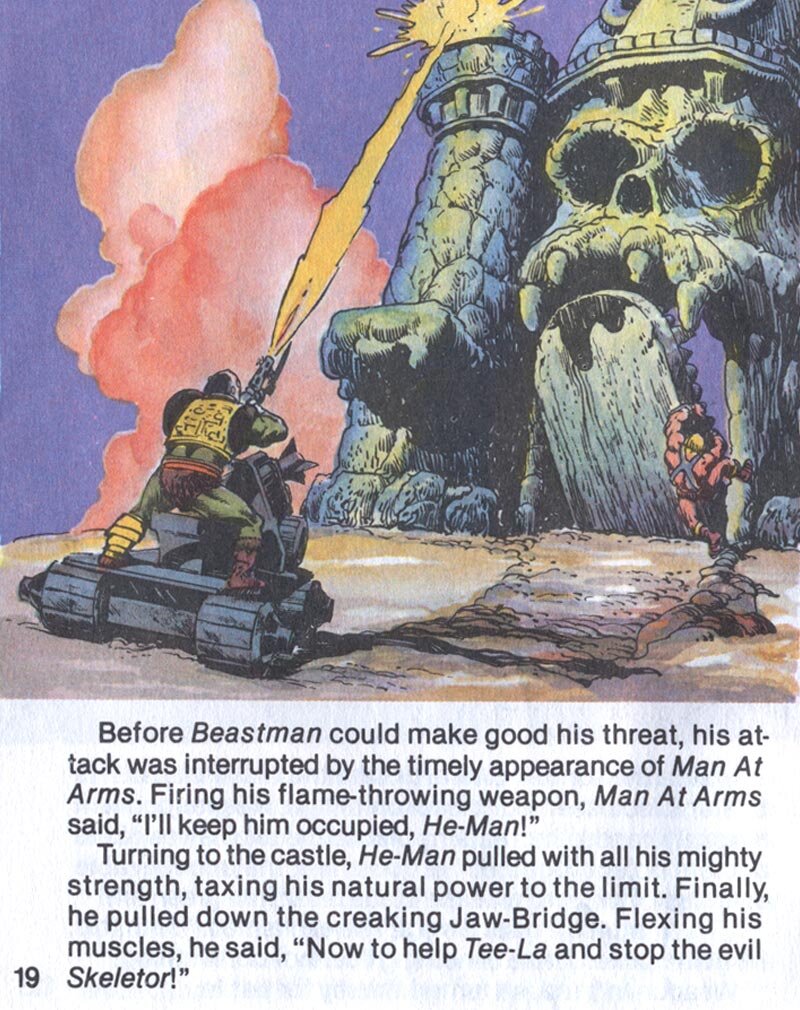
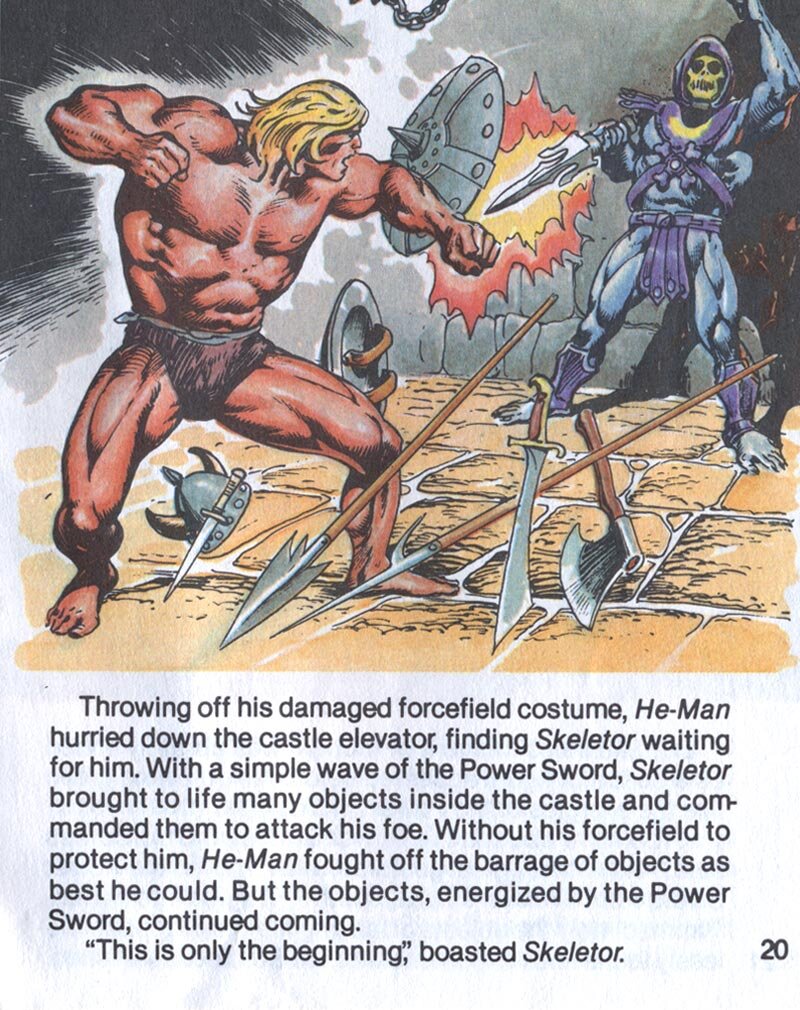
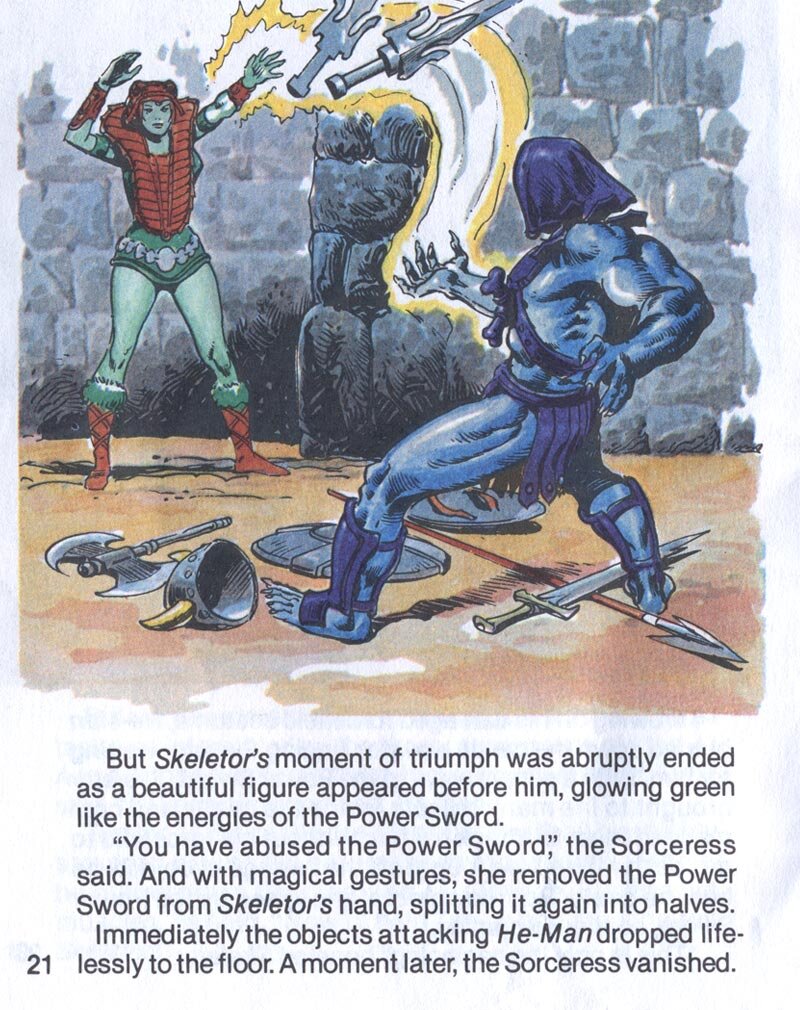
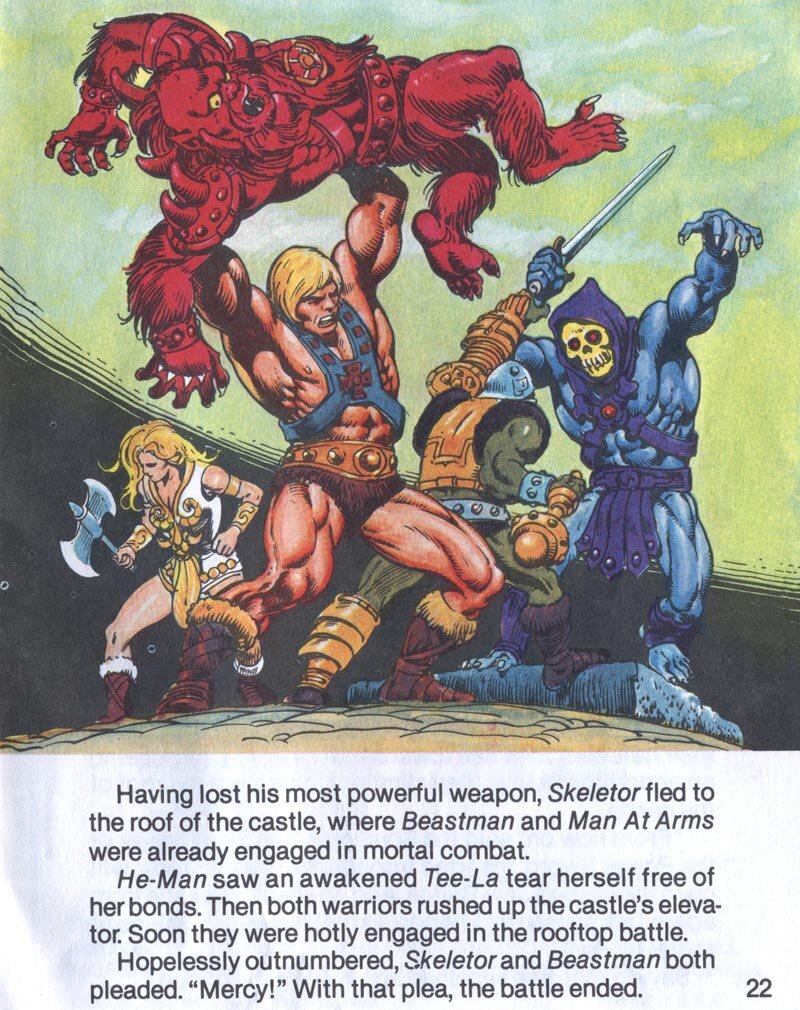
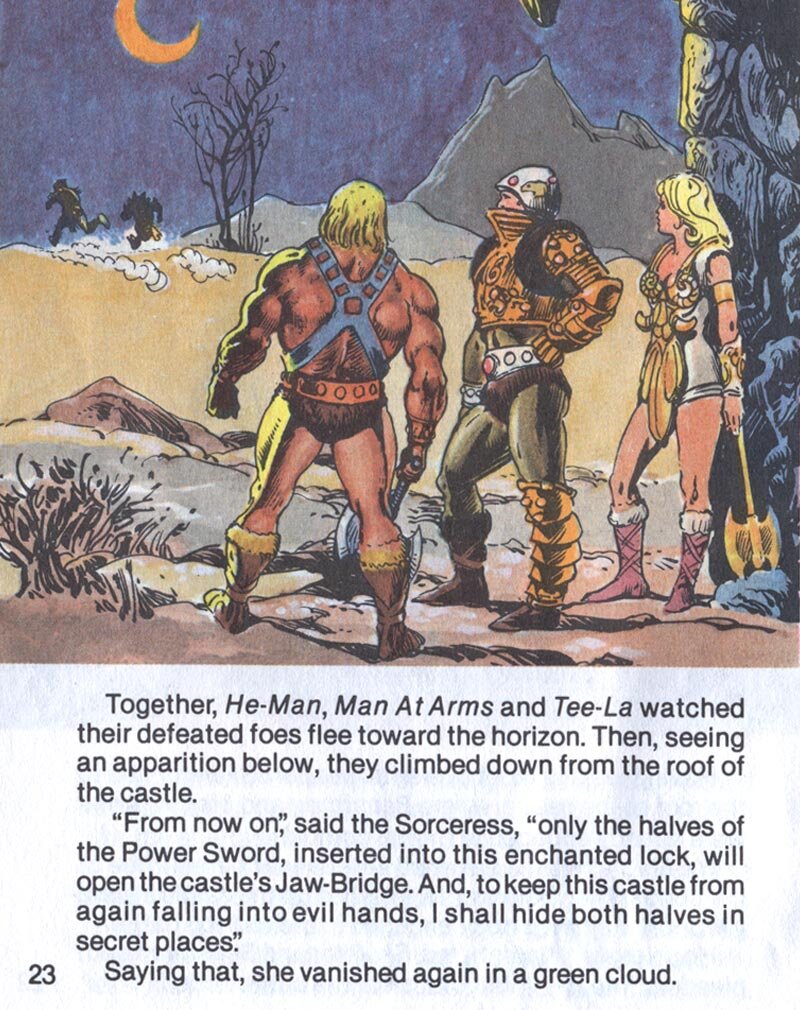
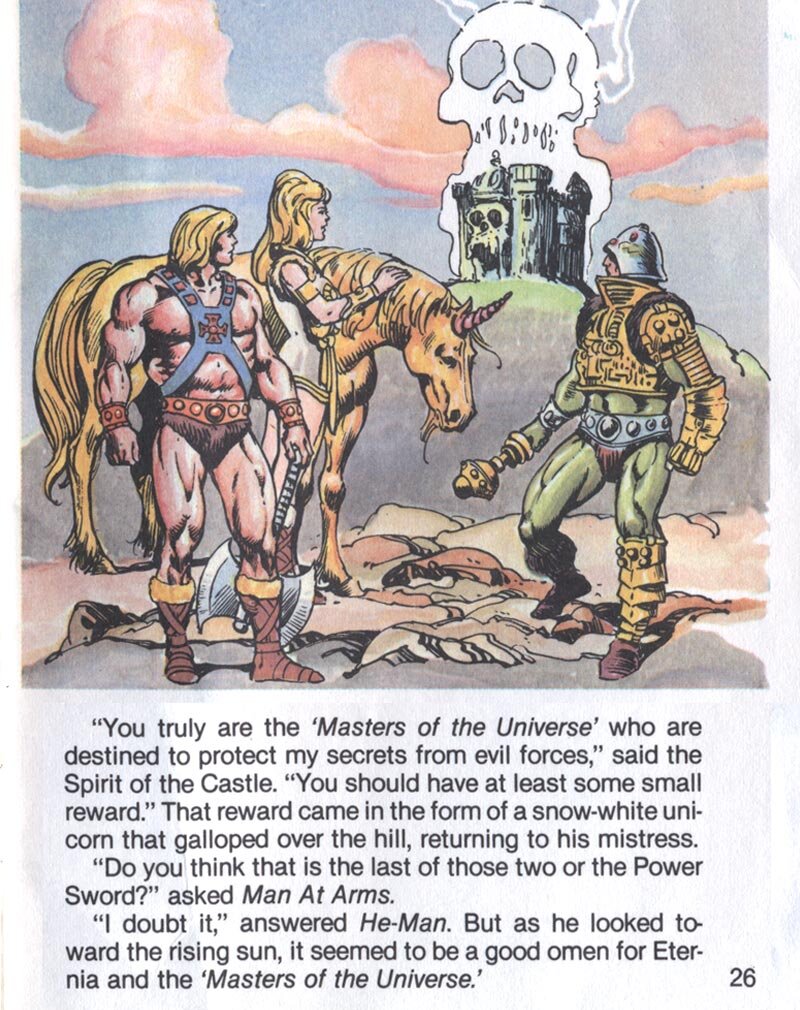
He-Man and the Power Sword is the story which introduces He-Man. When he leaves his tribe he is already aware that evil forces threaten Castle Grayskull. We learn that He-Man’s strength is enhanced by magical weapons.
This is the only occasion when the Sorceress character is shown with green skin. Beast Man and Teela are written as Beastman and Tee-La respectively. Skeletor breaks into Castle Grayskull simply by forcing the jawbridge.
Castle Grayskull is so ancient that no one knows its origin. (Designer Mark Taylor imagined the fortress growing straight out of the ground.) The castle contains a spirit that utters warnings and other proclamations.
Skeletor is a demon from another realm who lived among others of his kind. A great war caused a dimensional rift and dragged him to Eternia. He possesses part of the Power Sword and seeks to combine the halves.
Both parts of the Power Sword are recovered and hidden by the Sorceress. The Spirit of the Castle refers to He-Man and his allies as the Masters of the Universe, thereby reserving the title for the Heroic Warriors.
KING OF CASTLE GRAYSKULL
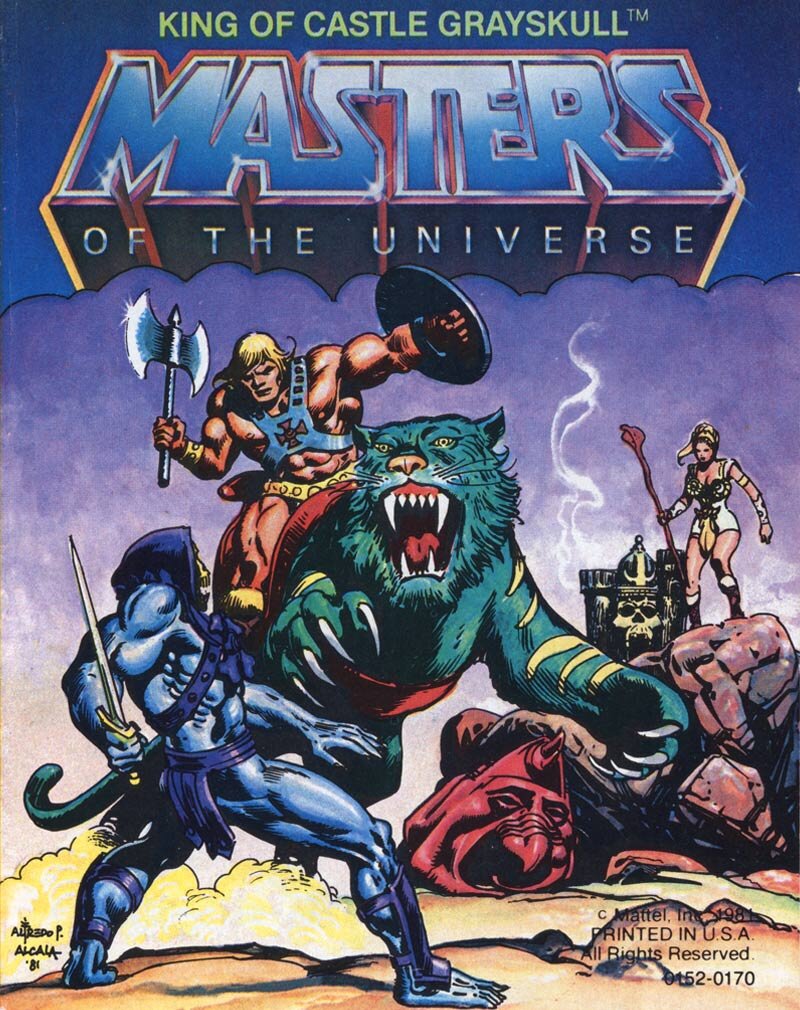
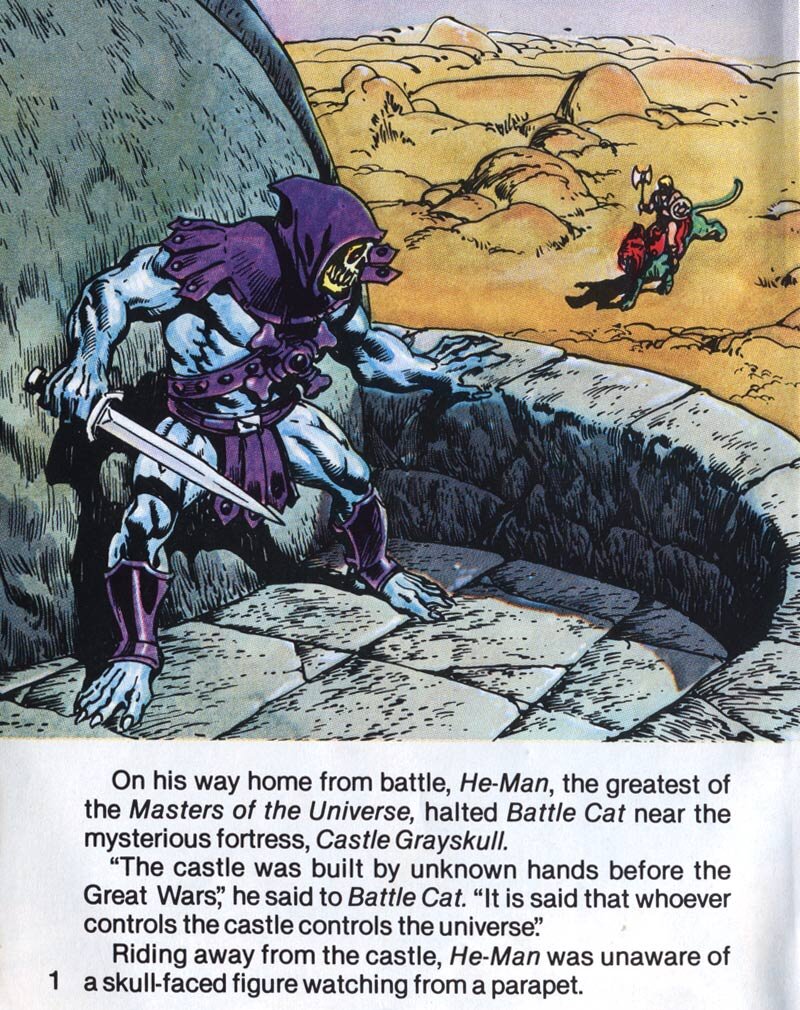
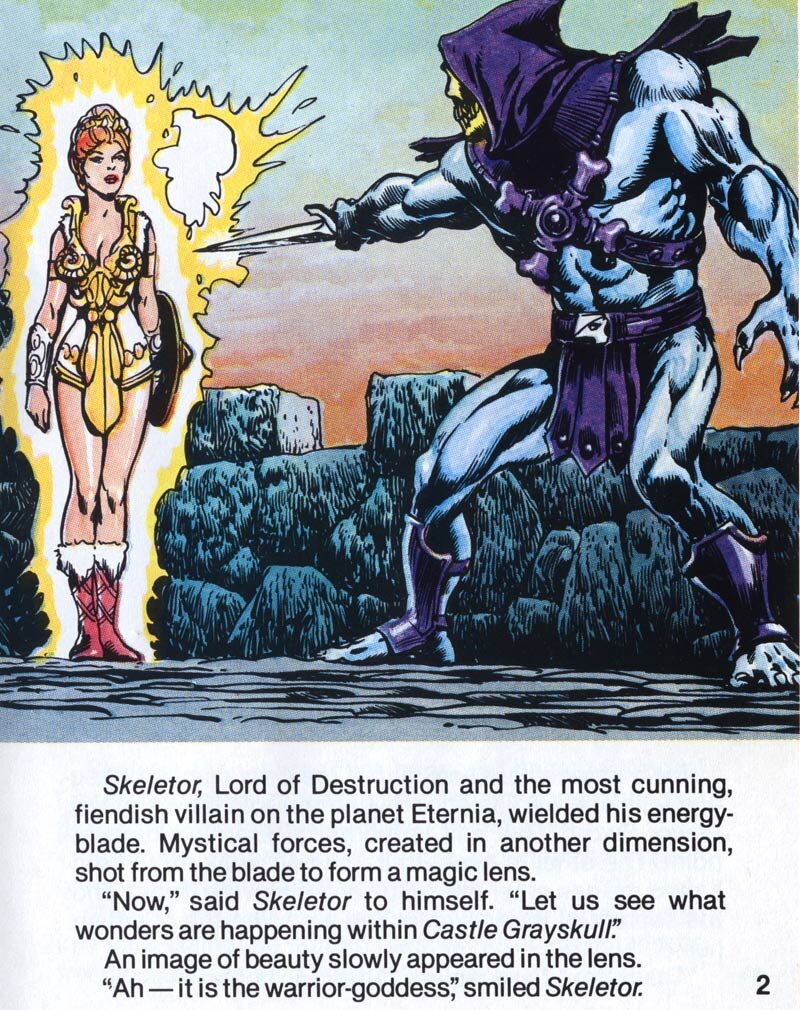
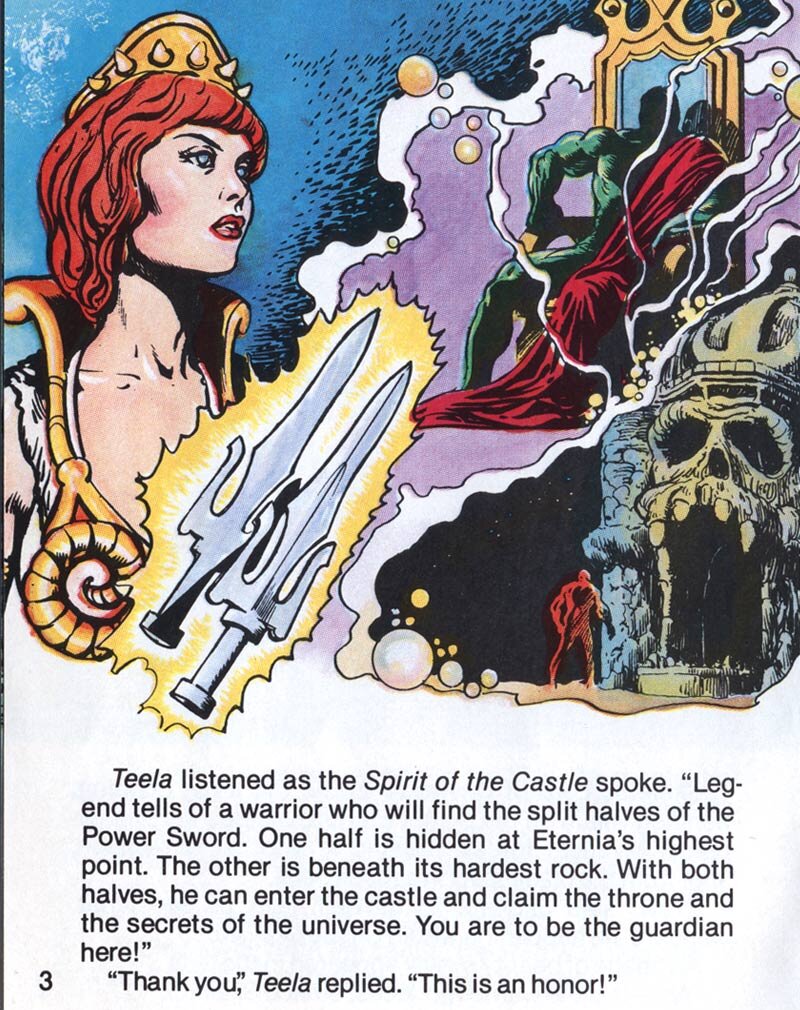
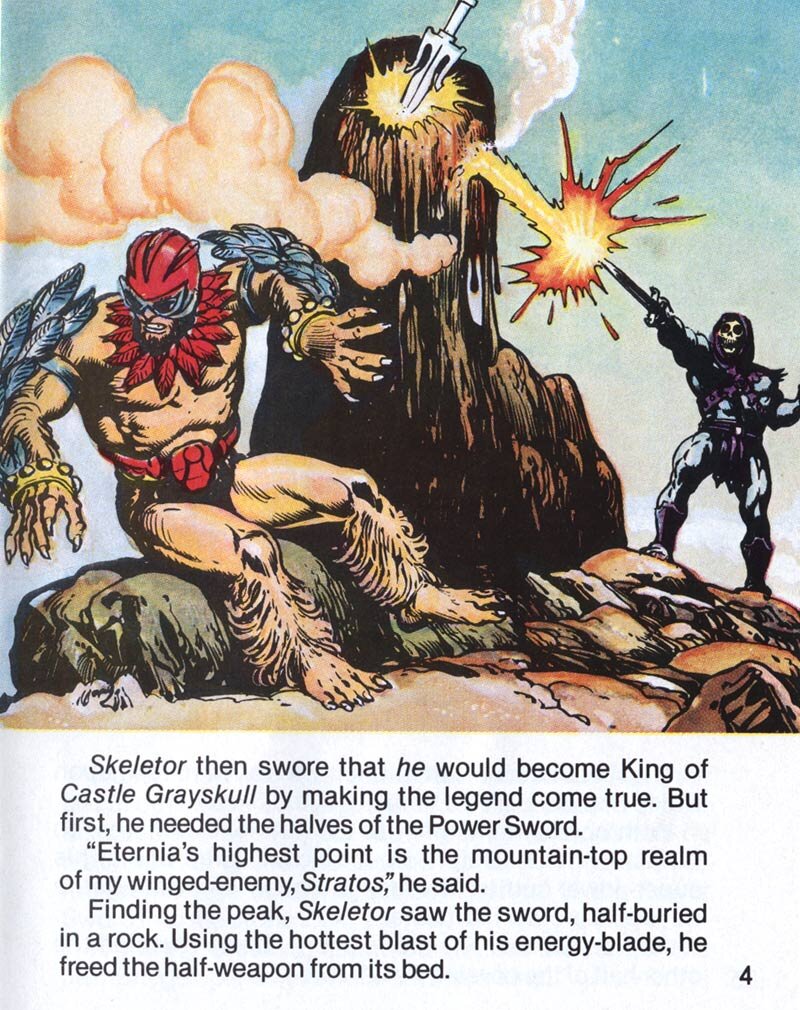
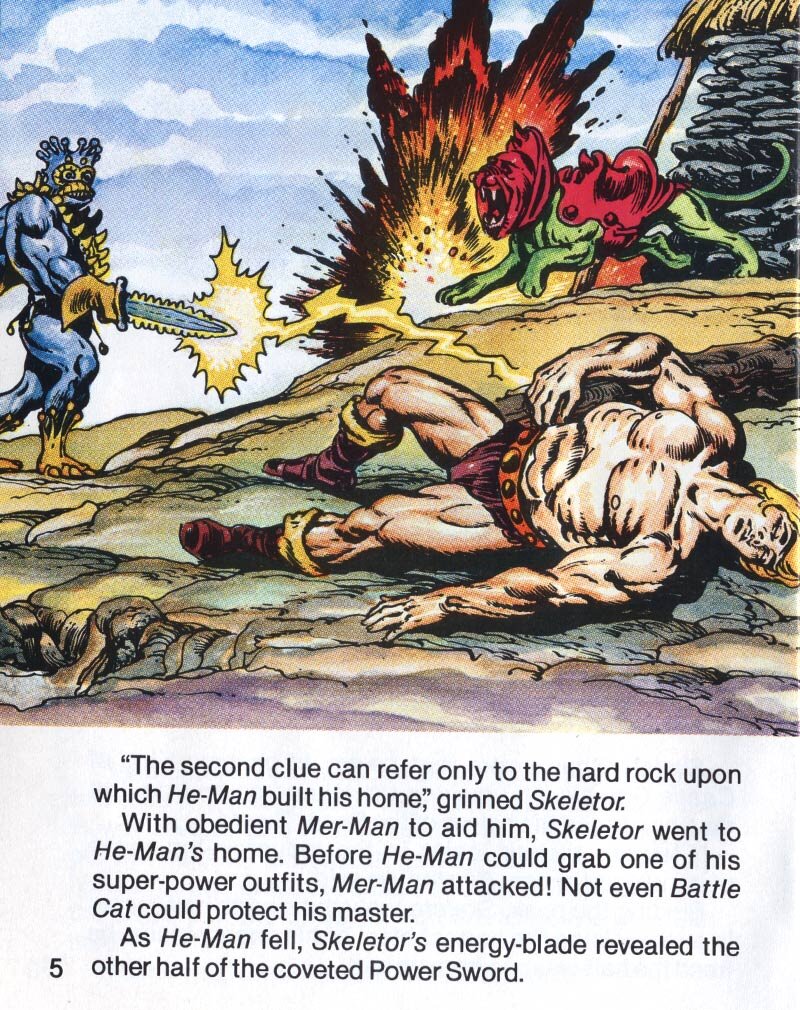
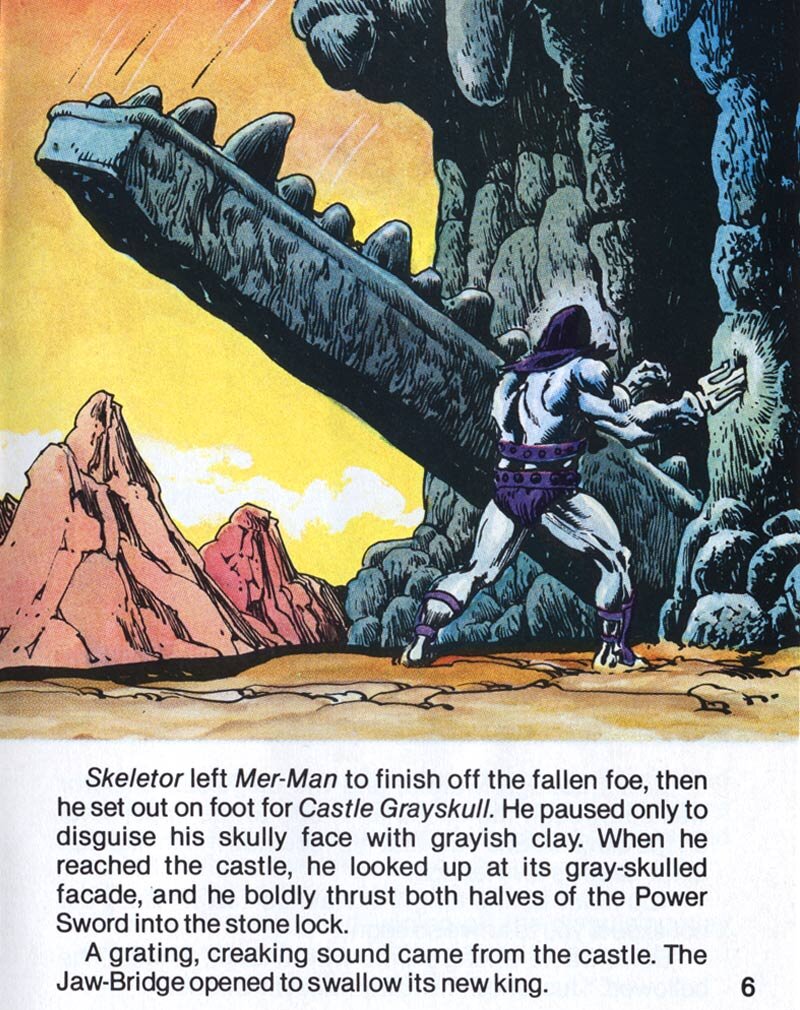
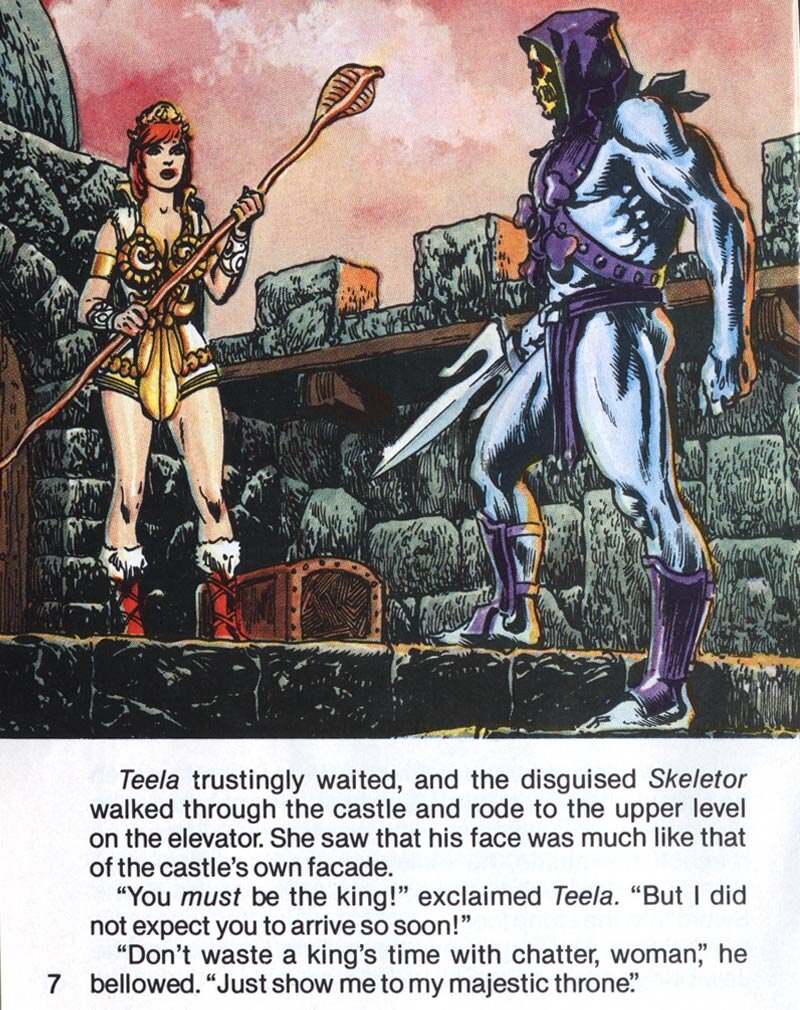

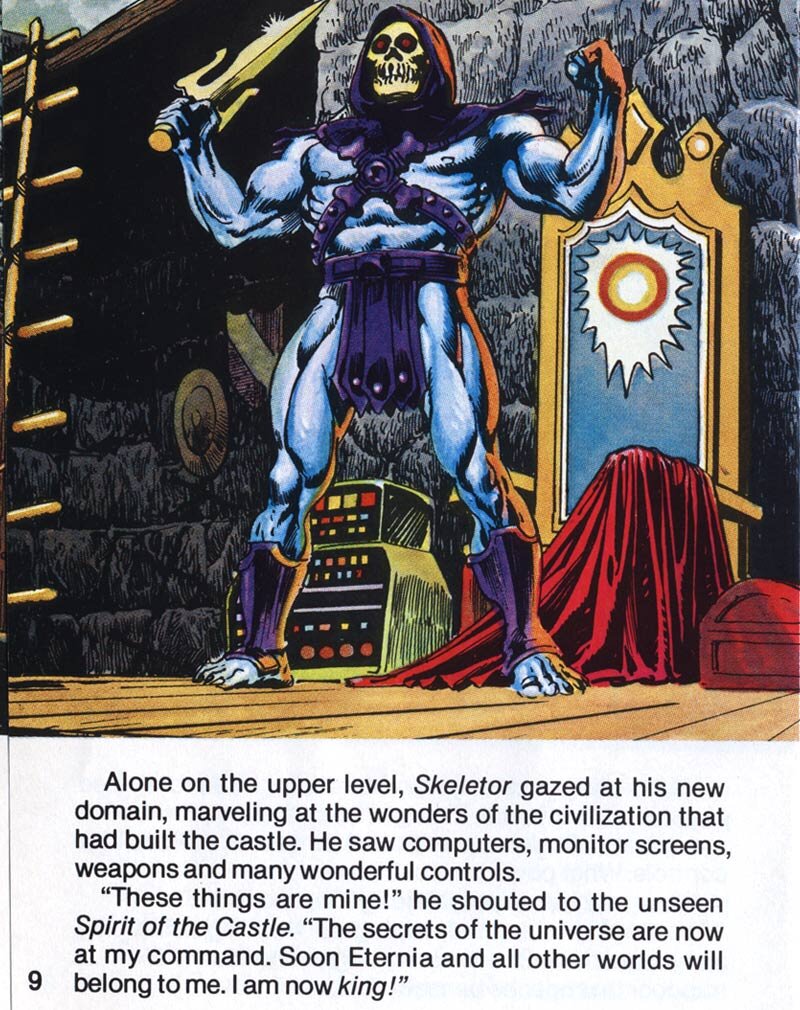
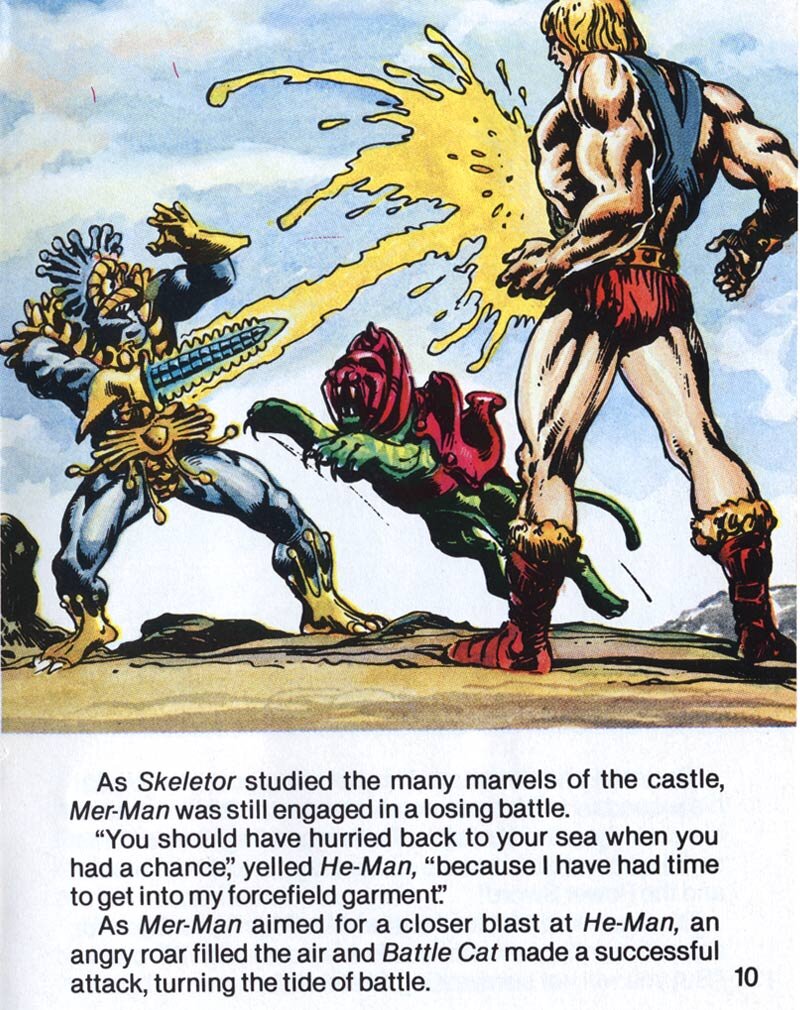
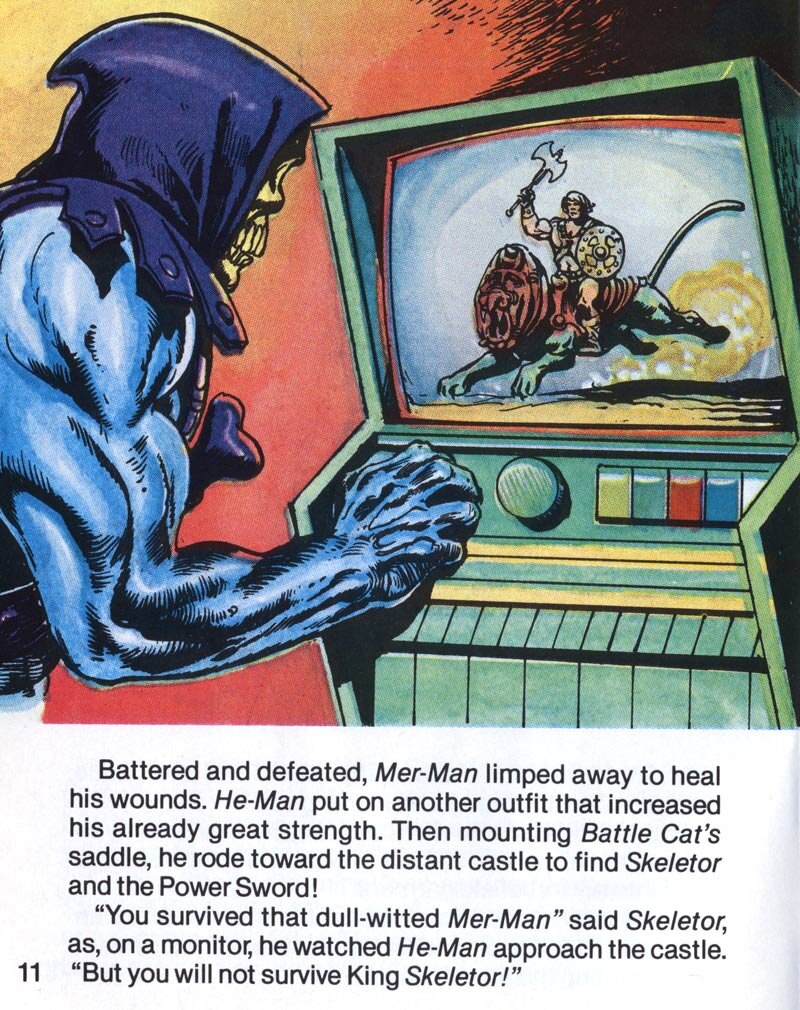

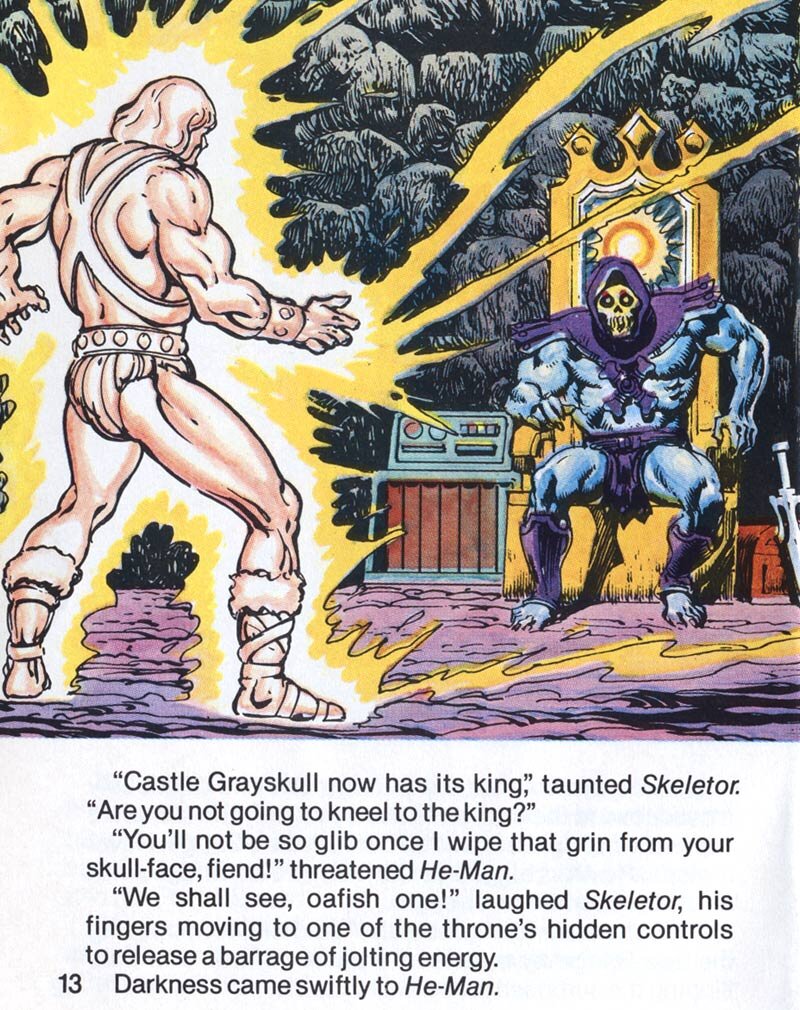
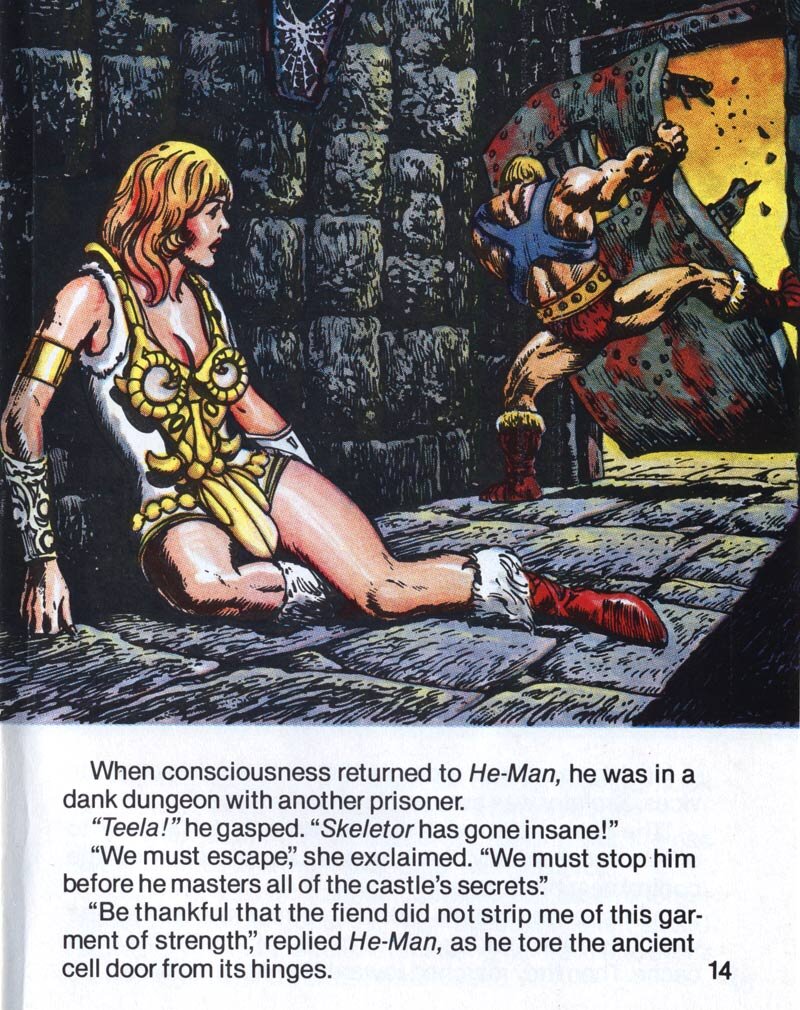
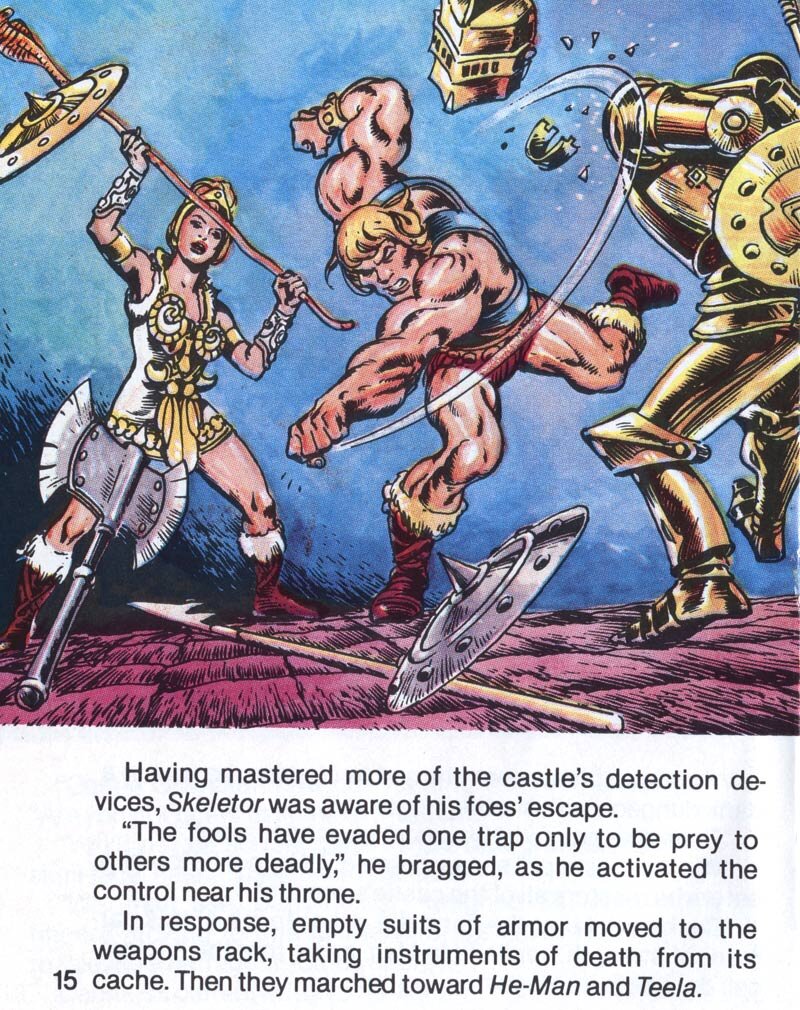
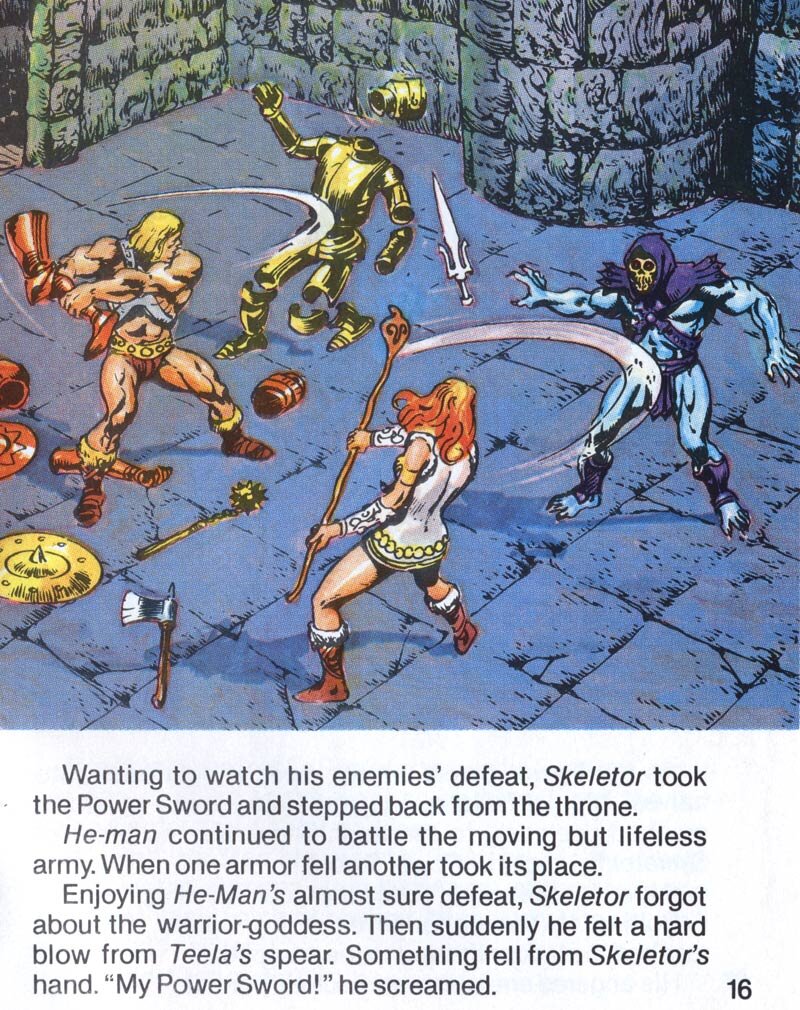
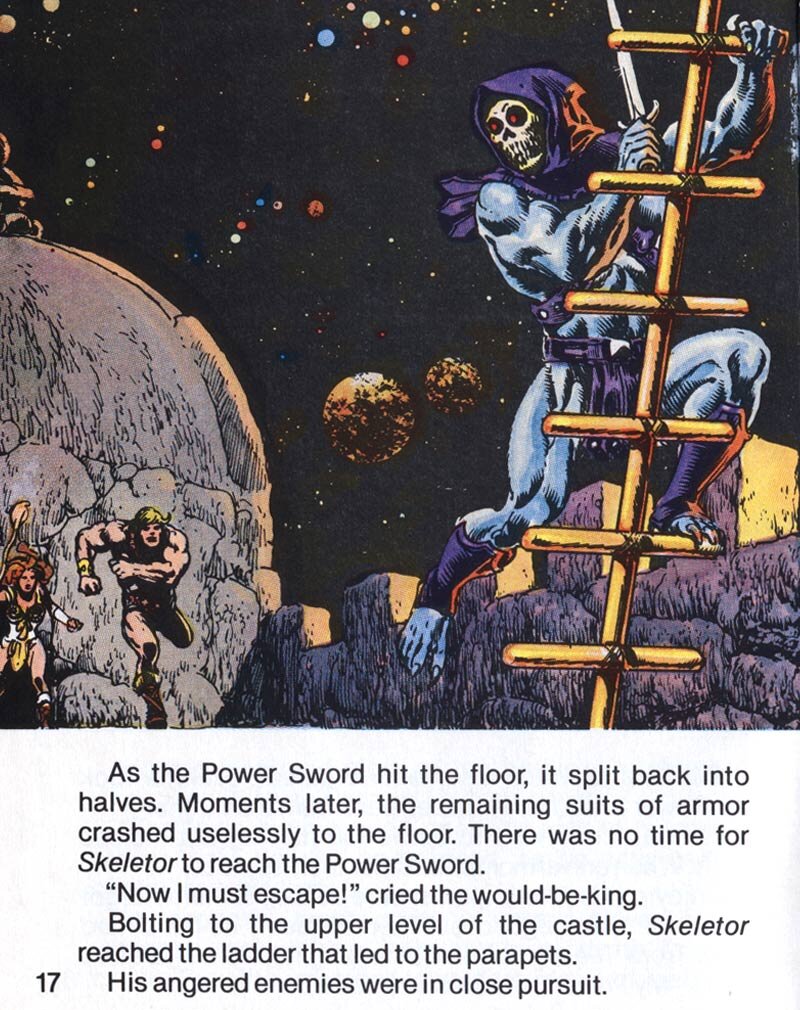

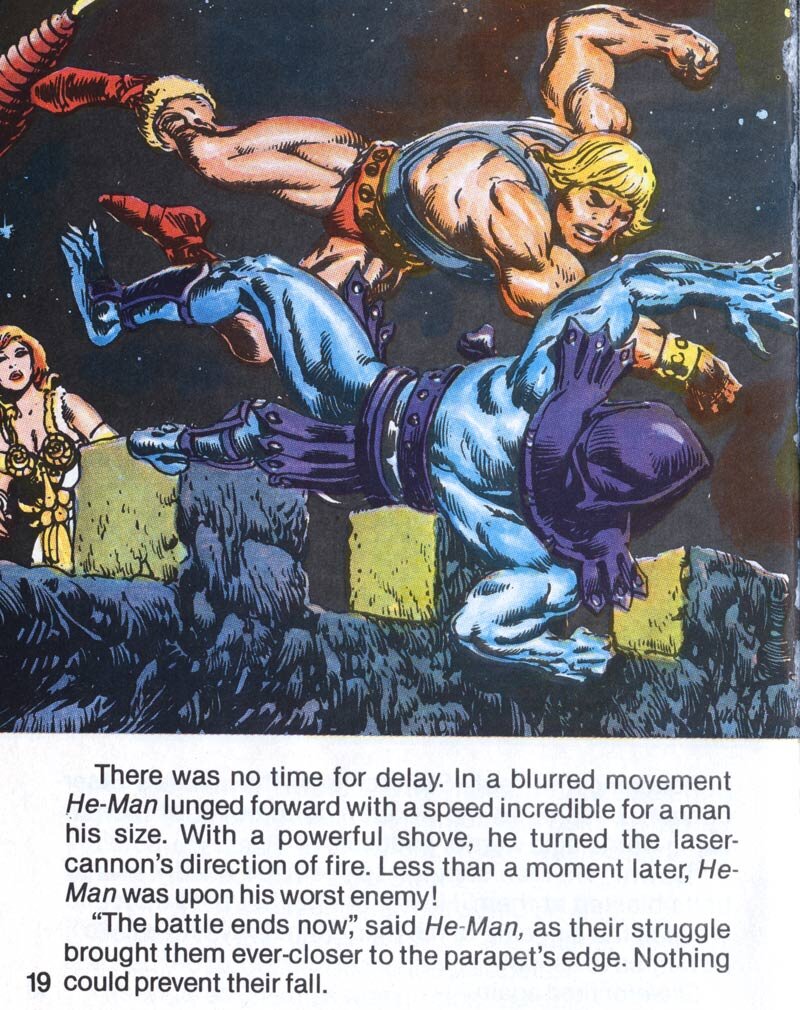
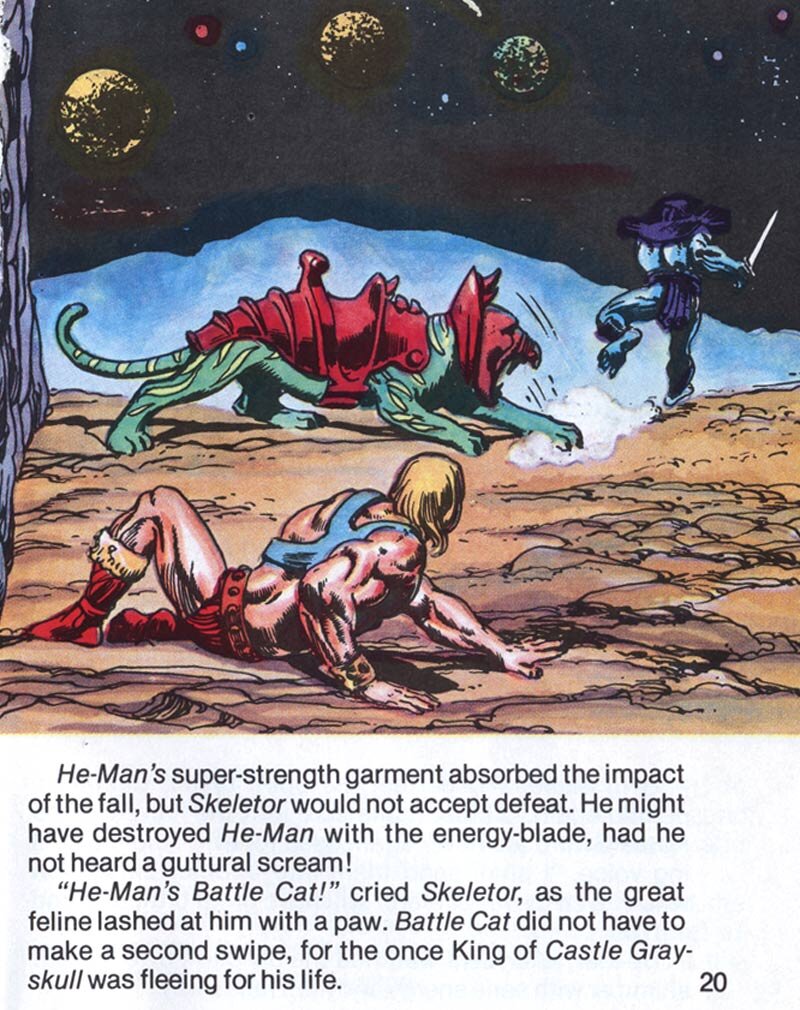
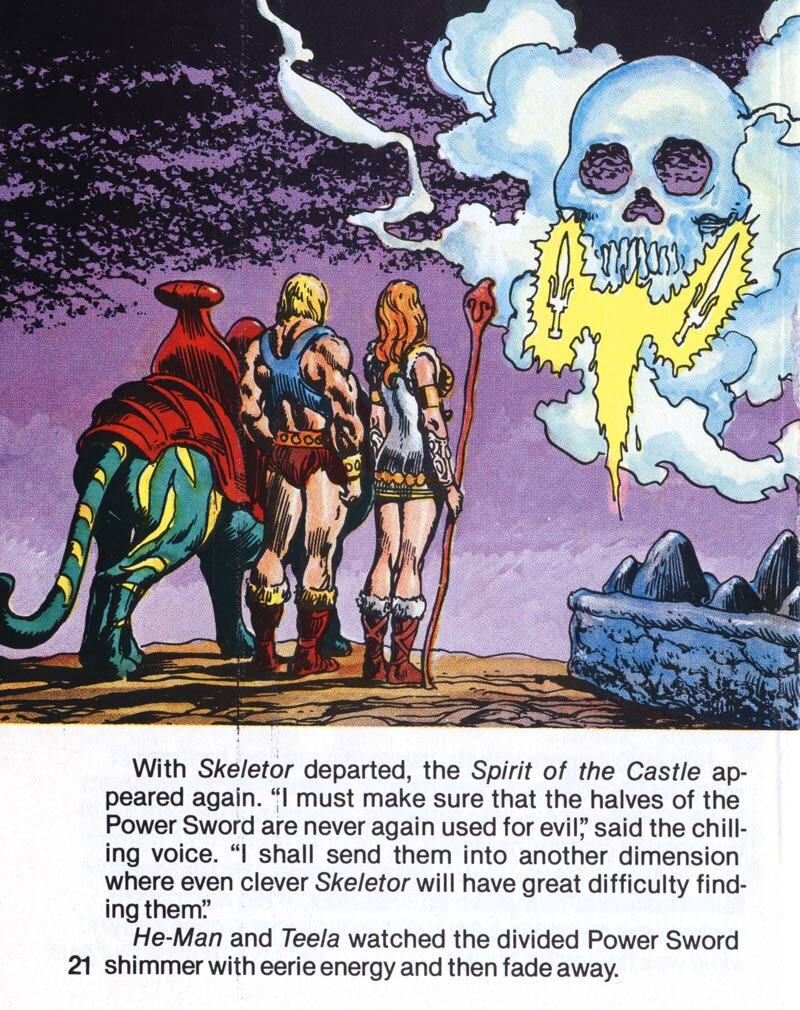

The story opens with Skeletor atop Castle Grayskull. He has climbed up there but does not know how to get inside. He eavesdrops as the Spirit of the Castle tells Teela about the hidden pieces of the Power Sword.
With Mer-Man’s help, Skeletor steals and merges the two halves. He uses the weapon as a key to enter Castle Grayskull. Teela dimwittedly accepts Skeletor as the castle’s king because his face matches the front aspect.
He-Man arrives to fight Skeletor. Unfathomably, Skeletor opens the jawbridge to allow He-Man to enter. Skeletor loses the ensuing battle and is forced to flee. The Spirit proclaims that the Power Sword will be hidden again.
Although the Spirit of the Castle tells He-Man and Teela that many centuries will pass before the true king is identified, it is apparent that it will be He-Man himself upon whom the role will be bestowed.
The colour schemes used for Stratos and Mer-Man do not match the toys. The palette changes seen in these minicomics help to establish the correct order of the stories.
THE VENGEANCE OF SKELETOR
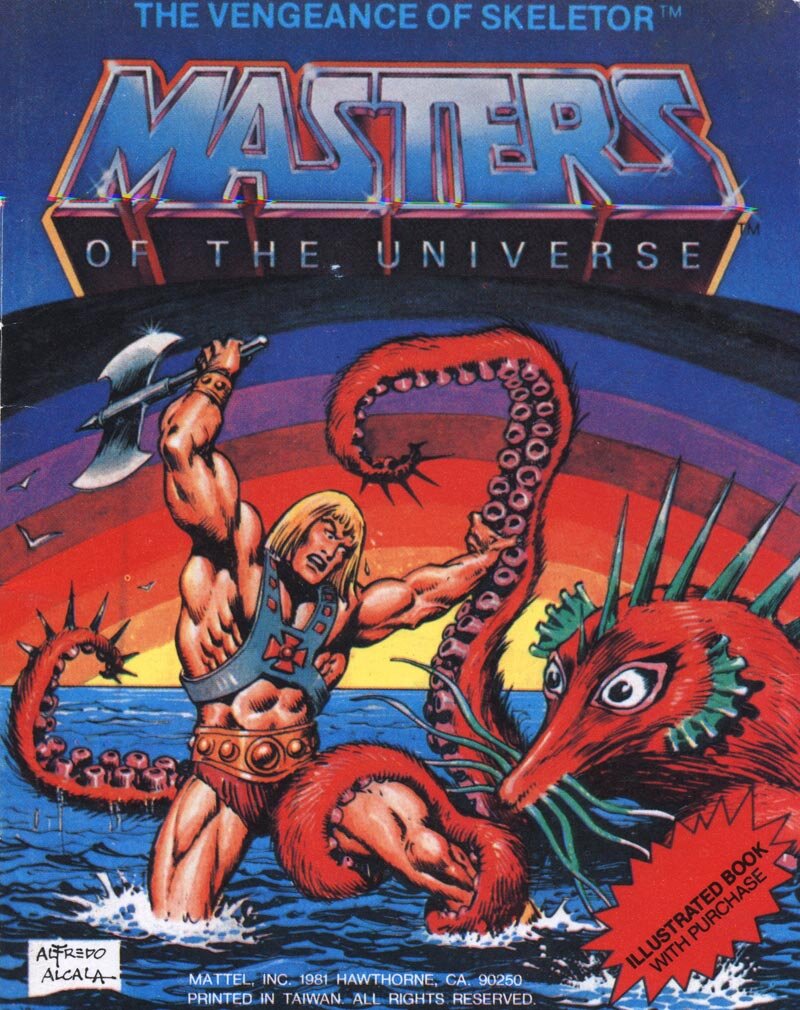
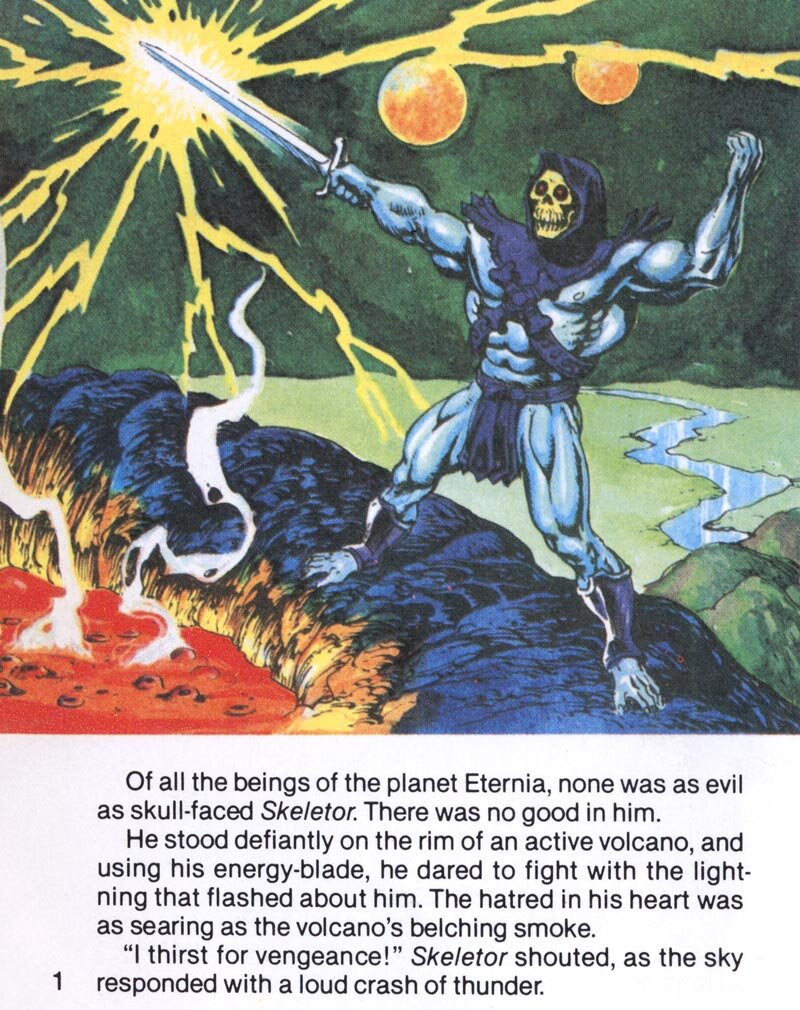
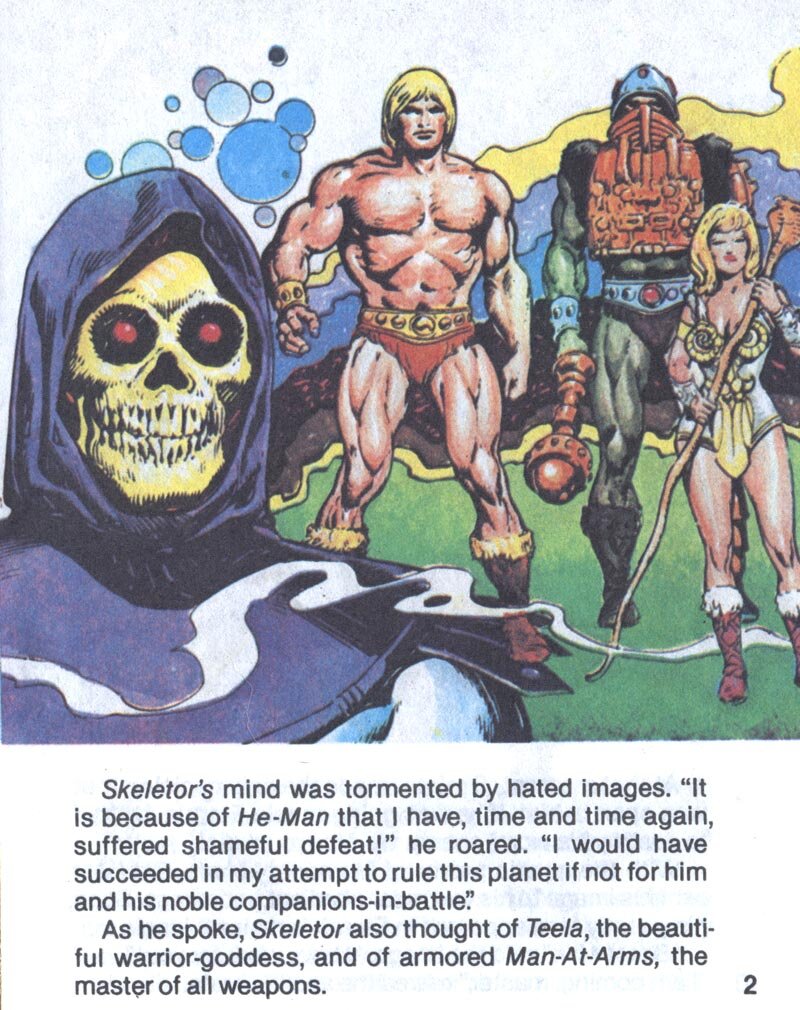
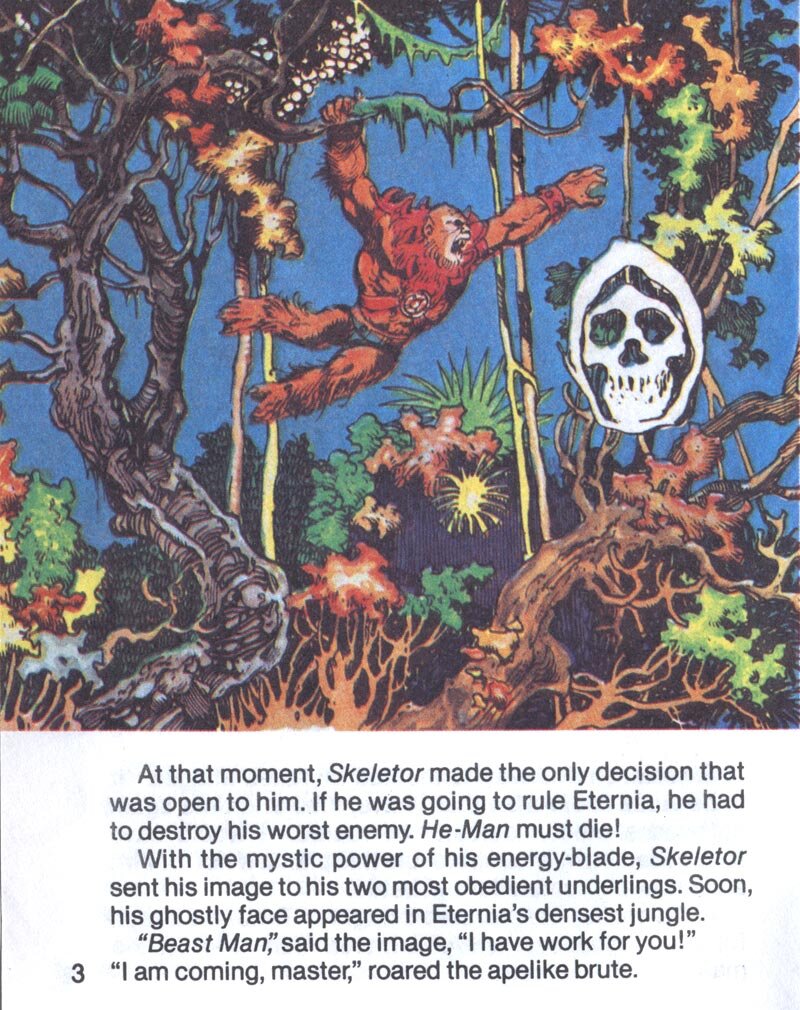
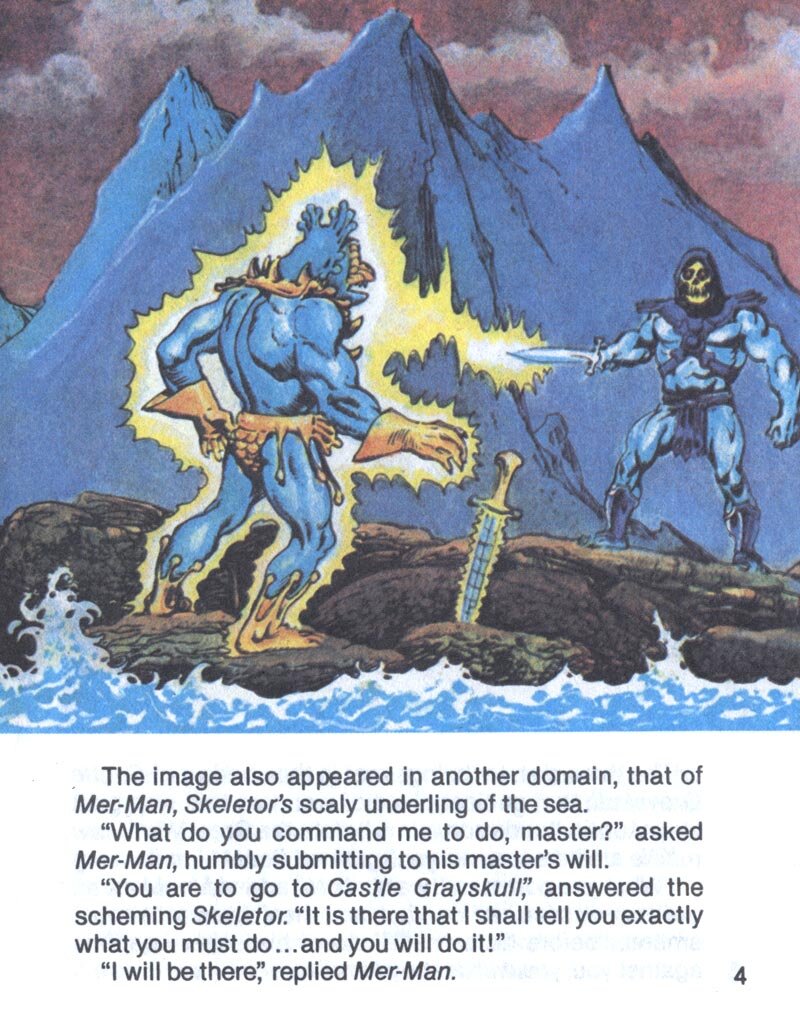
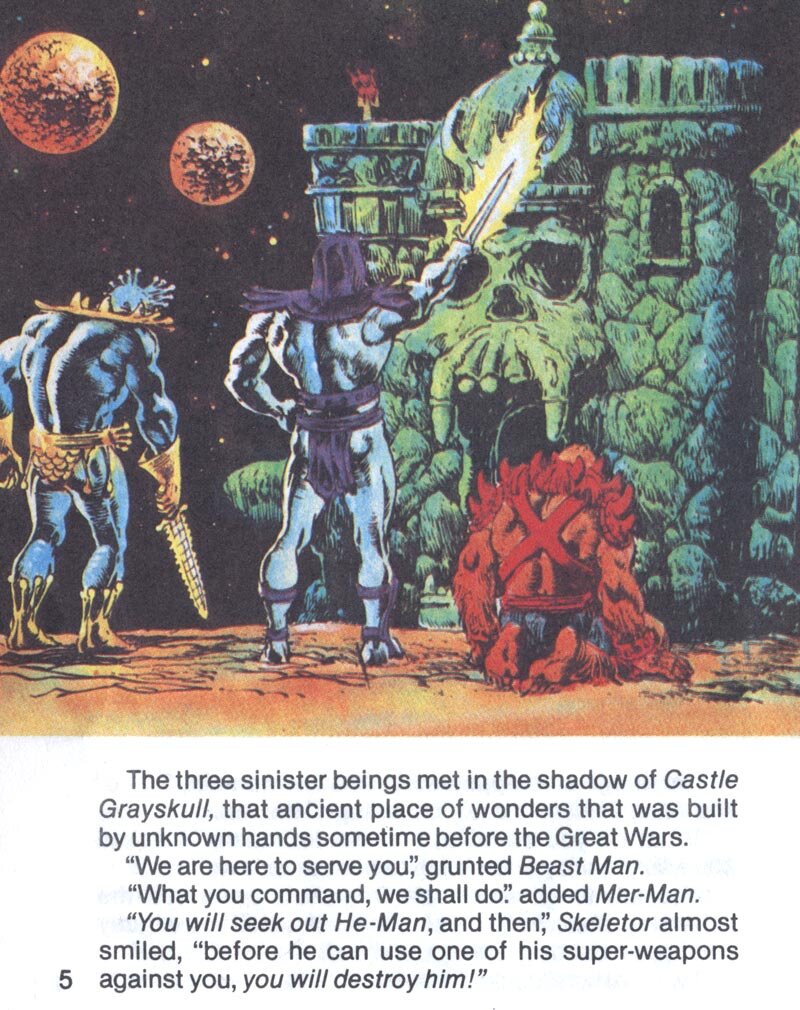
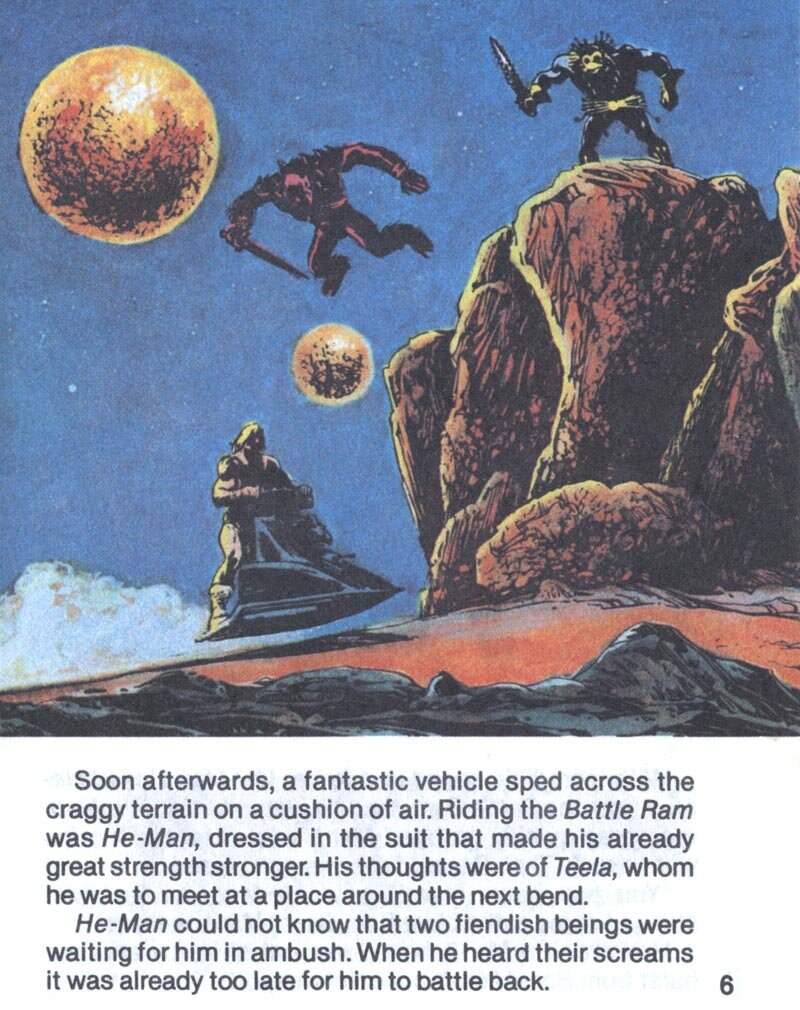
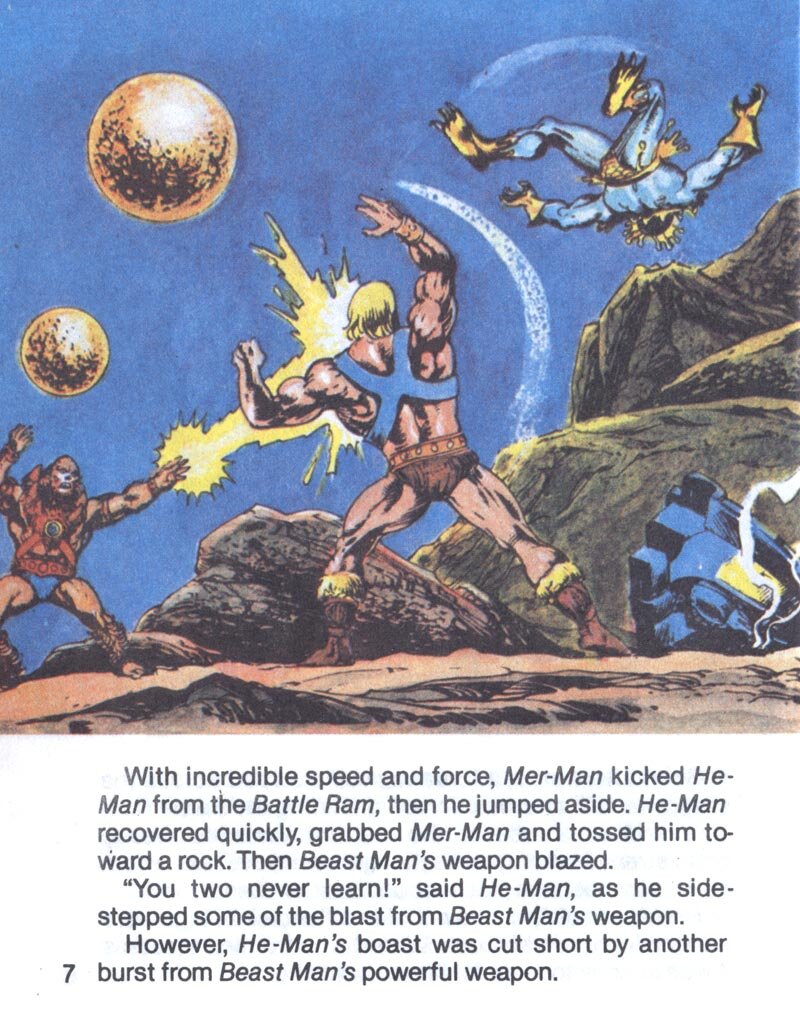
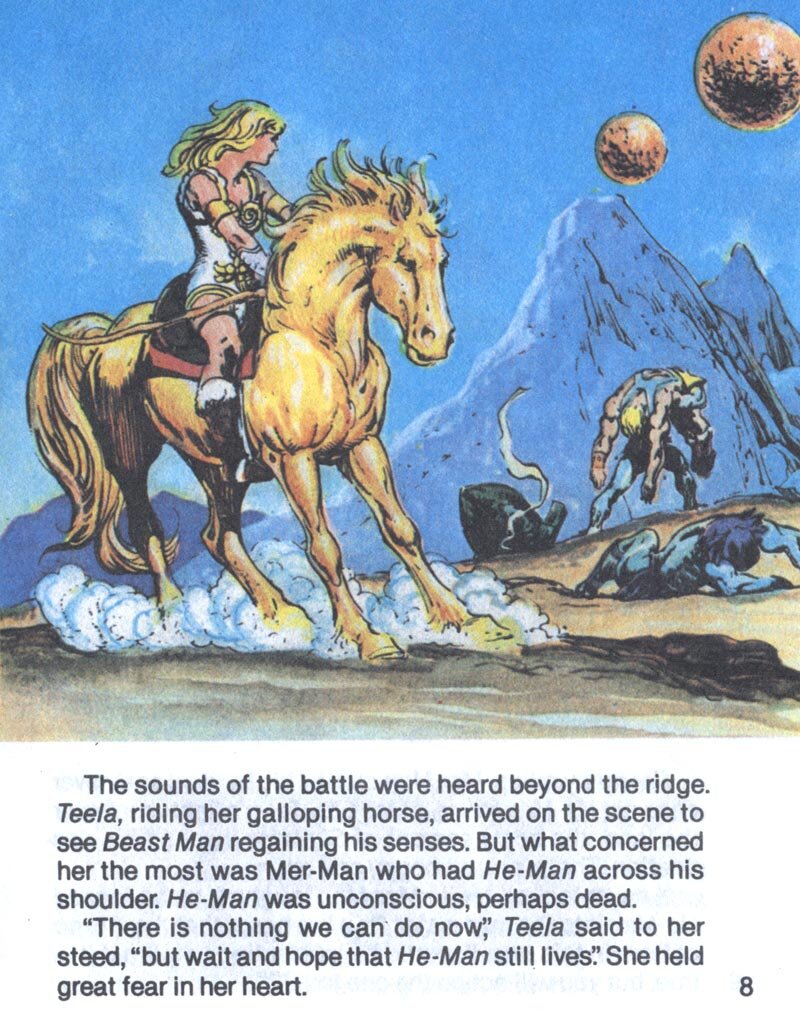
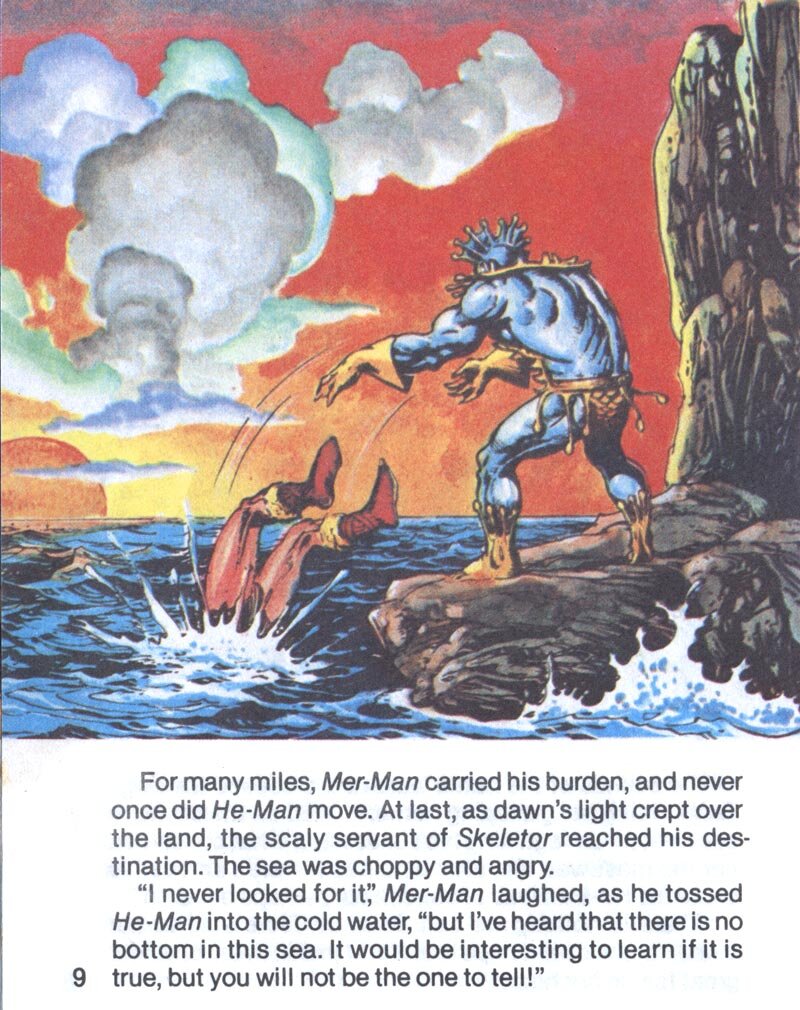
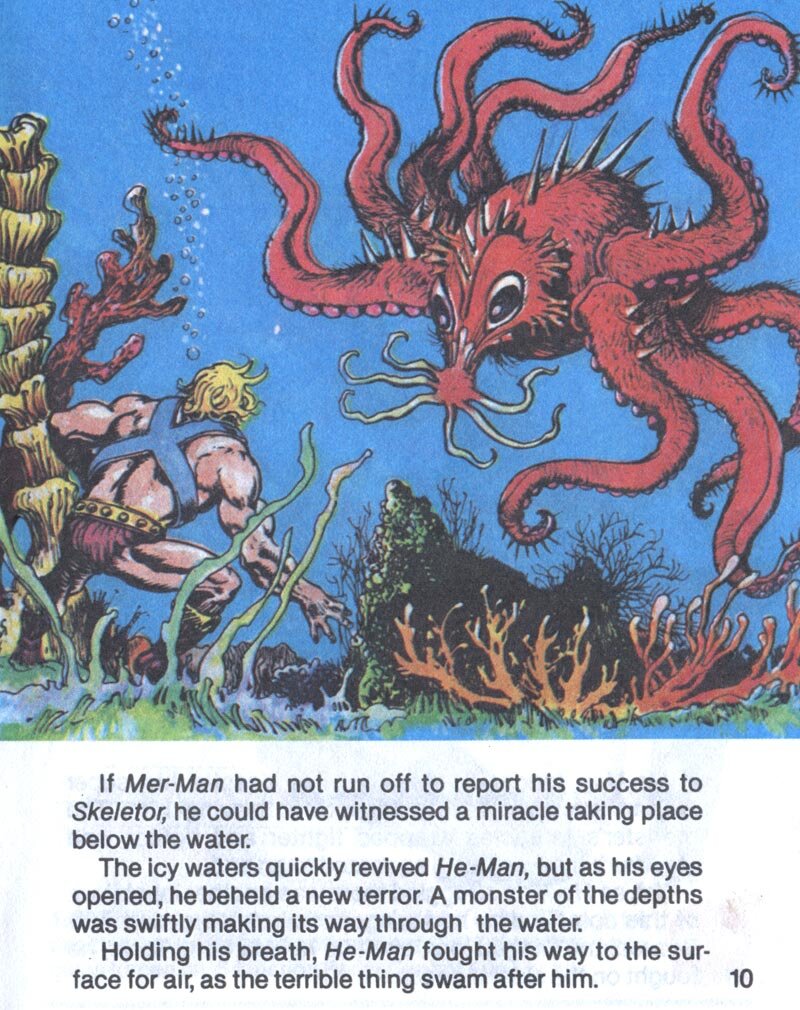
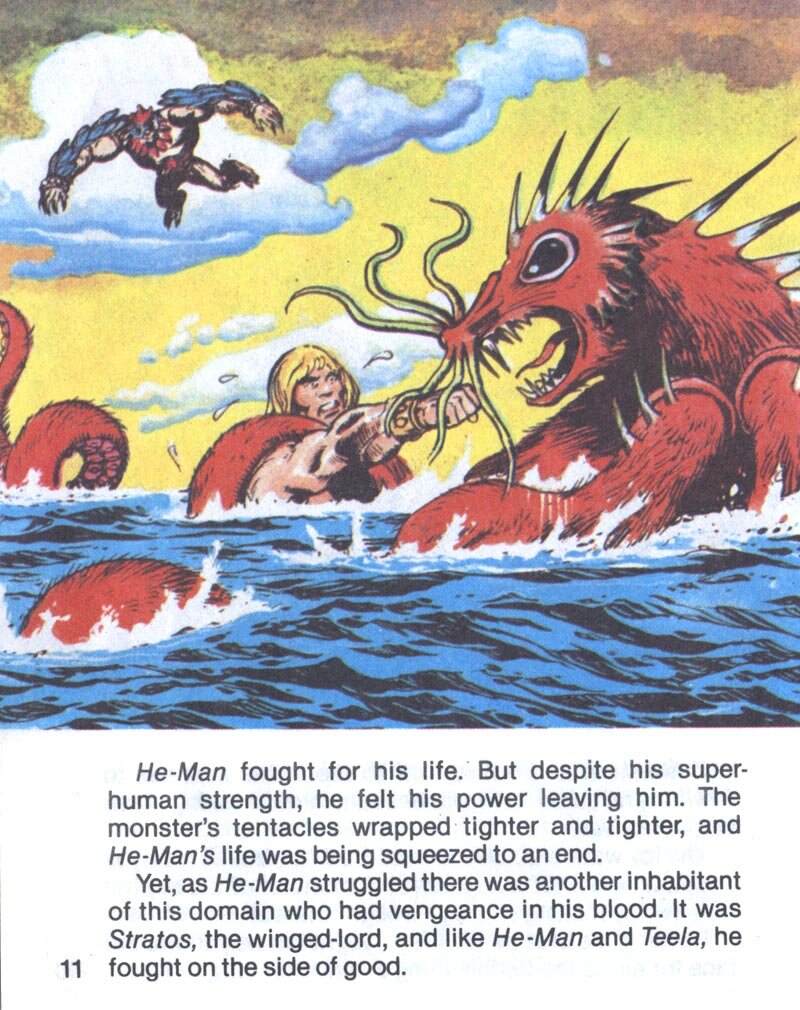
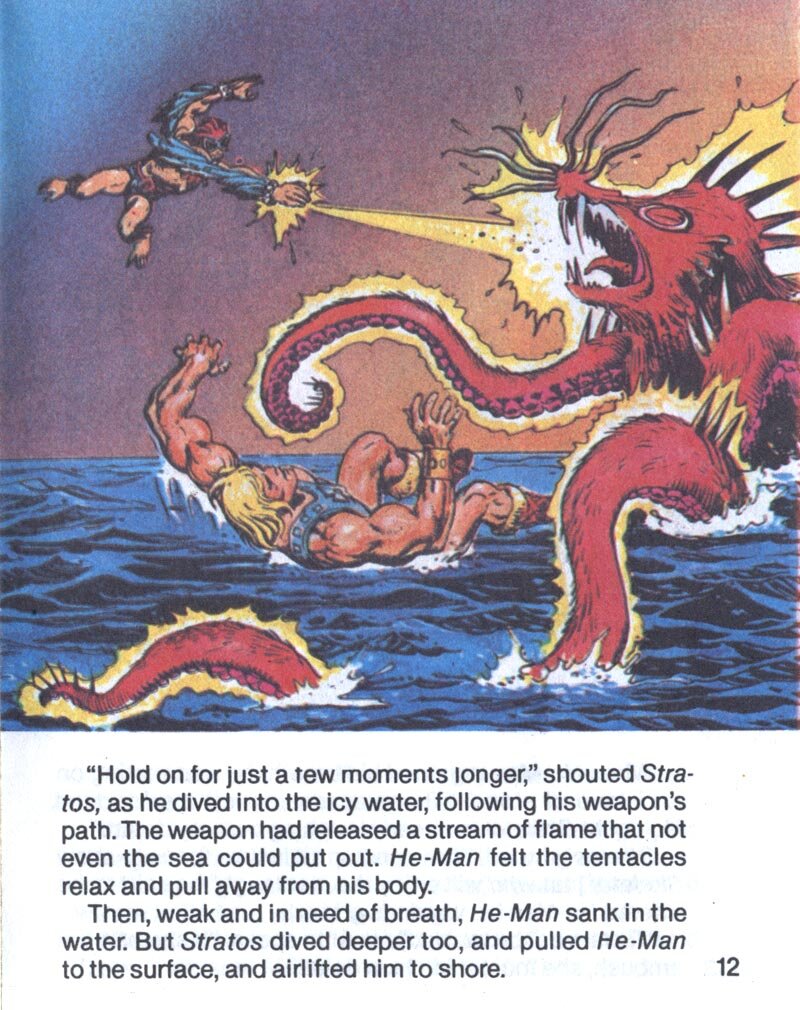
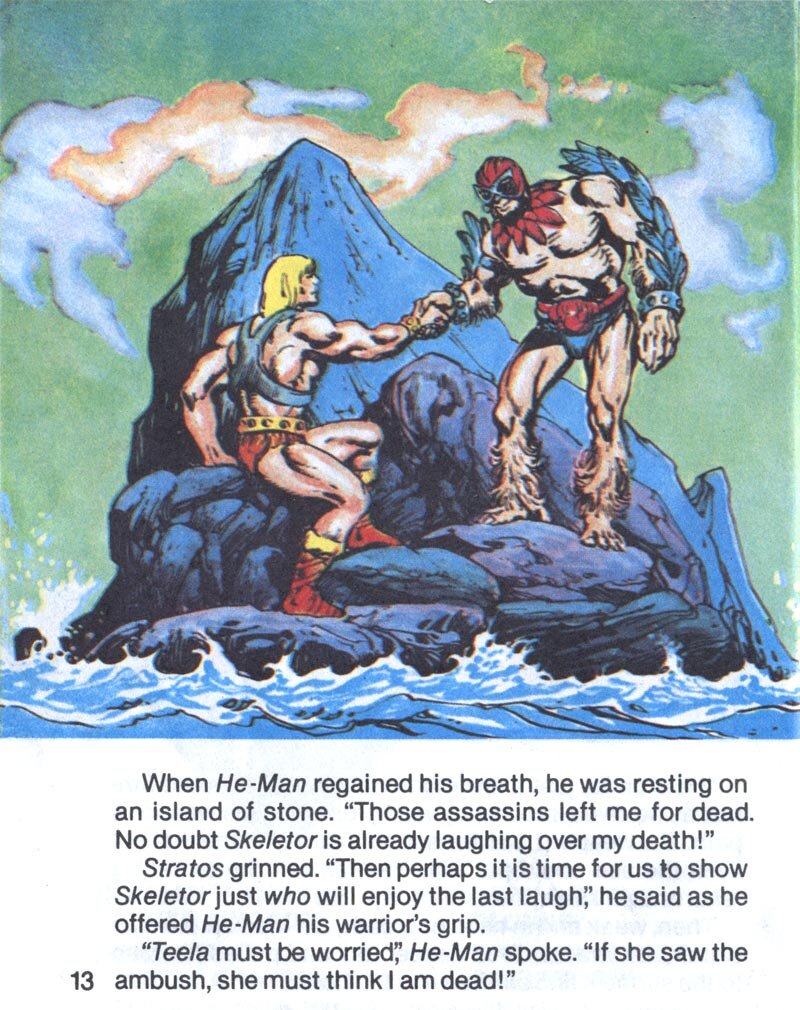
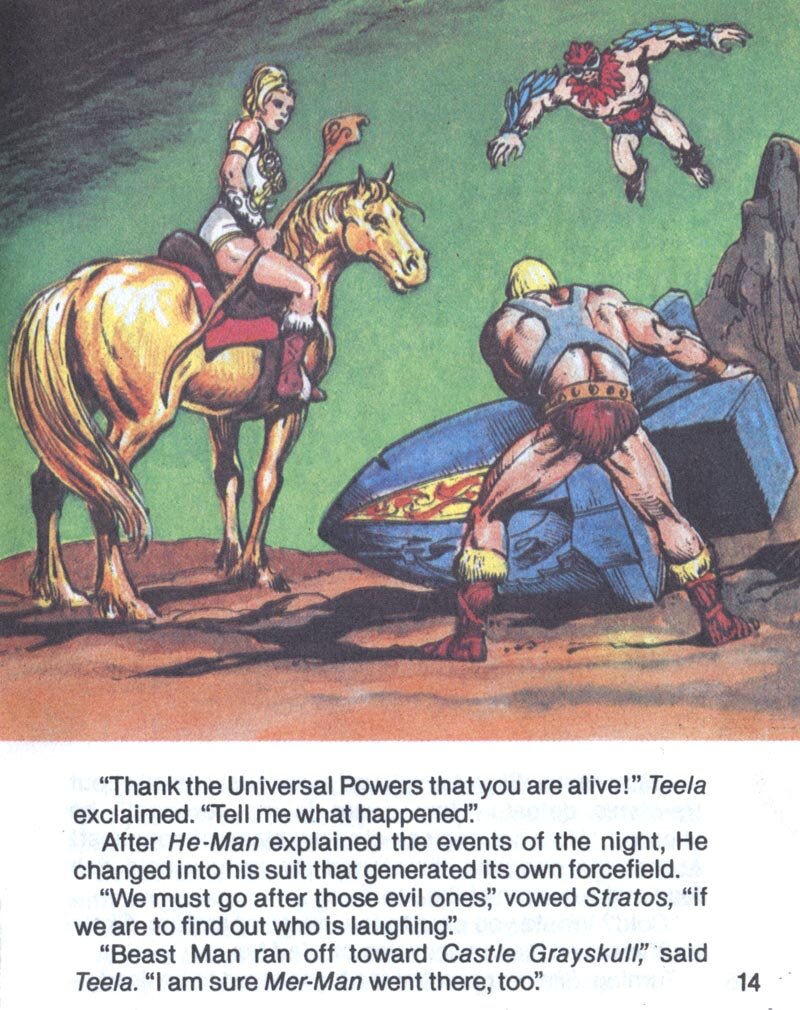
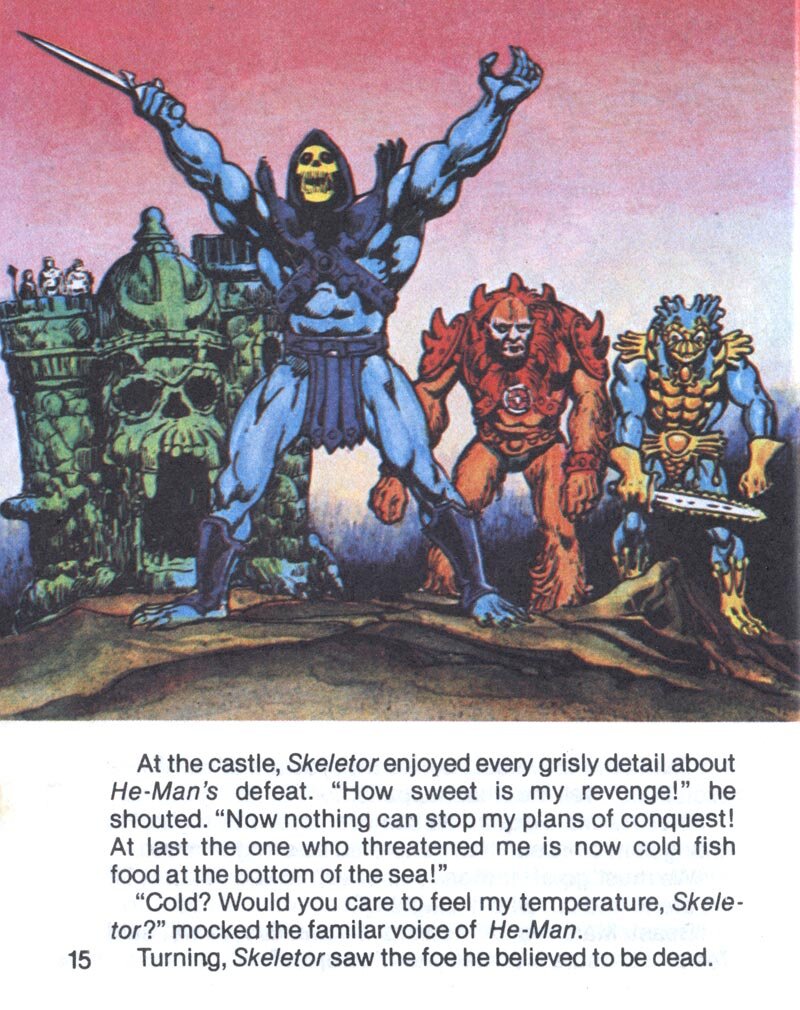
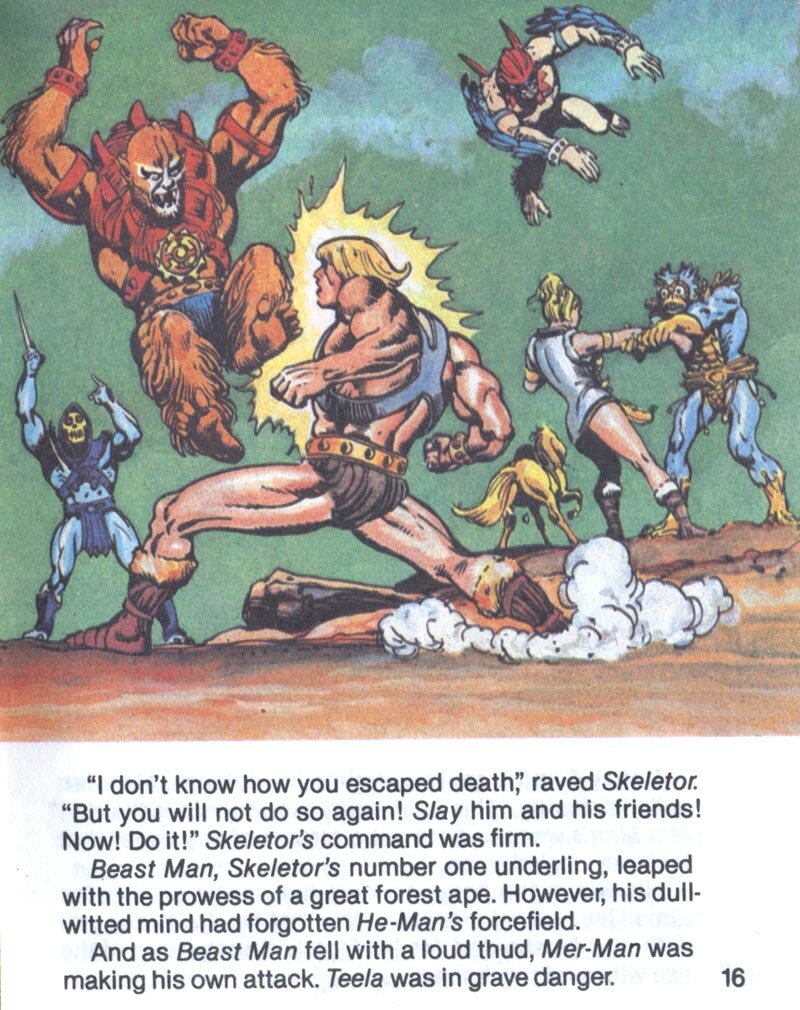
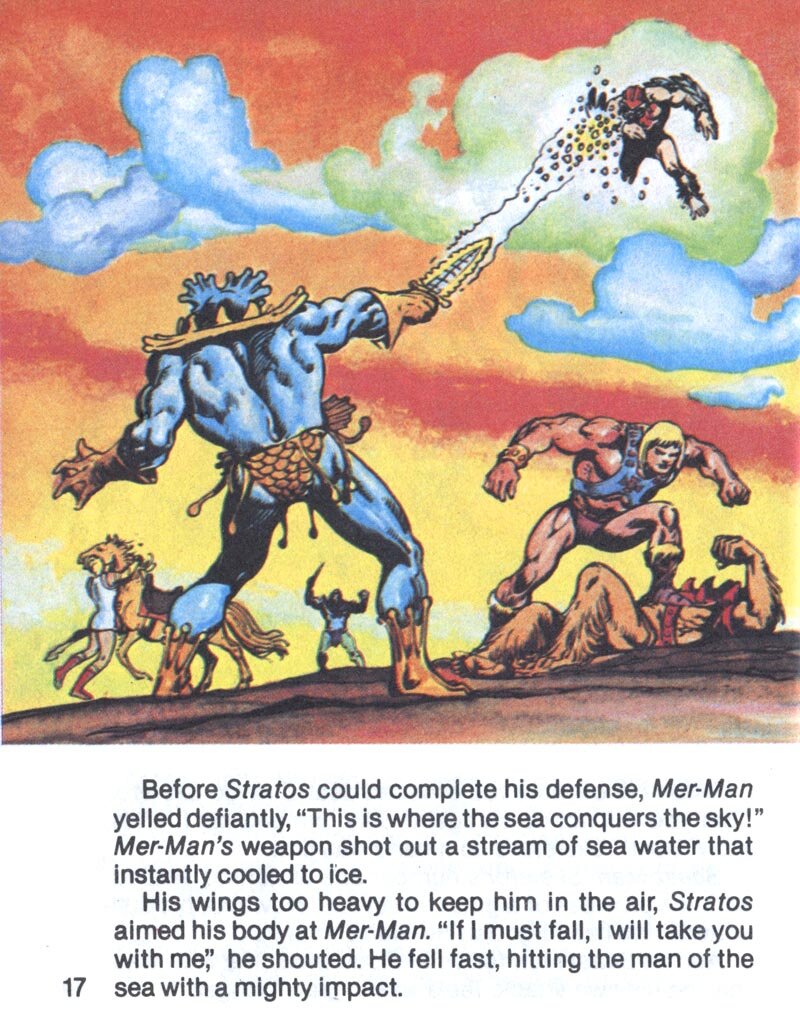
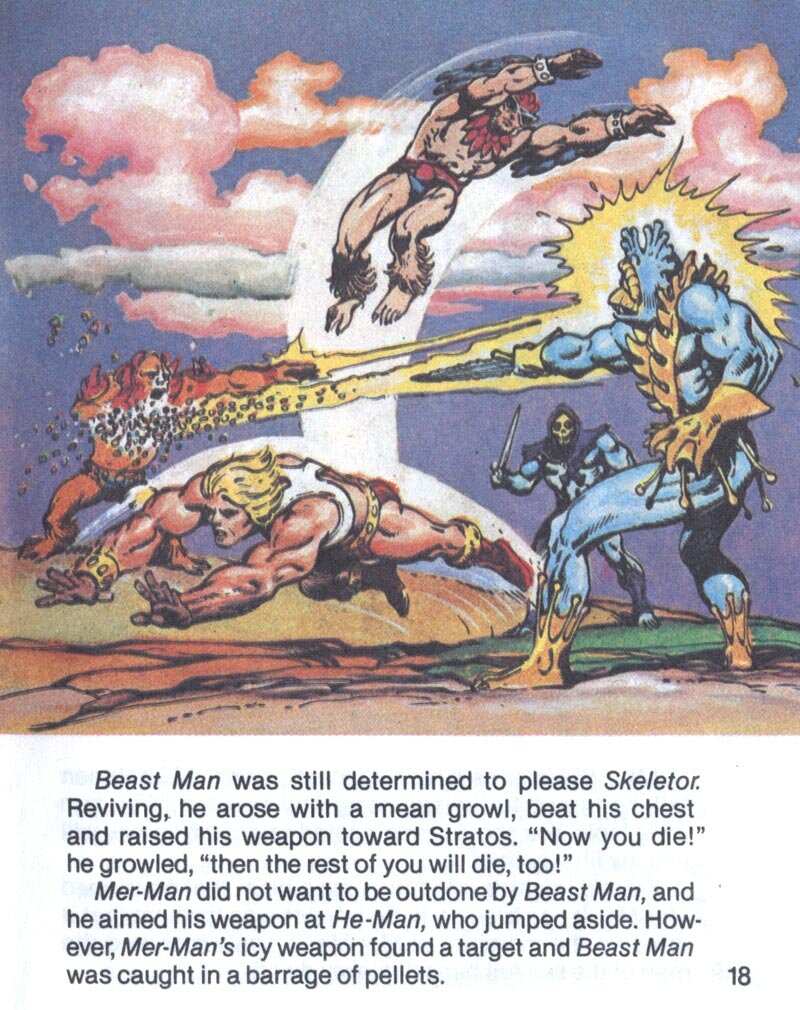
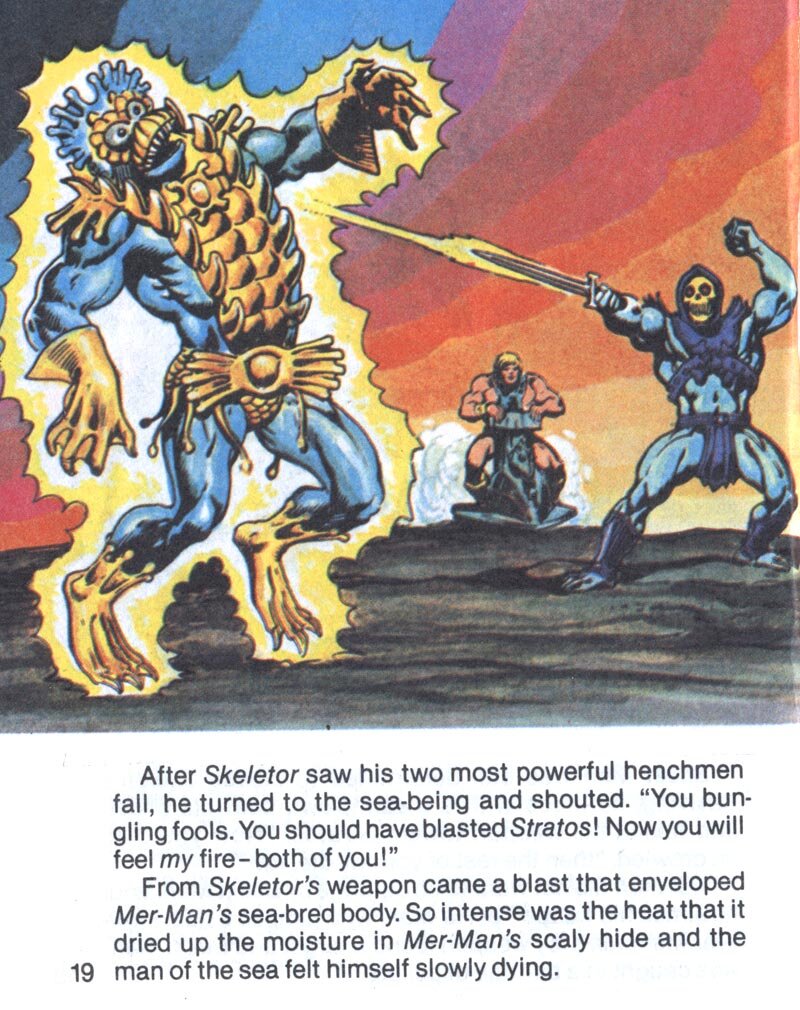
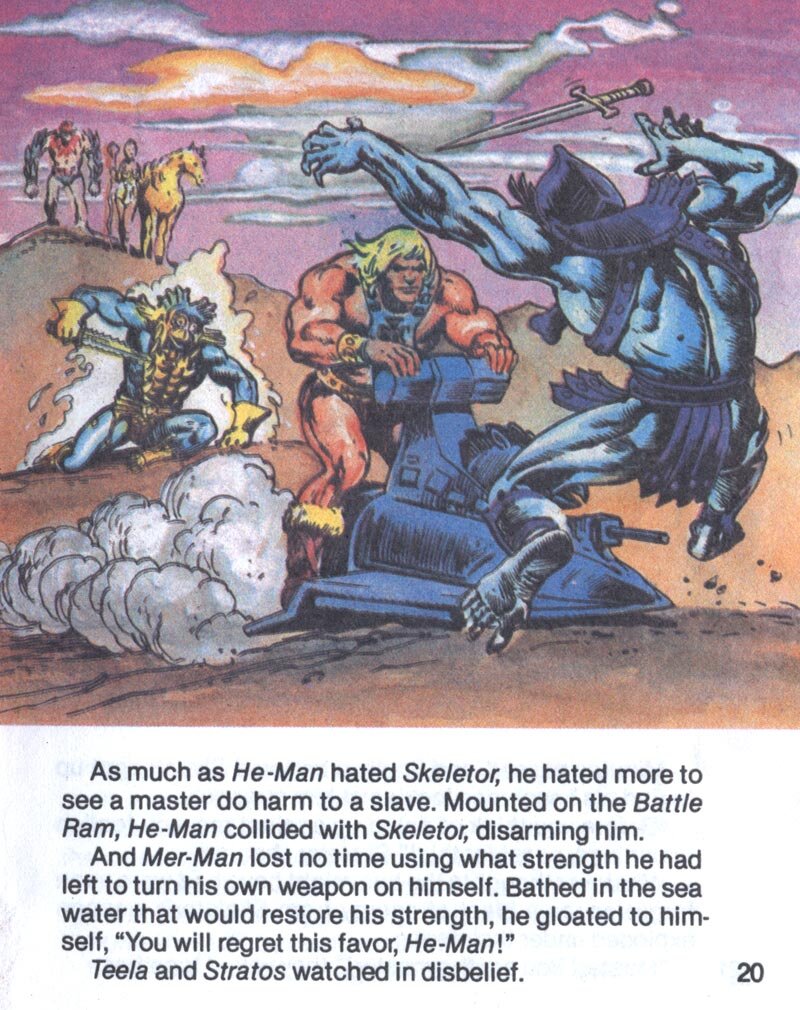
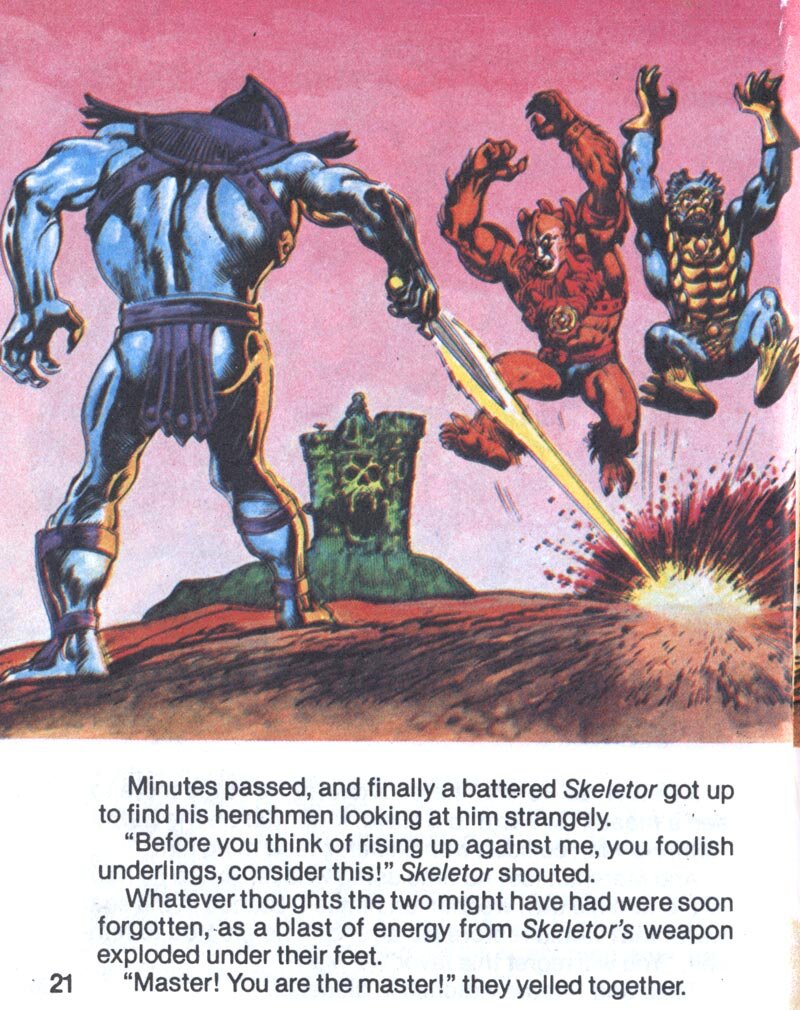
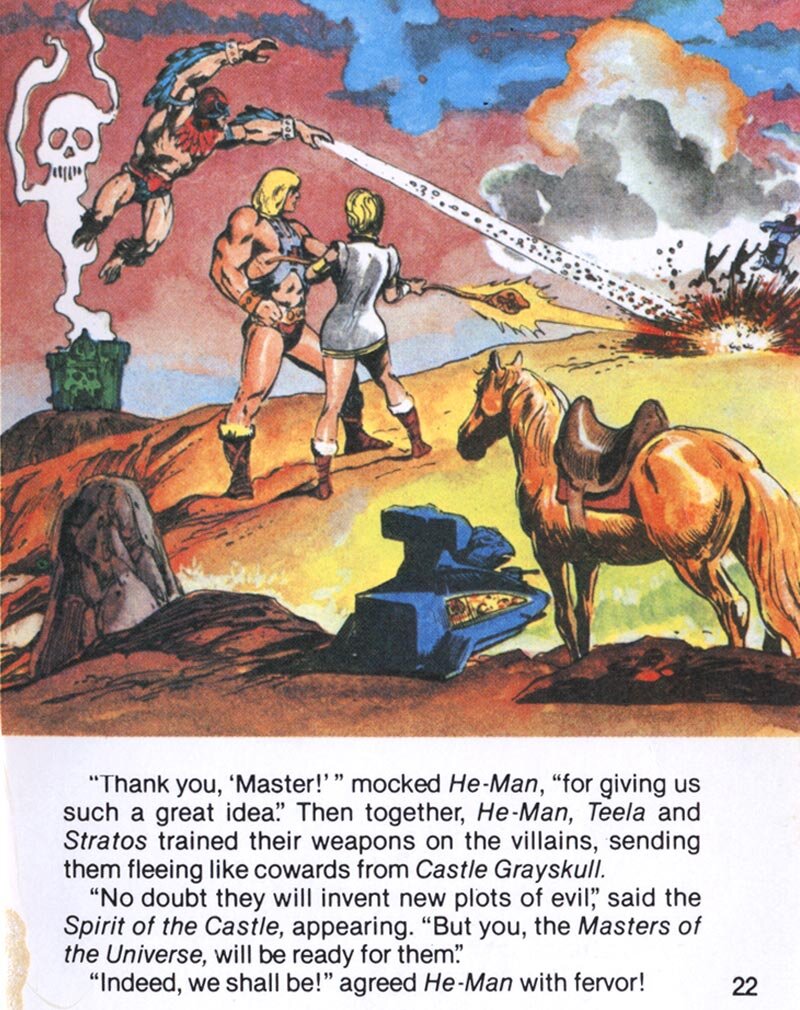
In a break from the usual Skeletor theme, The Vengeance of Skeletor does not revolve around a plot to conquer Castle Grayskull; it is purely about his desire to murder He-Man after his various schemes were thwarted.
Skeletor summons his underlings Beast Man and Mer-Man, ordering them to meet him at Castle Grayskull. The two lackeys successfully ambush and carry off He-Man. Mer-Man dumps the unconscious hero in the ocean.
The icy water revives He-Man but he has to fight a sea monster. Stratos rescues him. They find Teela who witnessed He-Man’s abduction and did not know of his fate. A fight ensues with their enemies.
Beast Man and Mer-Man are defeated. In a furious rage, Skeletor turns his sword upon the ocean warlord and blasts him with a ray of heat that forces the moisture from Mer-Man’s body, intending to murder him.
Angered by the brutality, He-Man intervenes and strikes down Skeletor with the Battle Ram. Skeletor and his henchmen flee the scene. The story is notable for Skeletor’s violence and psychopathy.
BATTLE IN THE CLOUDS
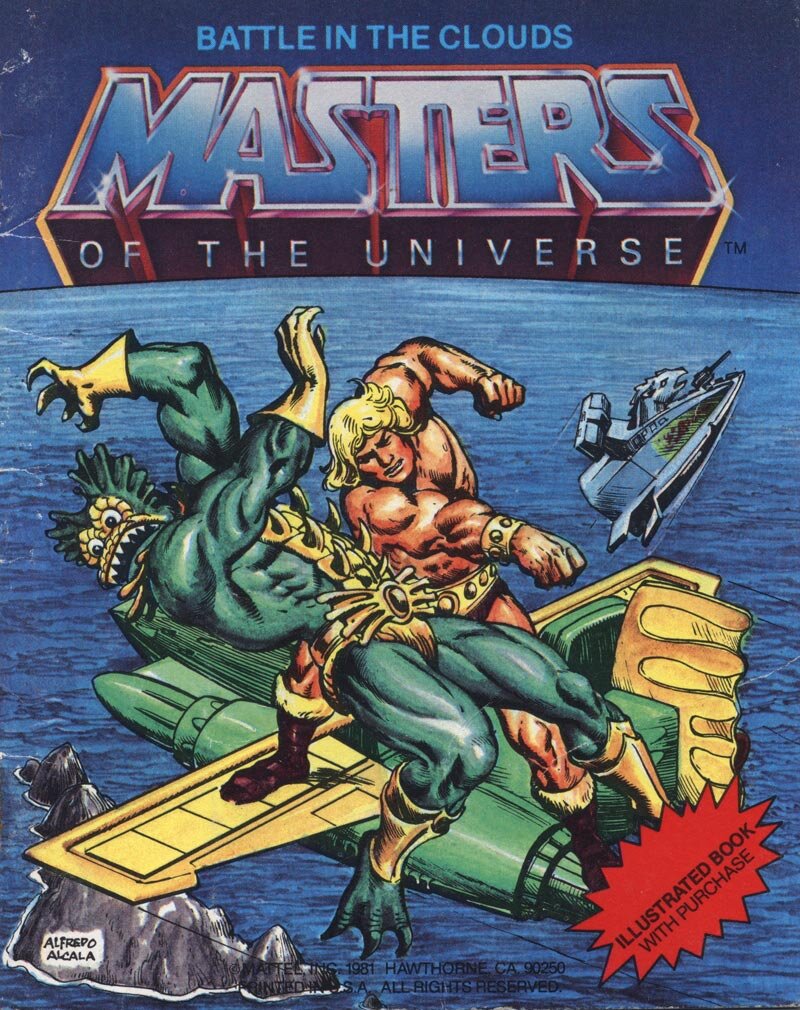
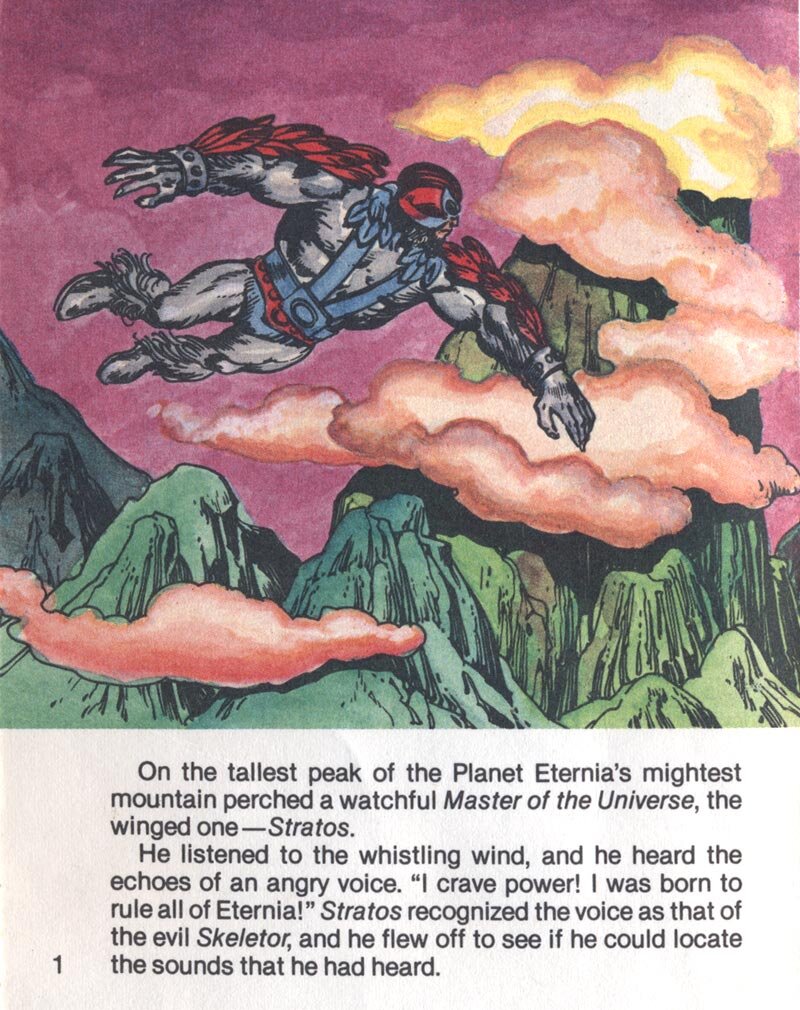
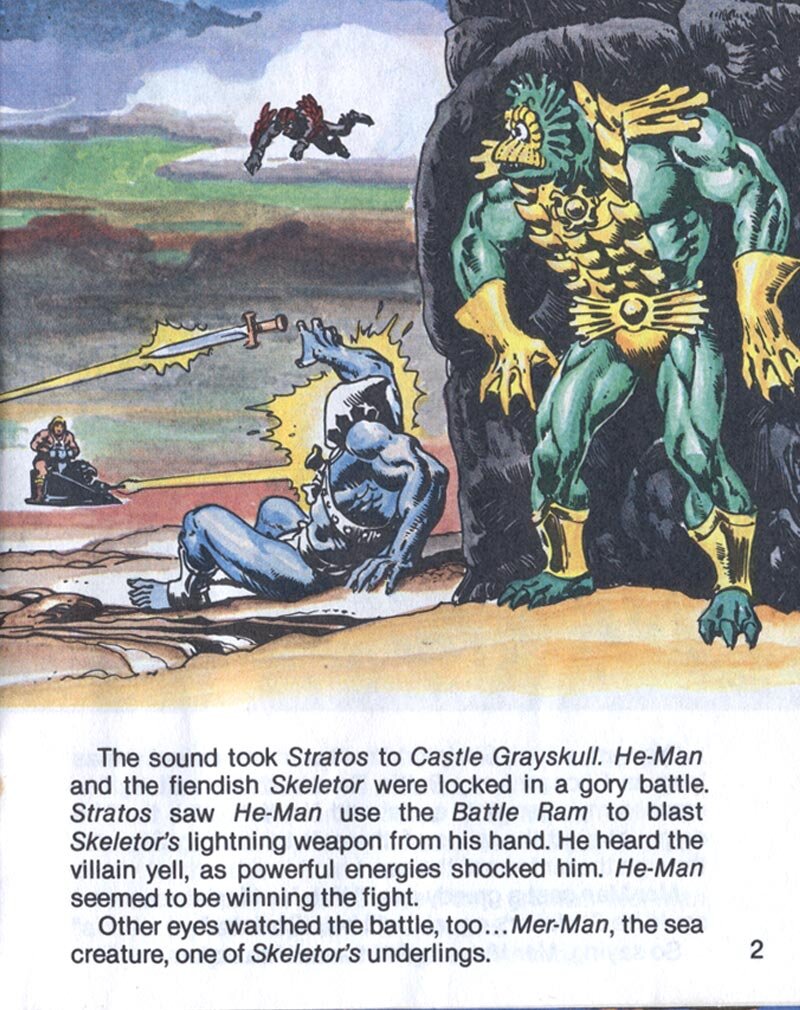
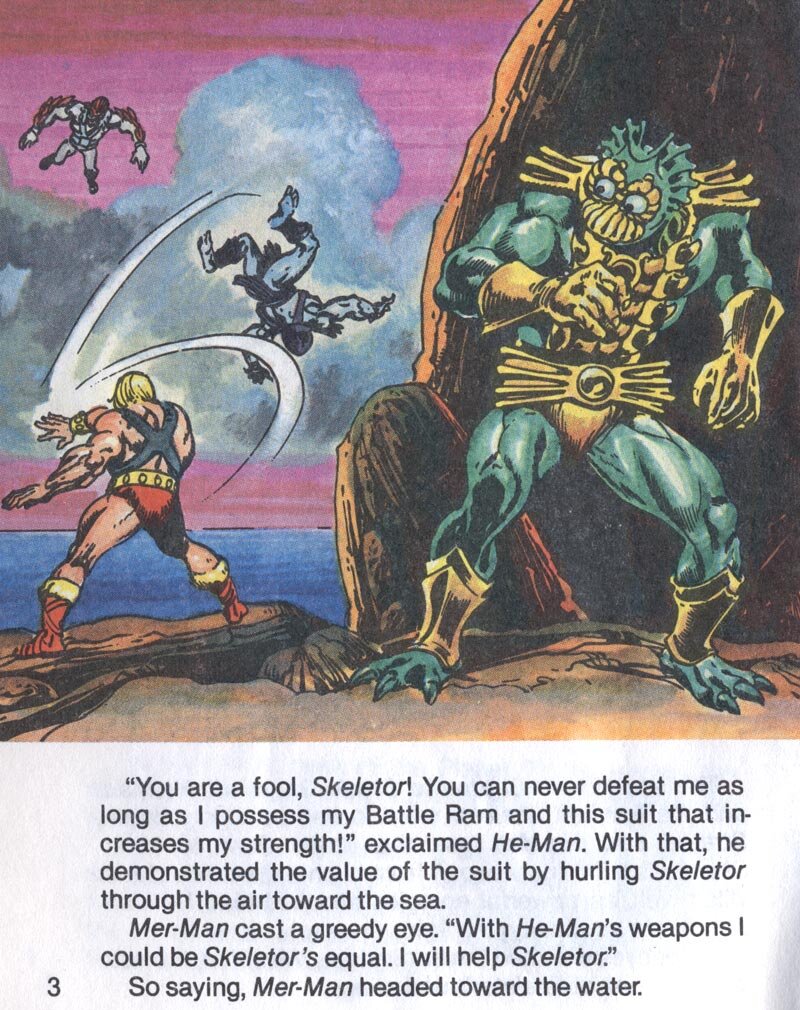
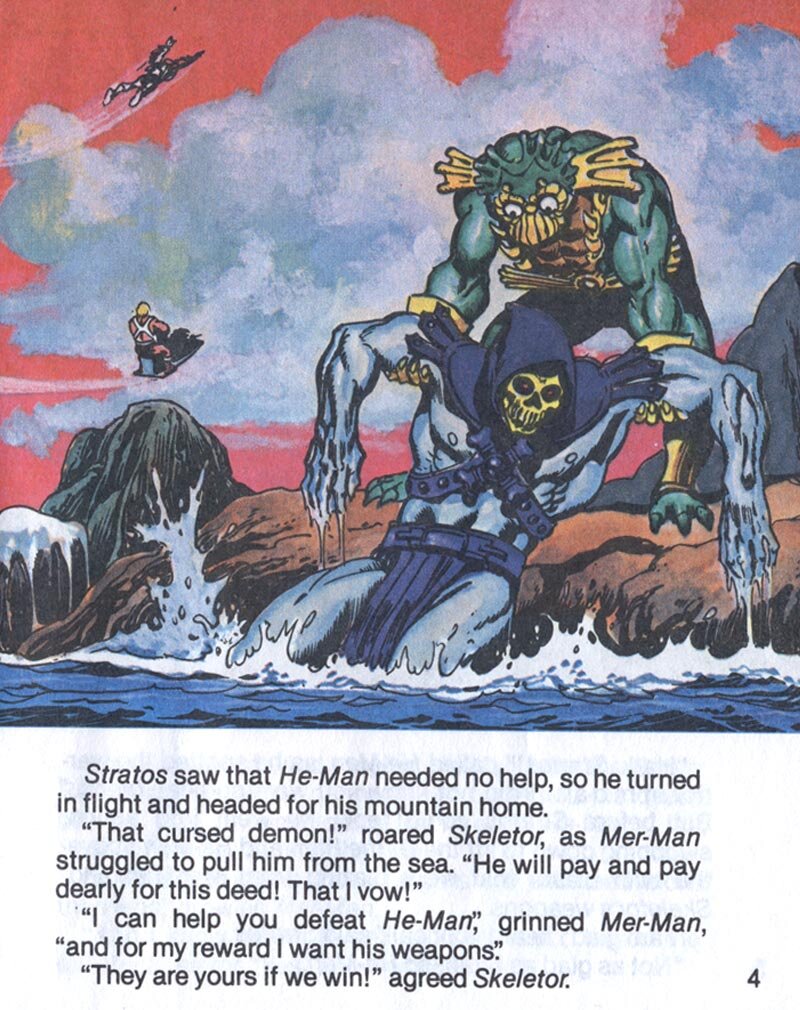
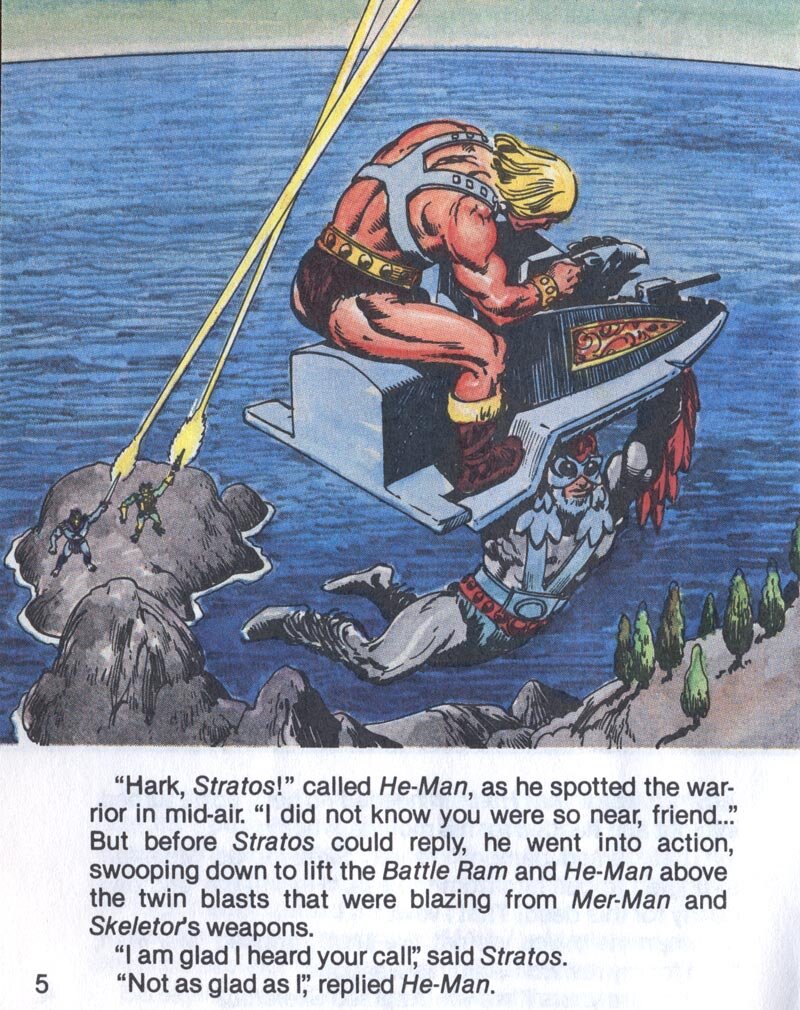
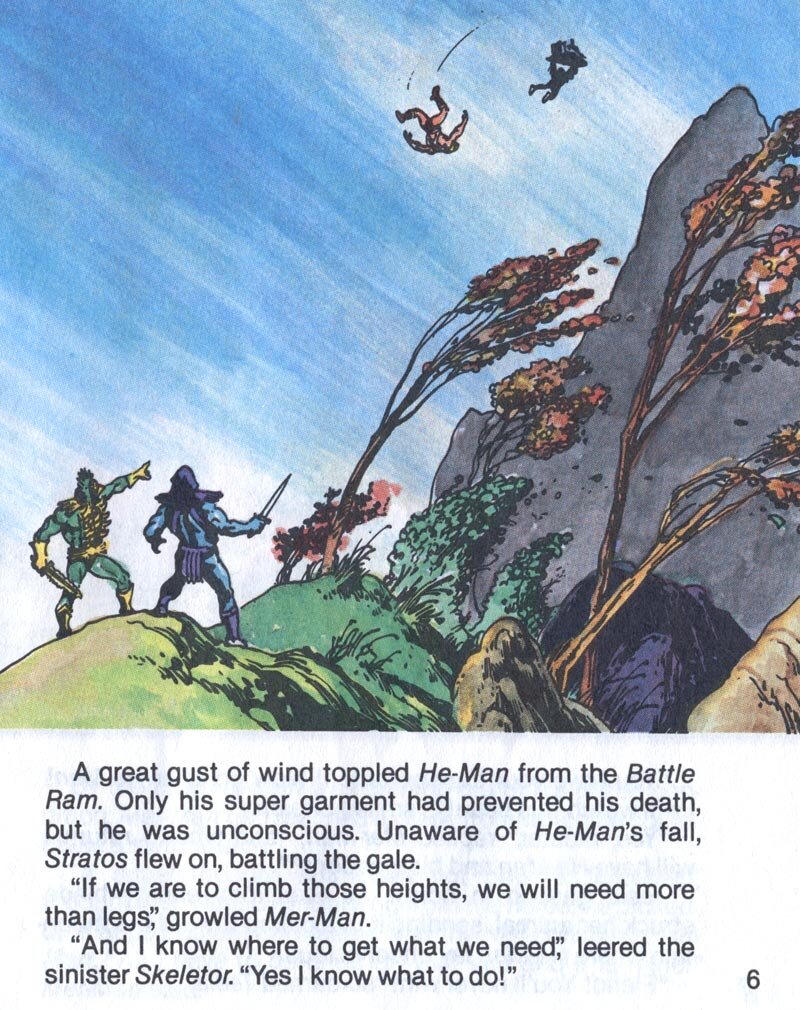
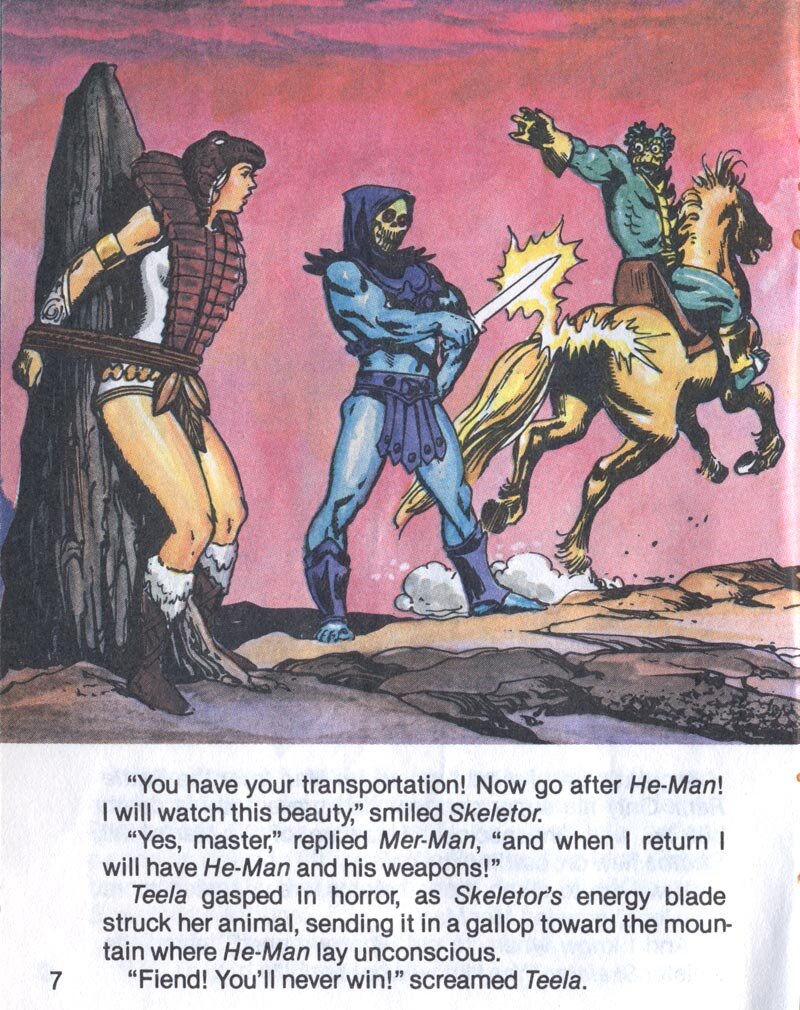
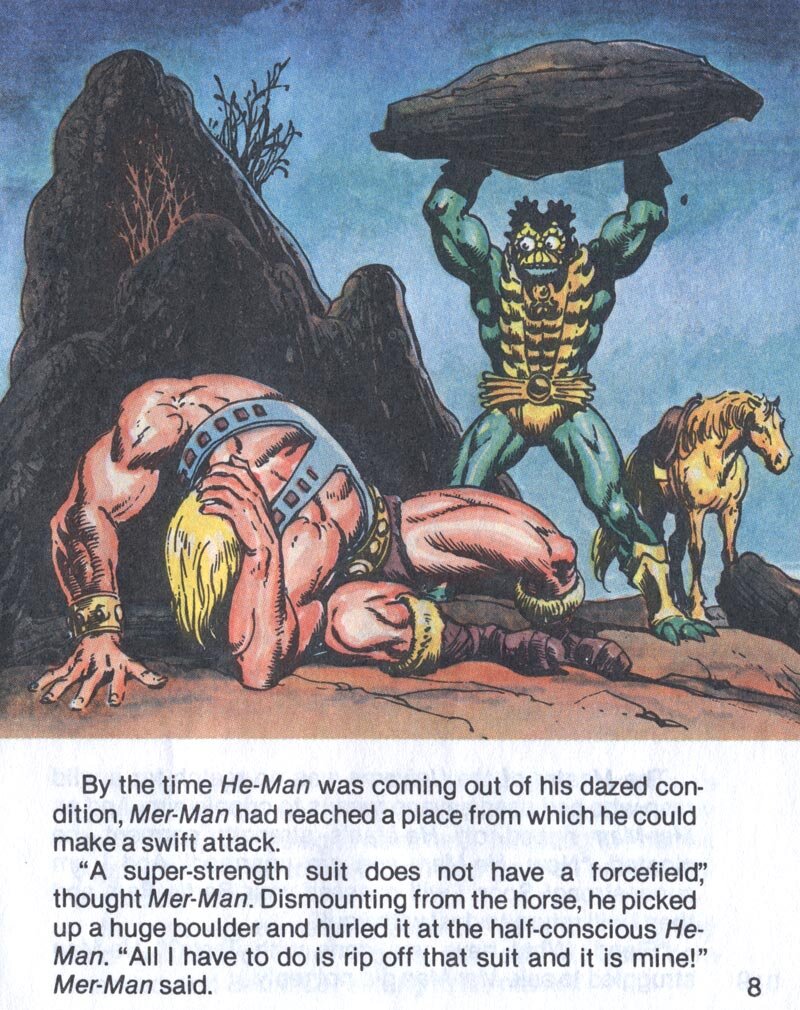
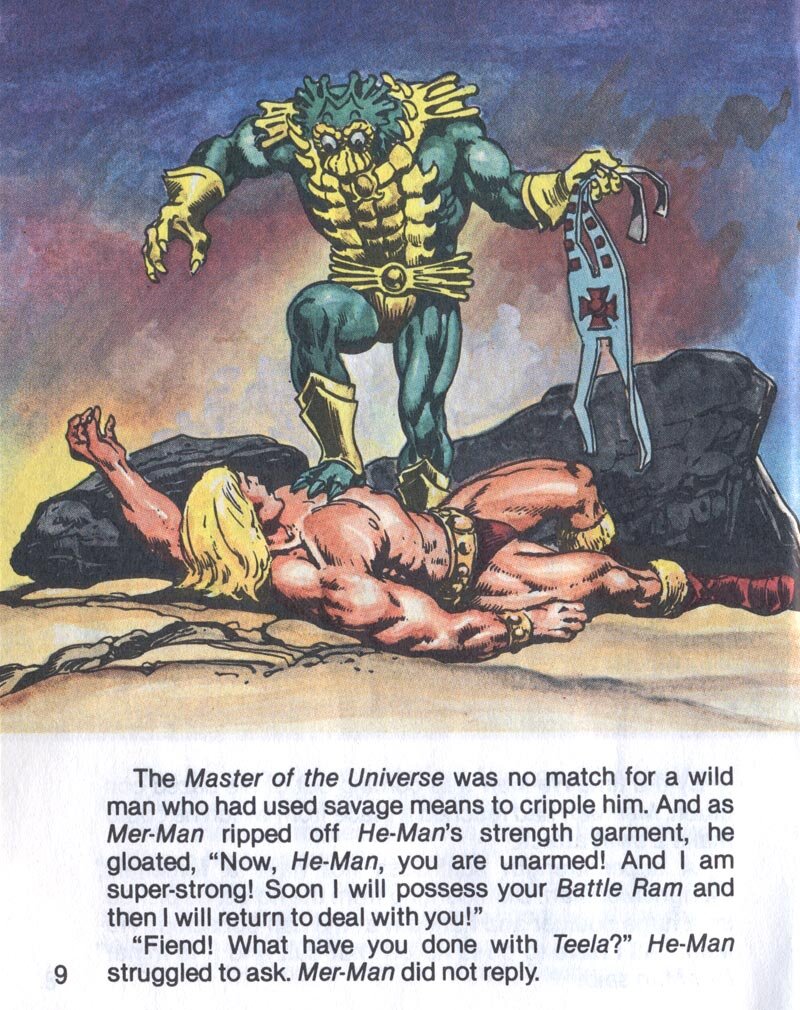

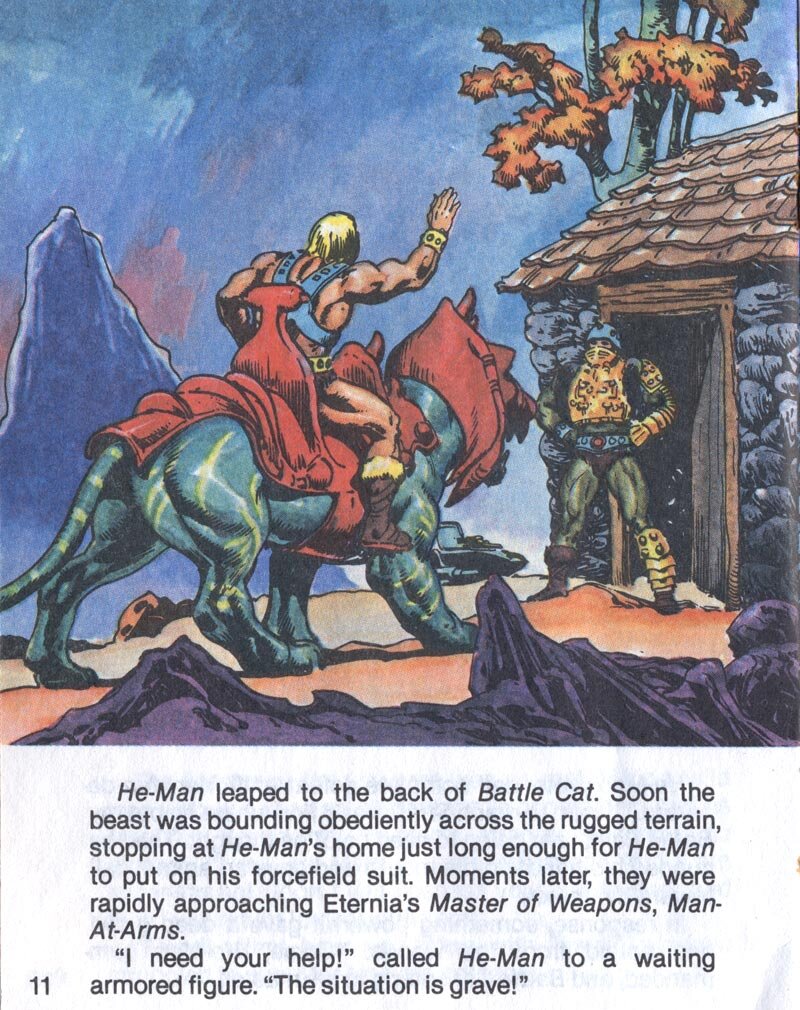
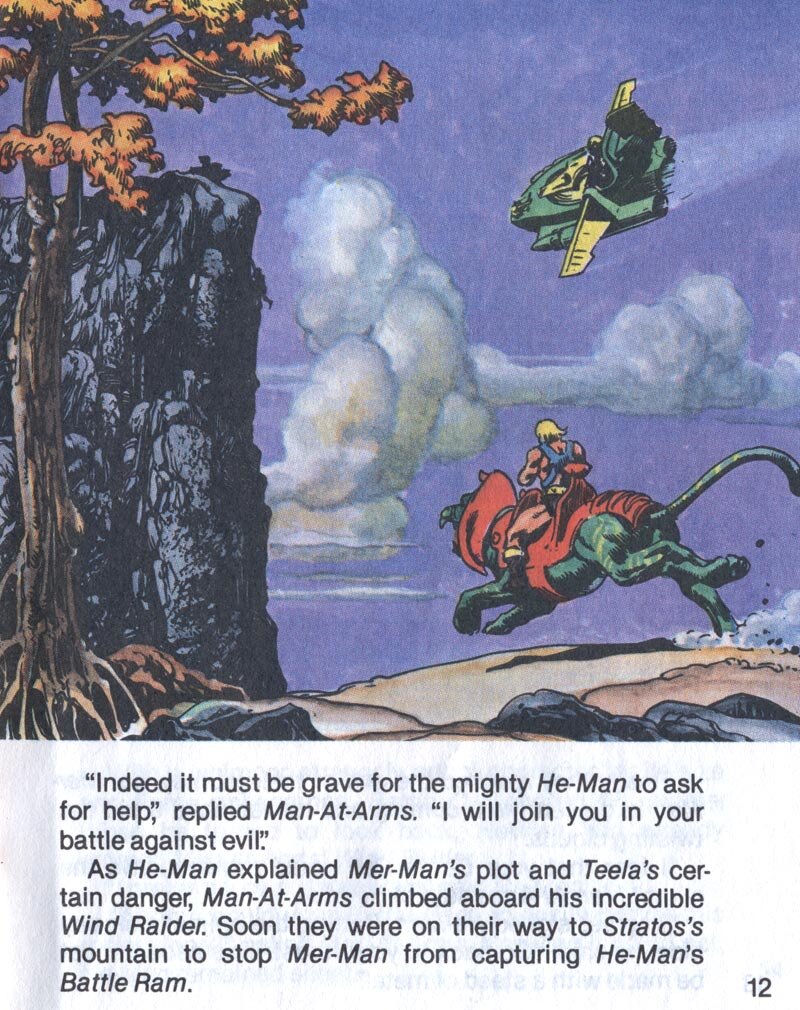
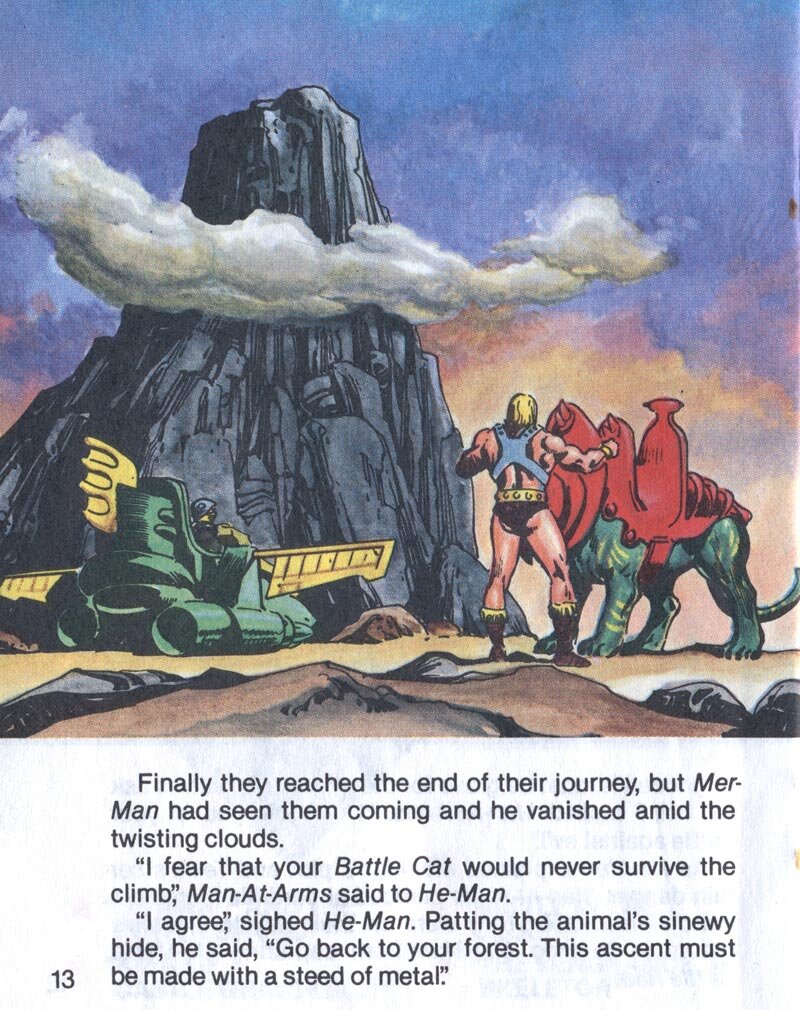
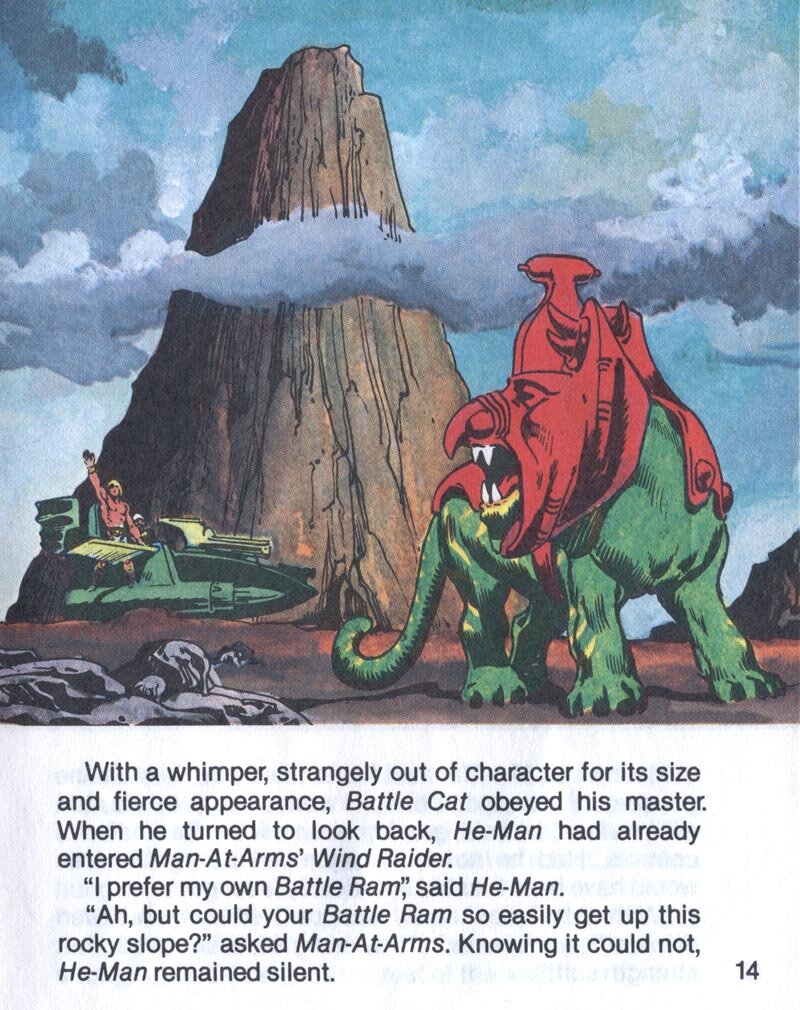

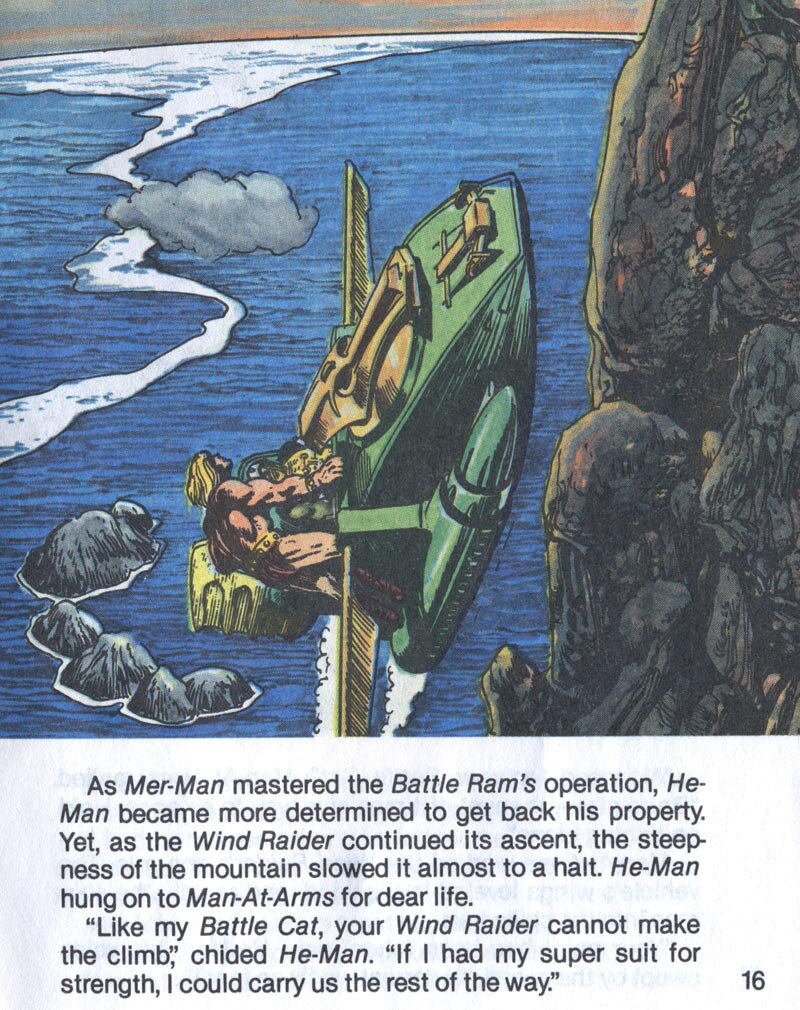
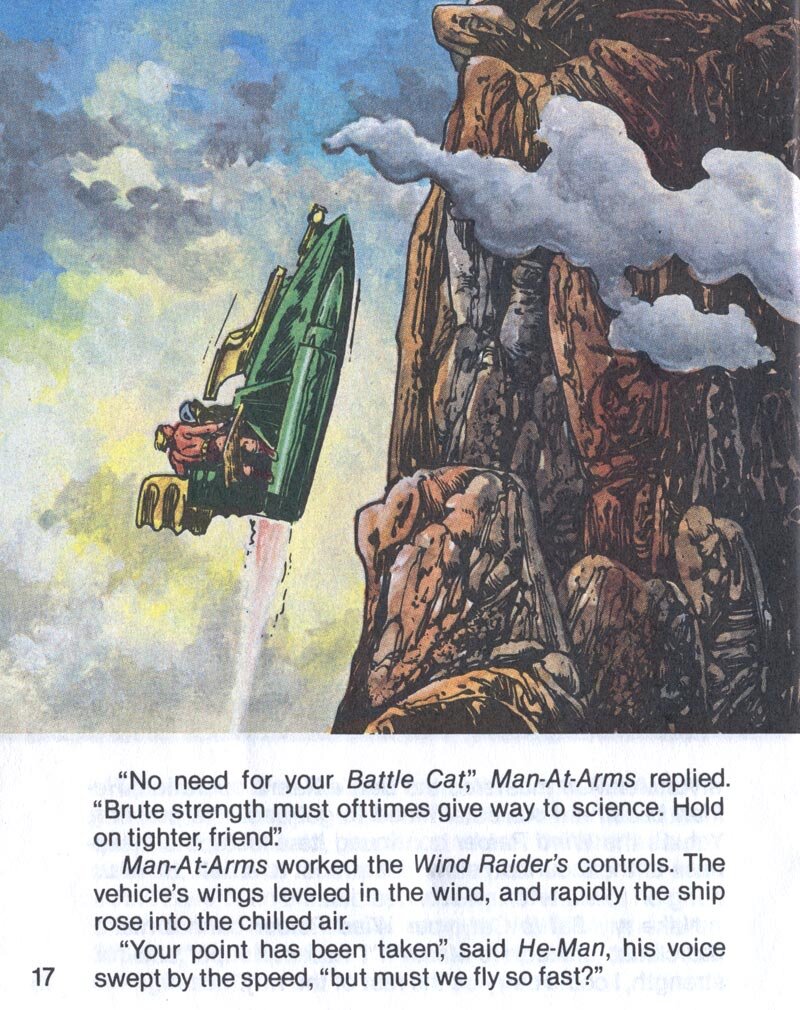
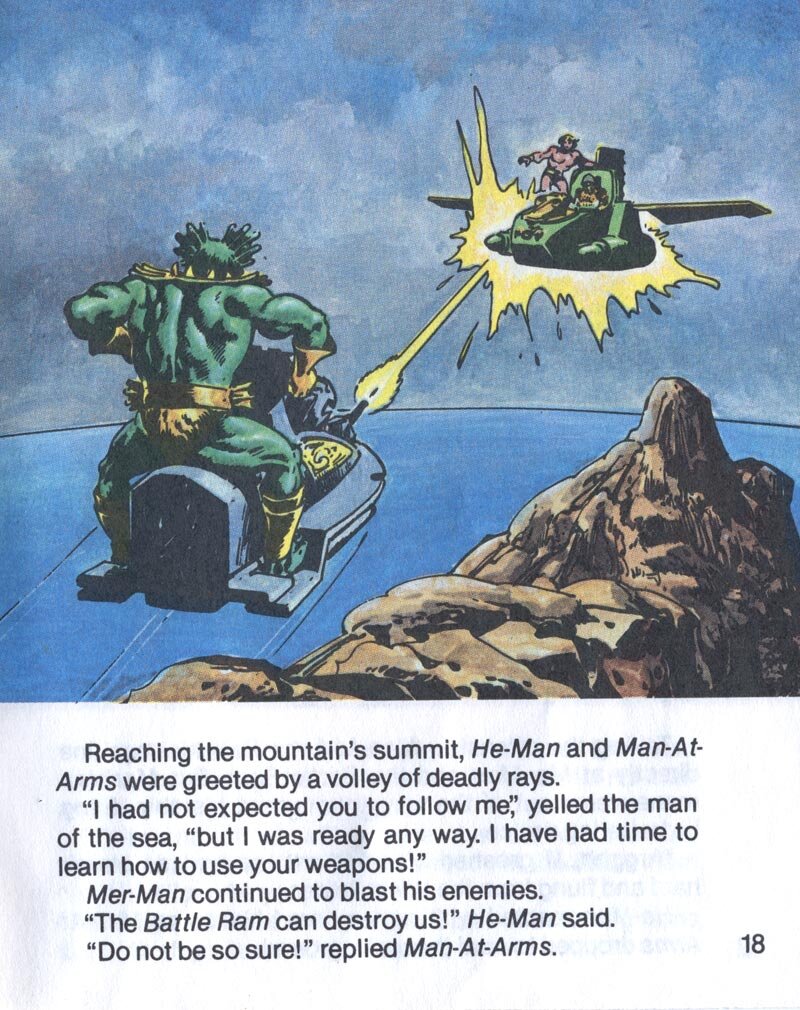
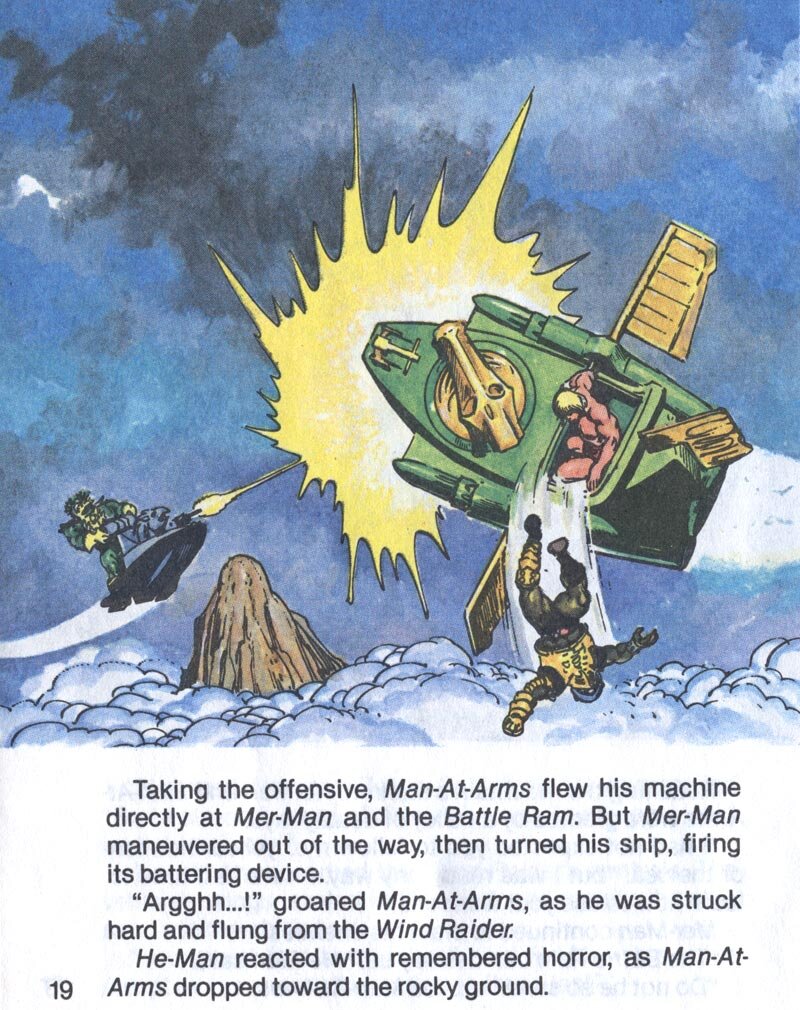
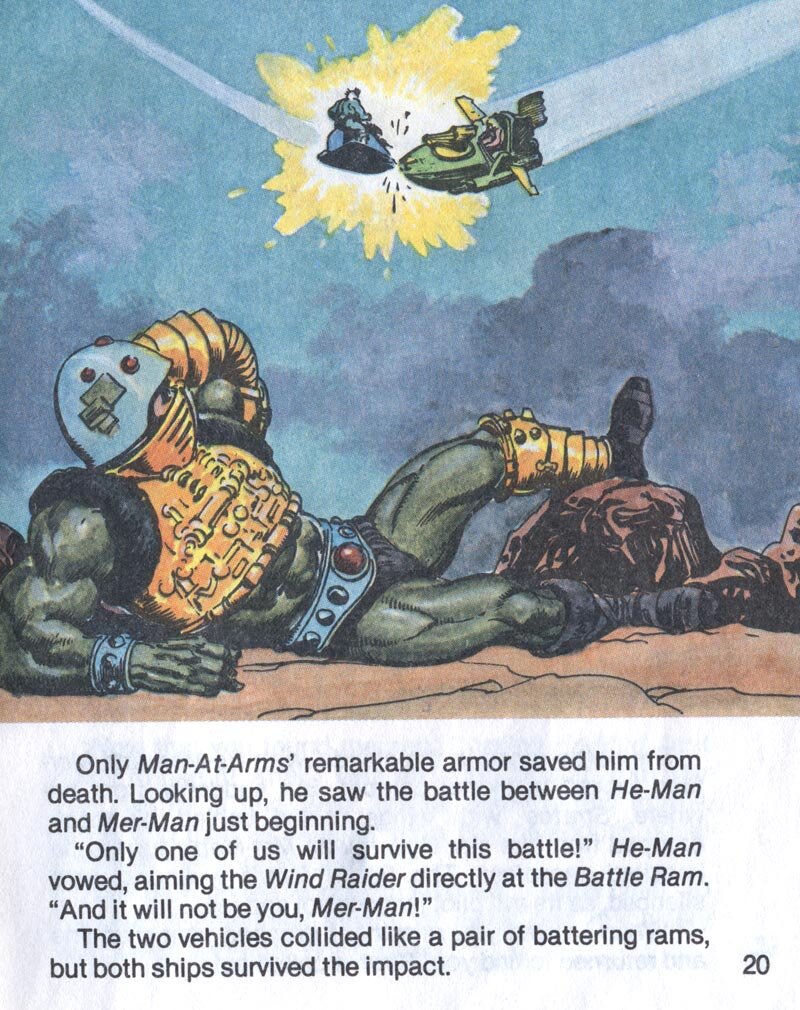
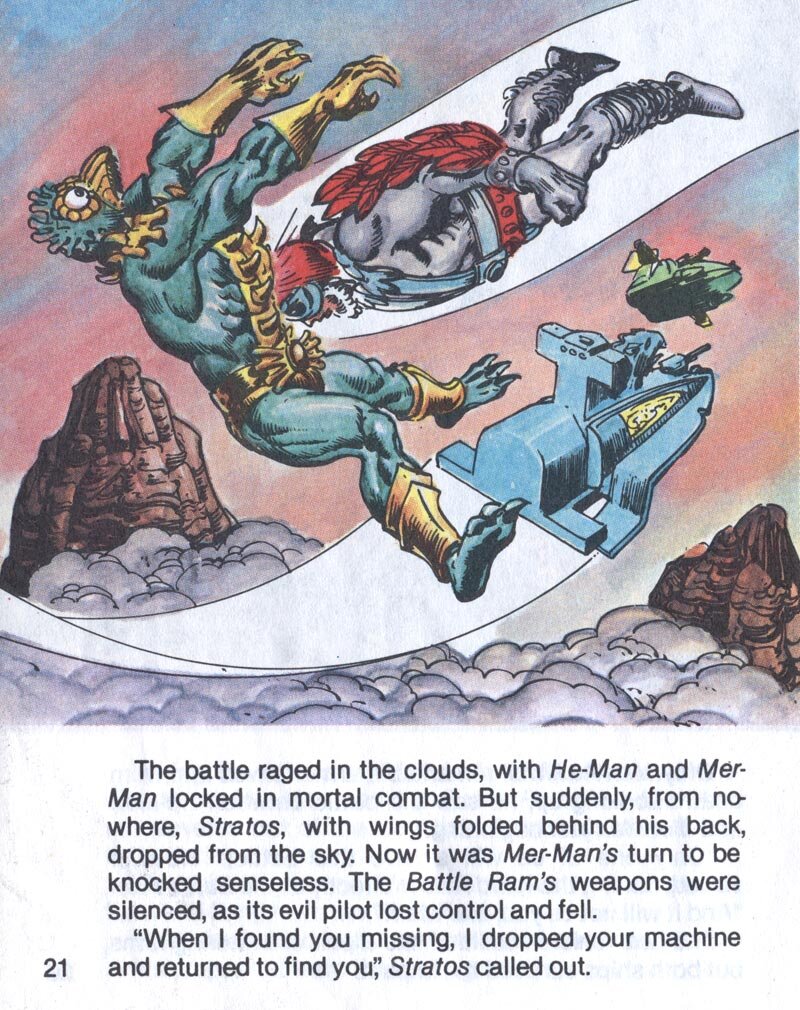
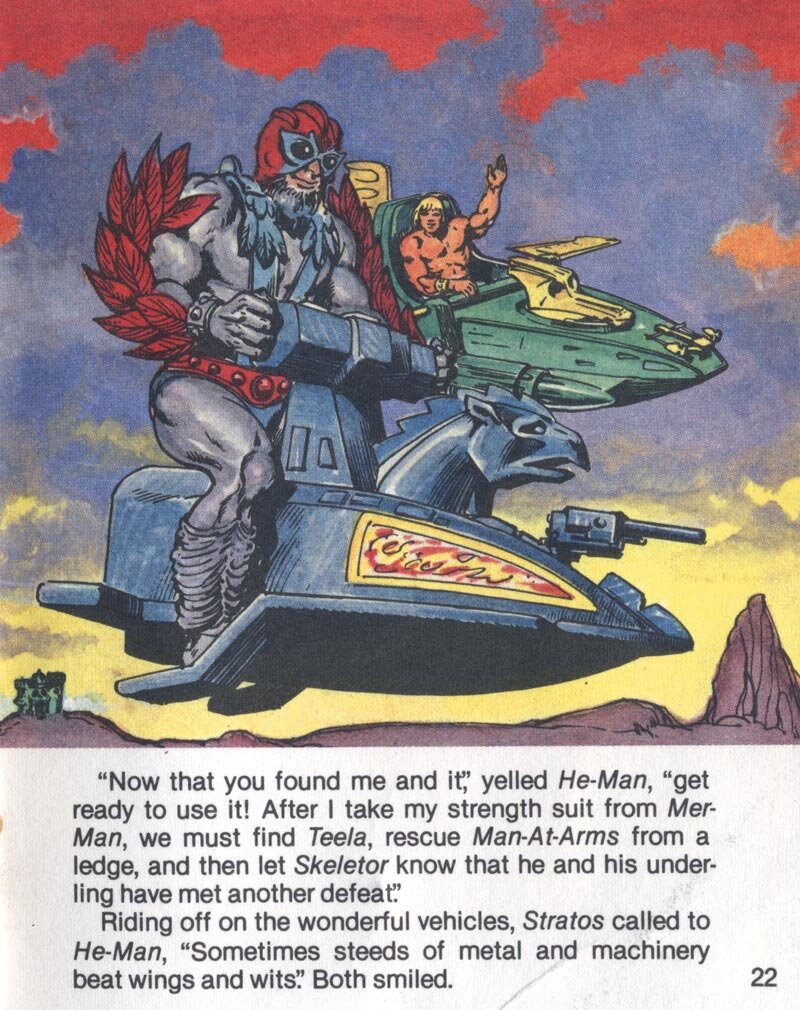
Battle in the Clouds is the best of the four mincomics because it spends time on character development. We also know this is the last of the series because Stratos and Mer-Man are illustrated in their toy colours.
Alcala’s seascapes, landscapes and skyscapes are extraordinarily evocative. The image of Man-At-Arms falling from the Wind Raider is the most dramatic picture of all the minicomics. The art is the best in the set.
Even though Skeletor plays a part in this tale, we get to see Mer-Man as equally merciless and arguably more cunning. This story presents He-Man’s foes as determined and powerful adversaries.
This is a key element of the Masters of the Universe canon which preceded the cartoon. In the minicomics there is real jeopardy; the cartoon presented Skeletor and his minions as hapless fools. It ceased to be a fair fight.
The importance of these minicomics cannot be overstated. They established storytelling and artwork as fundamental to the success of the original toy line, and they continue to inspire later iterations.

